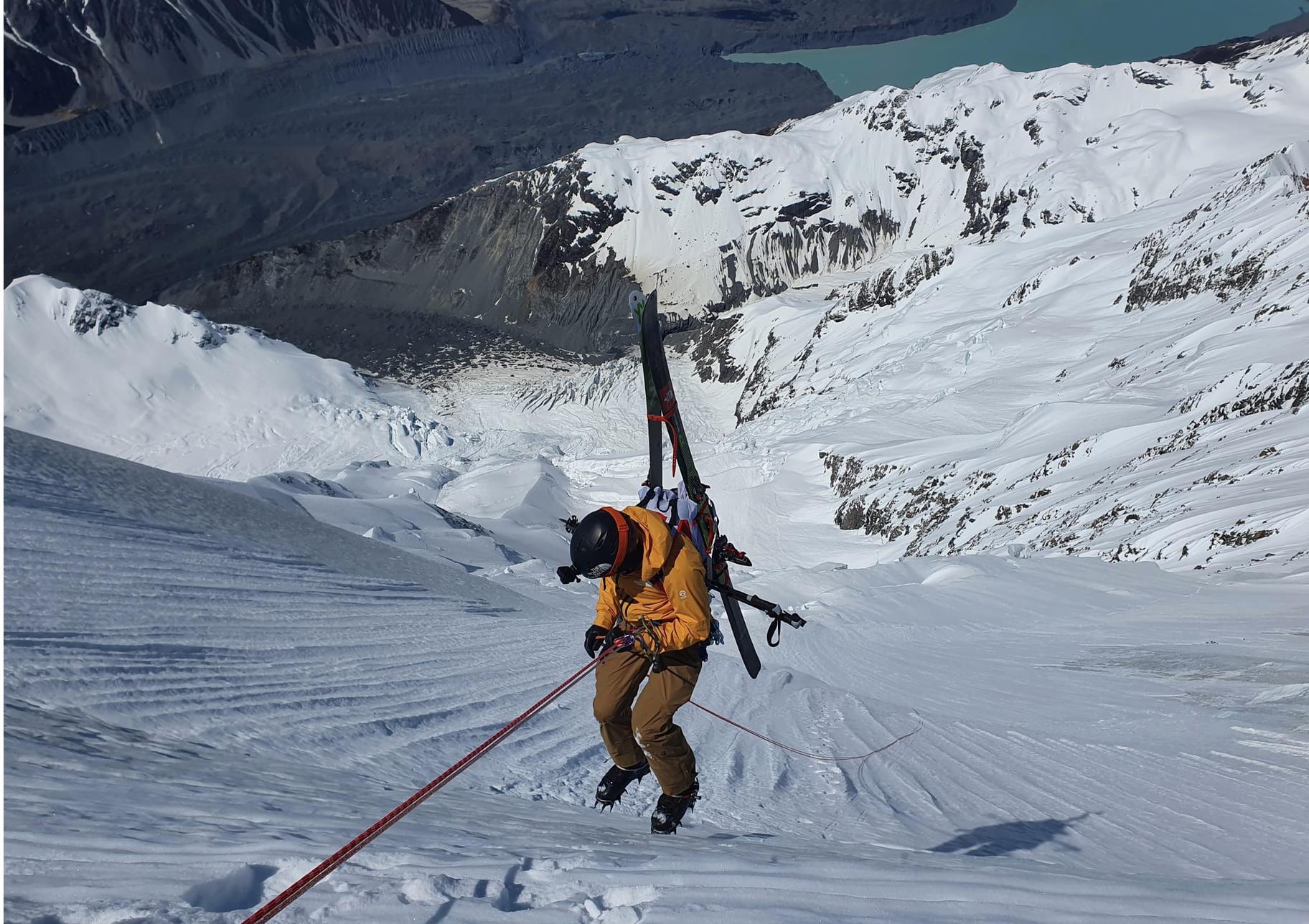
The Voice of the Adventure Community
Bevan Smith




Bevan Smith


What is Adventure Voice?
Why are we doing it?
Who’s it for?
How can you help?


Short online surveys
Shapes the work of MSC
Build better resources for the community

MSC uses Insights to develop resources
Historically, detailed insights come from incidents. But 98.5% of outdoor adventures end without incident.
Others are using research panels, such as at Colorado Avalanche Information Centre
Short surveys have better response rates, and this enables targeted responses
Enables MSC to provide resources that are genuinely helpful for New Zealanders heading outdoors.
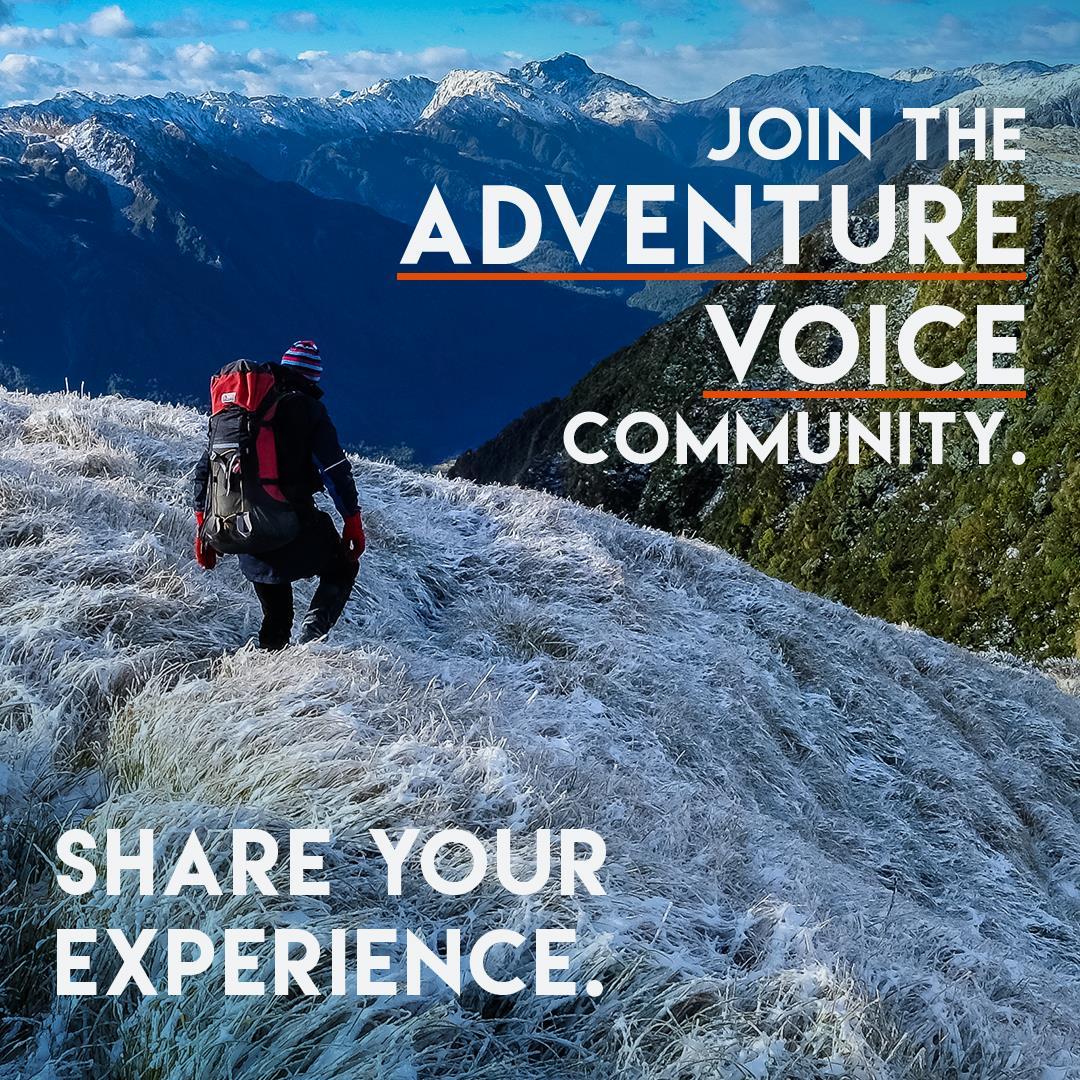
We want to hear your voice…
• Anyone who heads outdoors
• Diversity of background
• Beginners to Experts
• All land-based outdoor recreation It’s essential the community is reflective of the wider population of outdoor recreation participants.


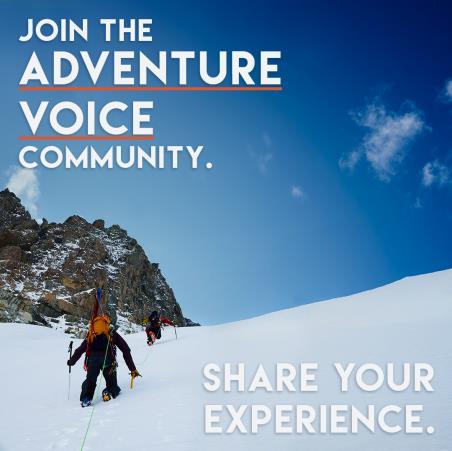
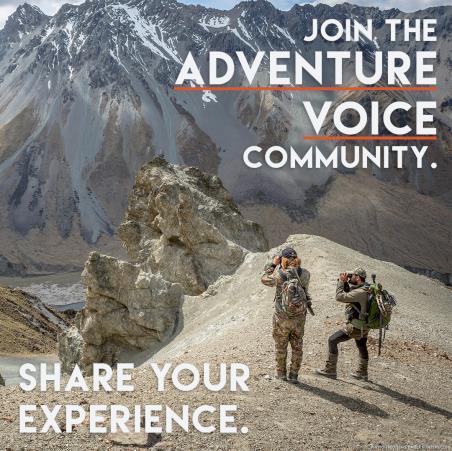
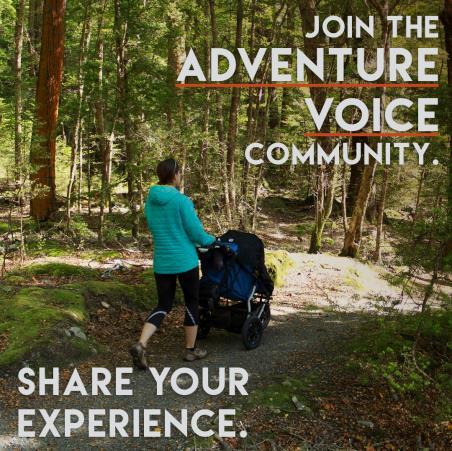
3-minute registration survey
Monthly invitations to complete surveys.
At least 3 winners every month just for being a member.
Plus, you’ll have the chance to win additional spot prizes when you complete short online surveys!
Receive exclusive community updates on our research and insights.
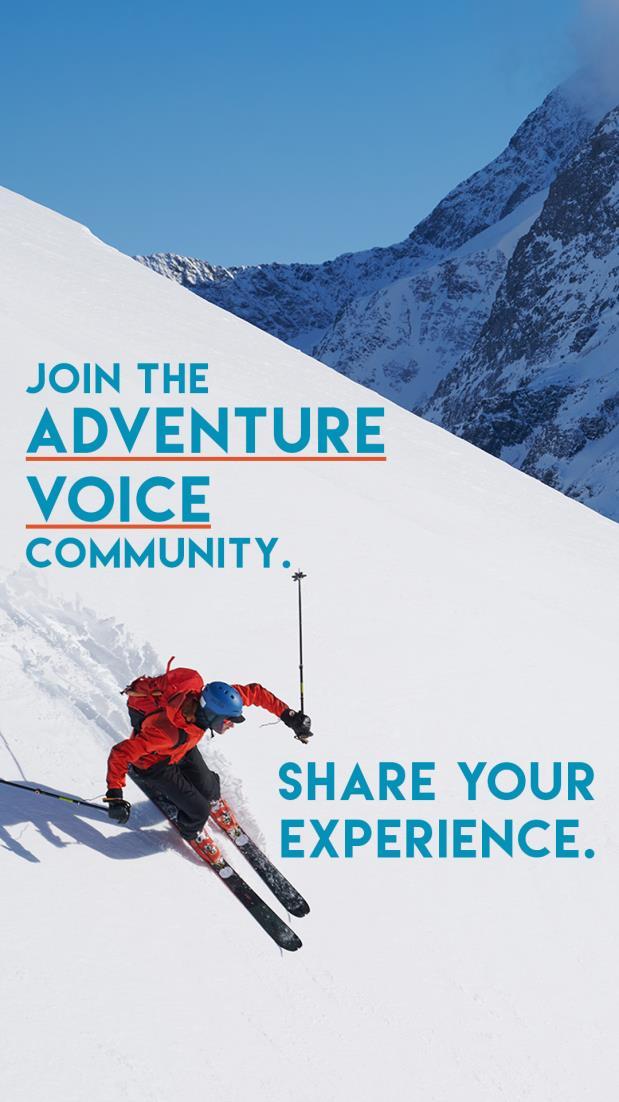
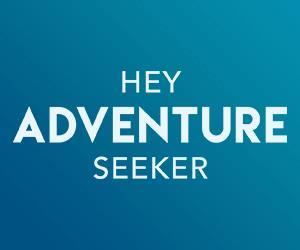


Sign up at Adventurevoice.nz
Share it with your friends and family
Contact us for assets you can share on your website or social channels.



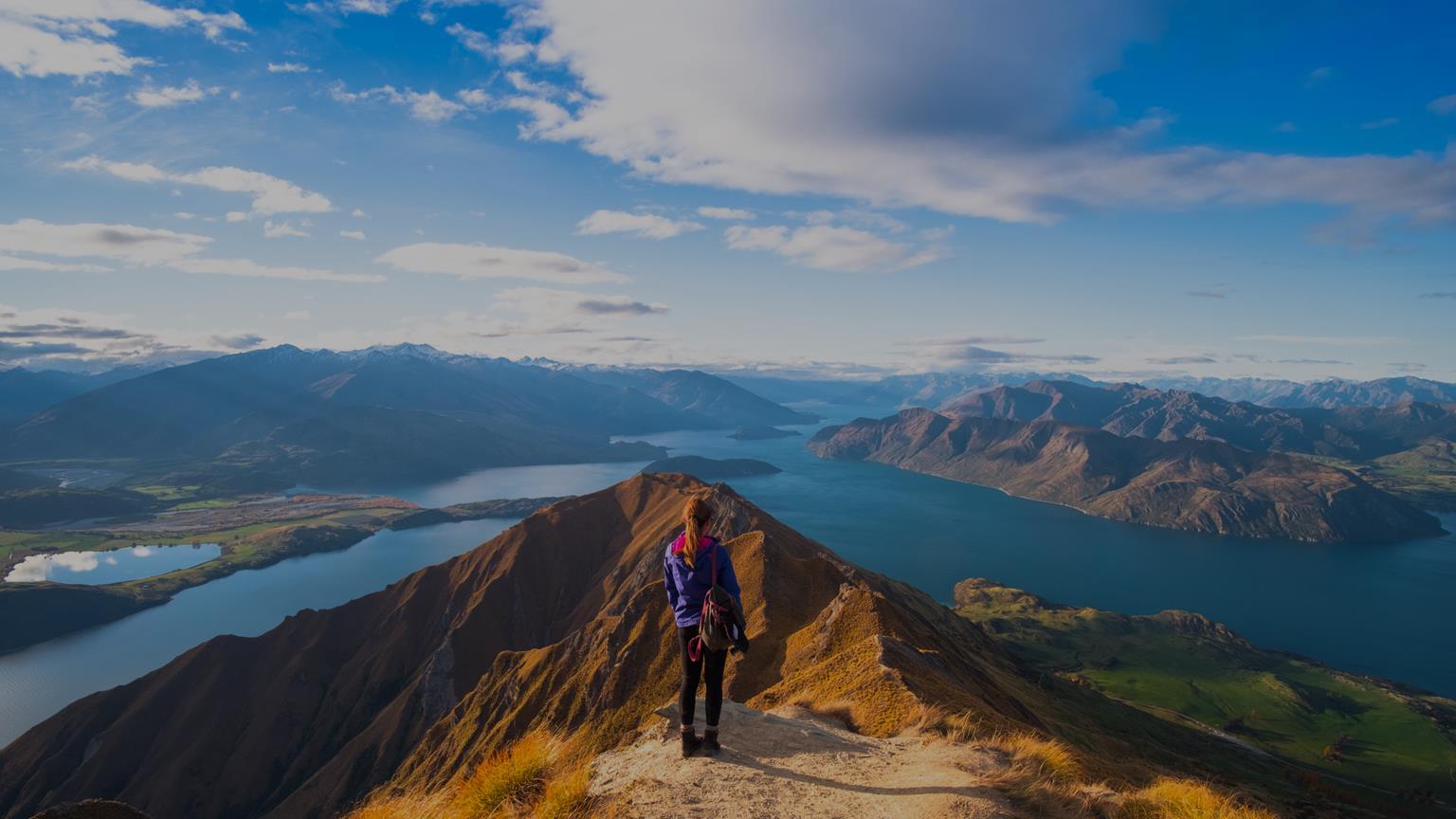
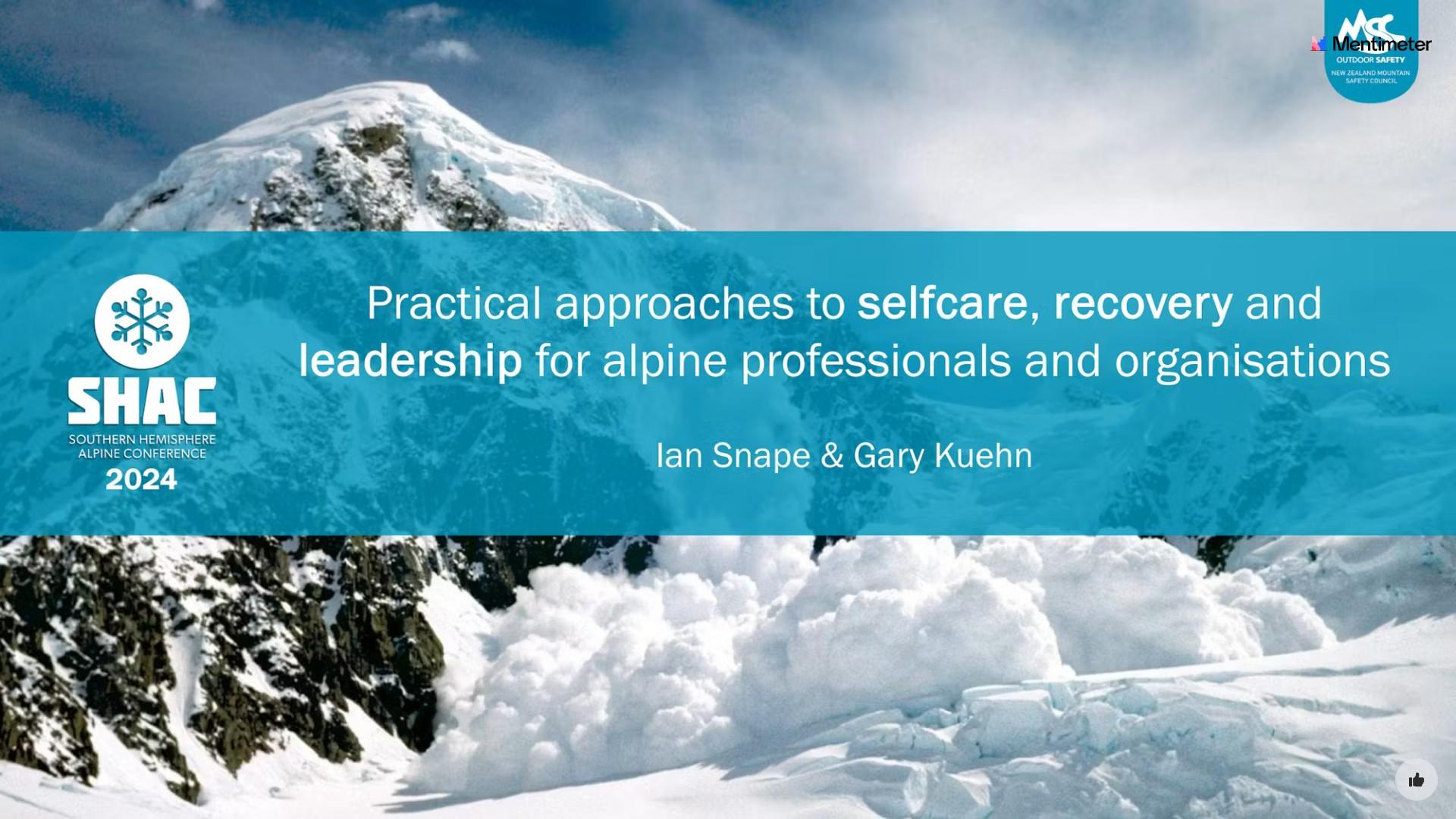

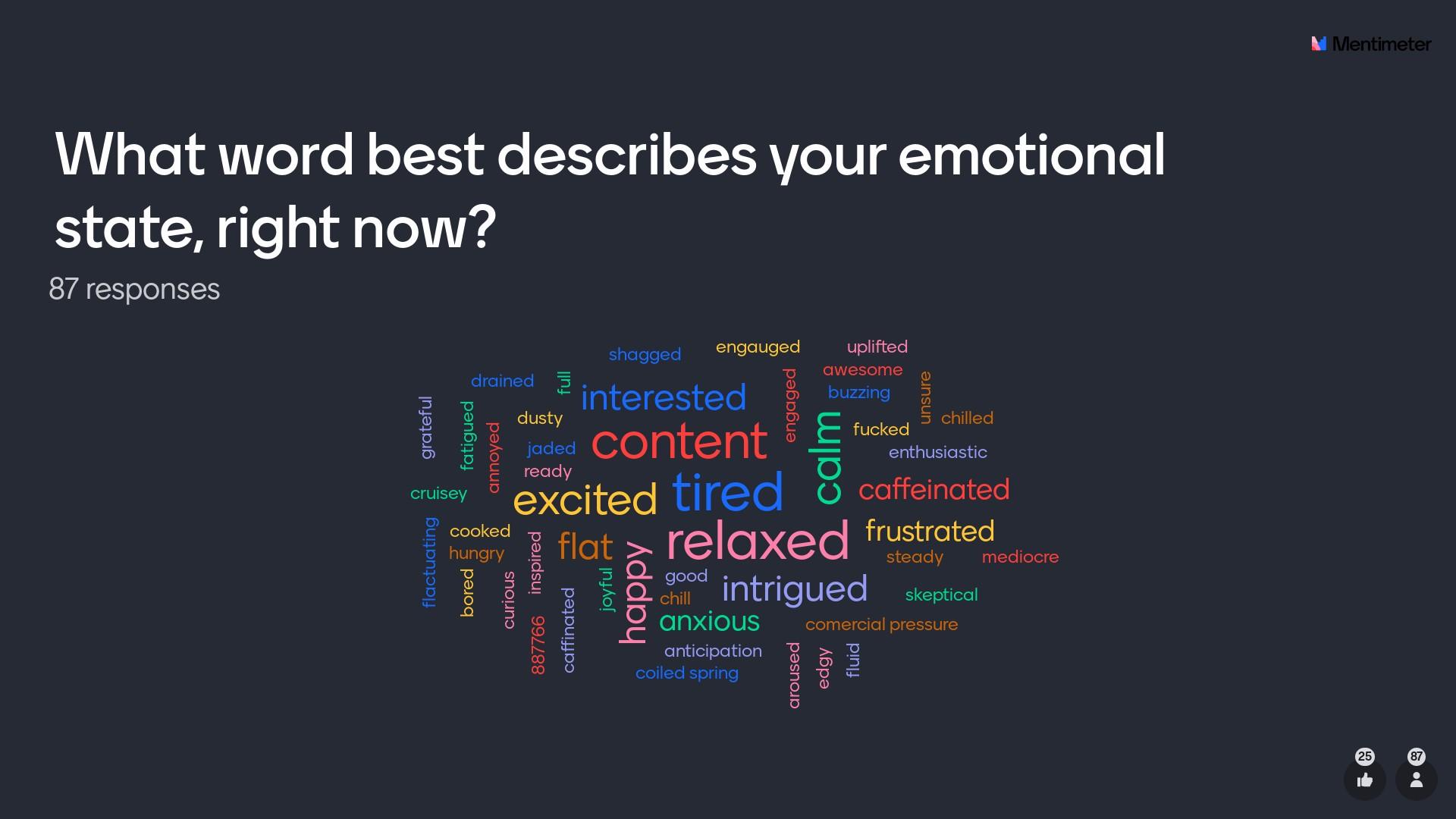

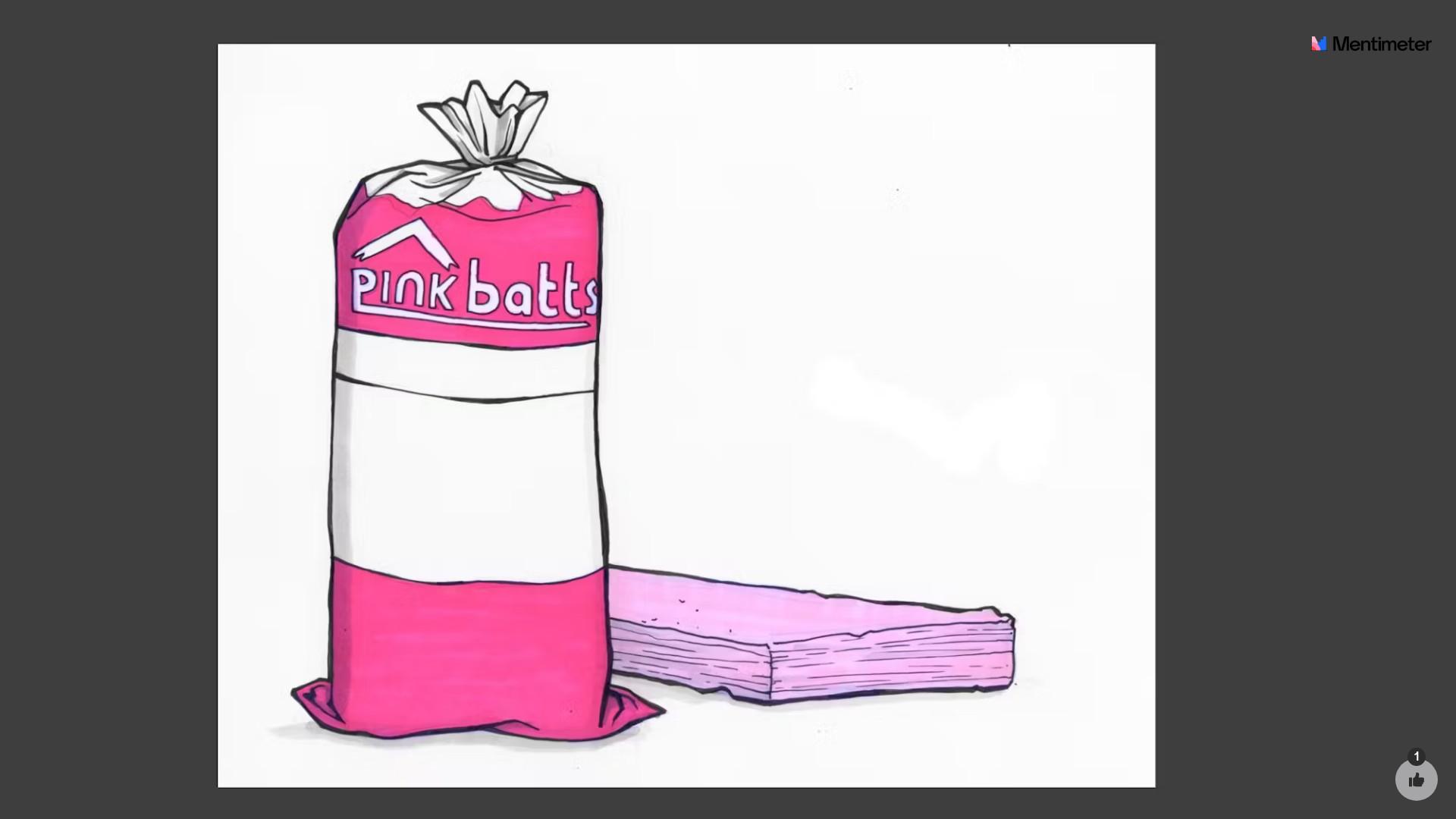
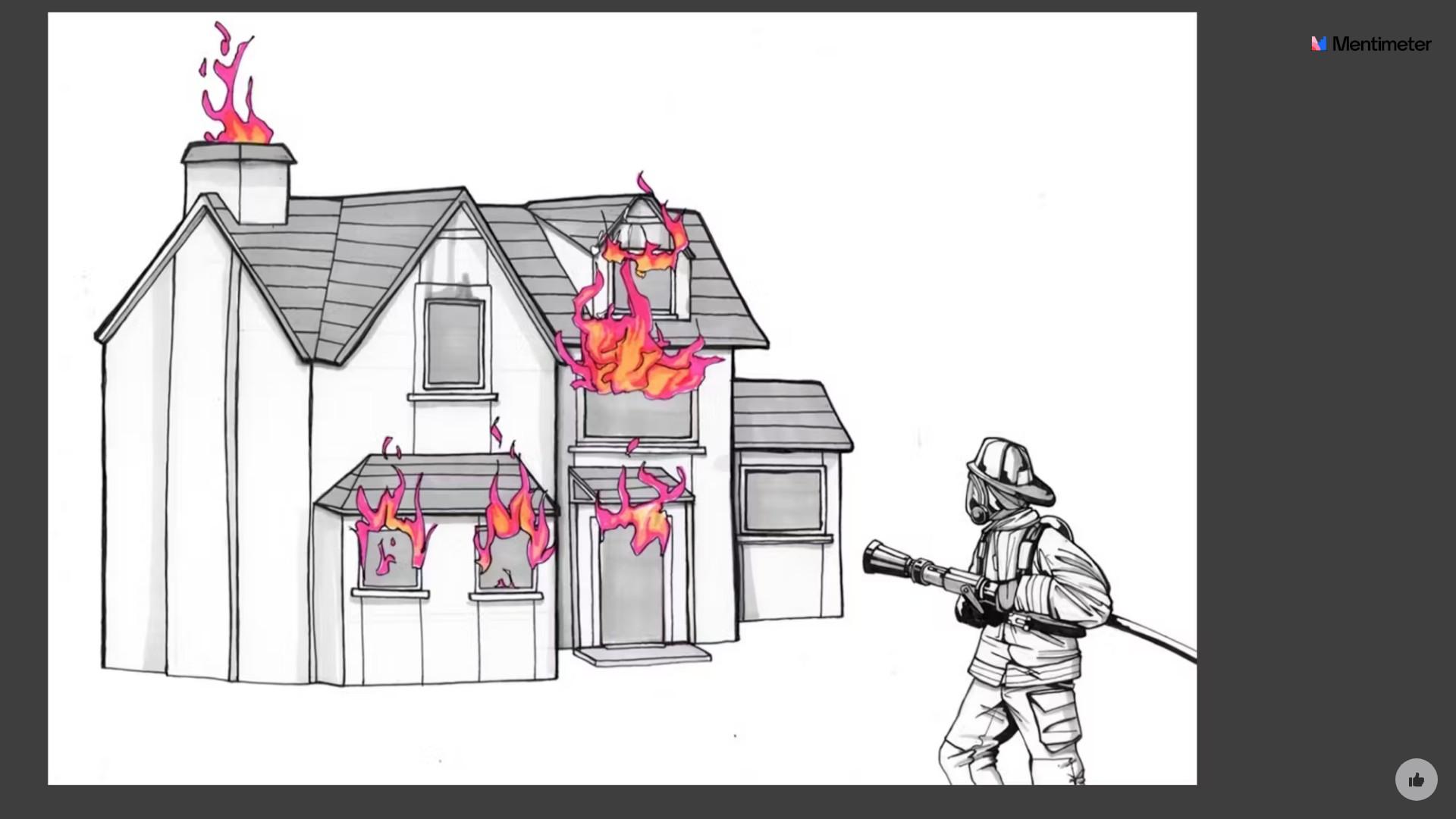

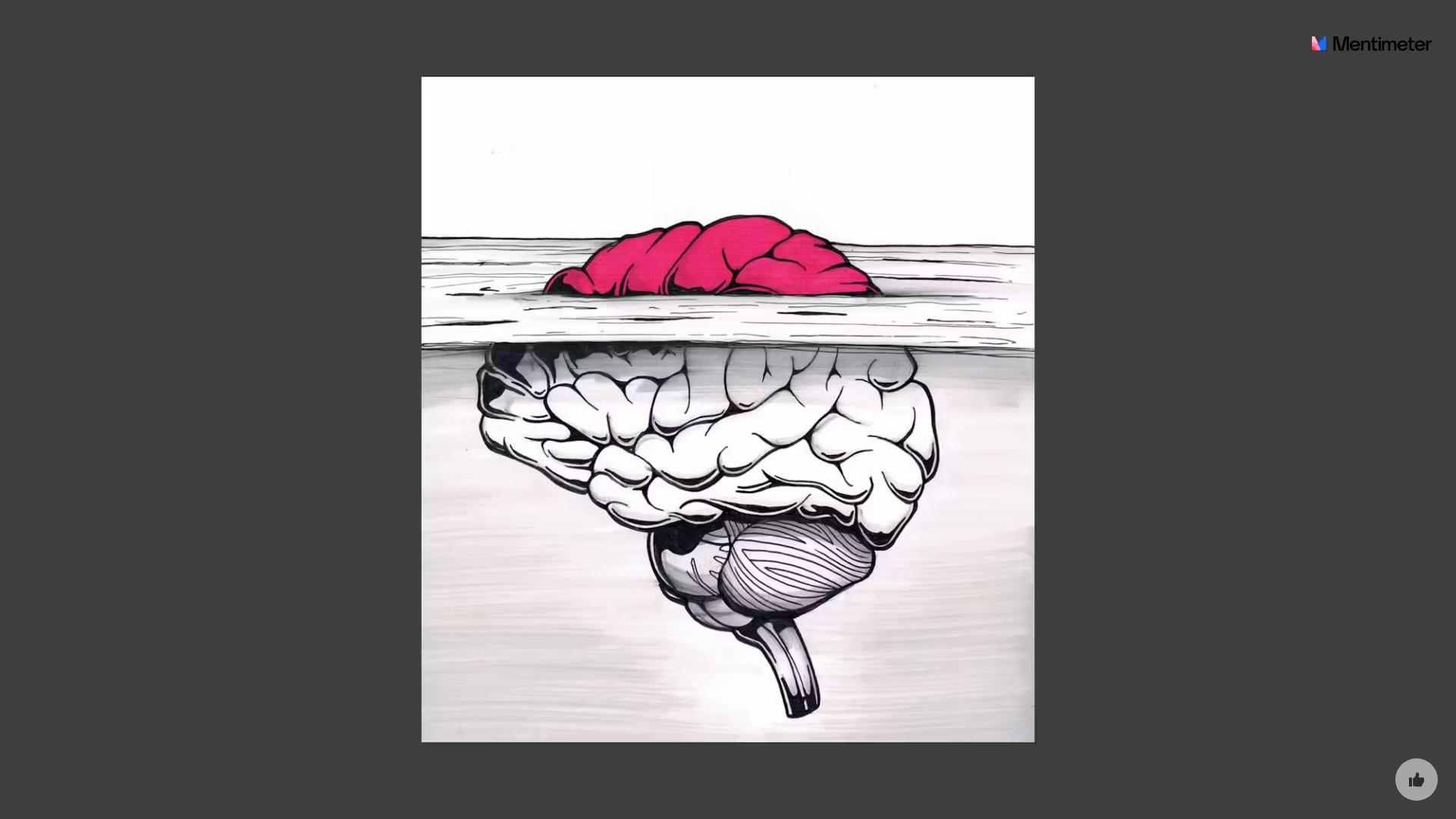
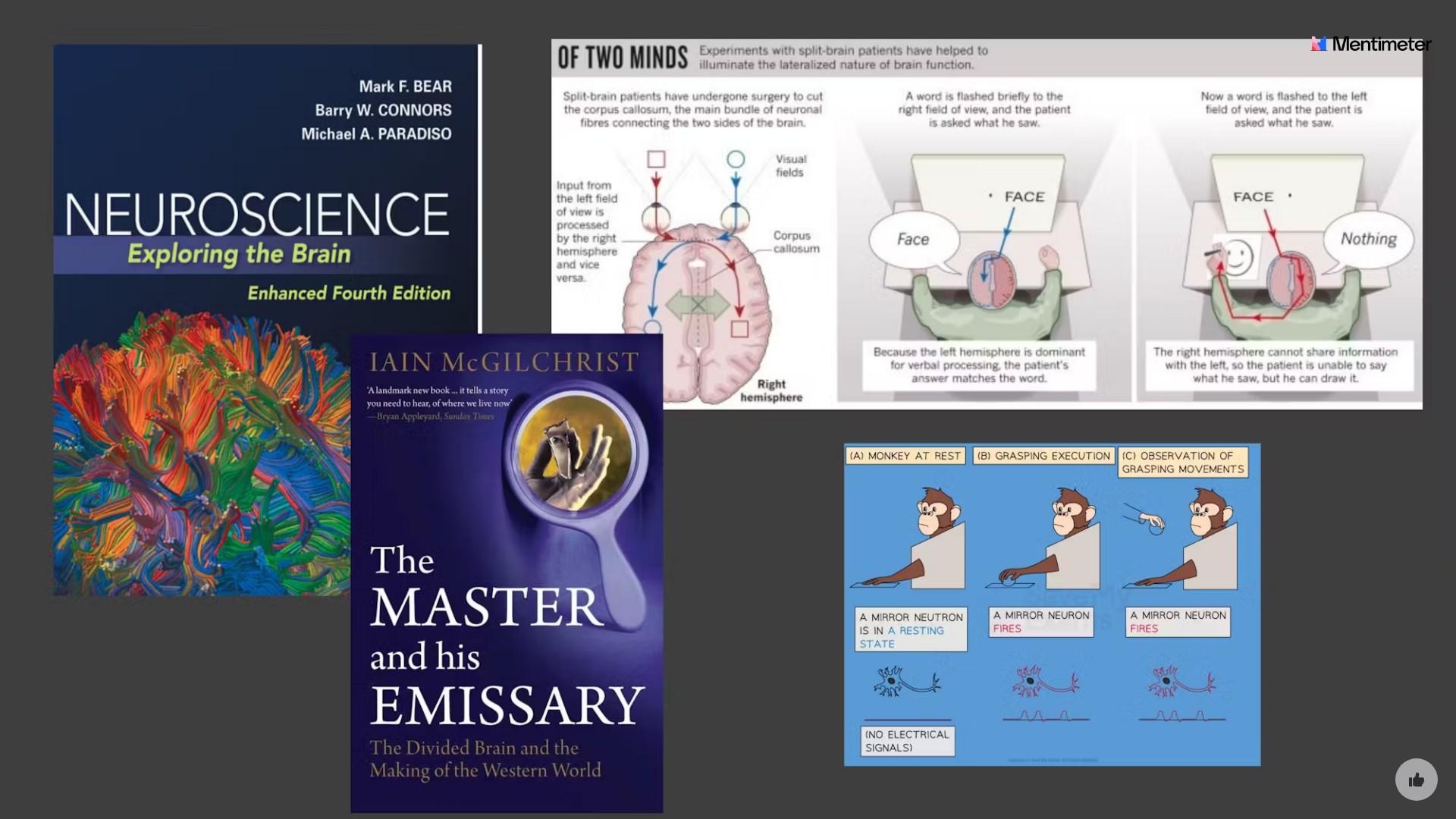
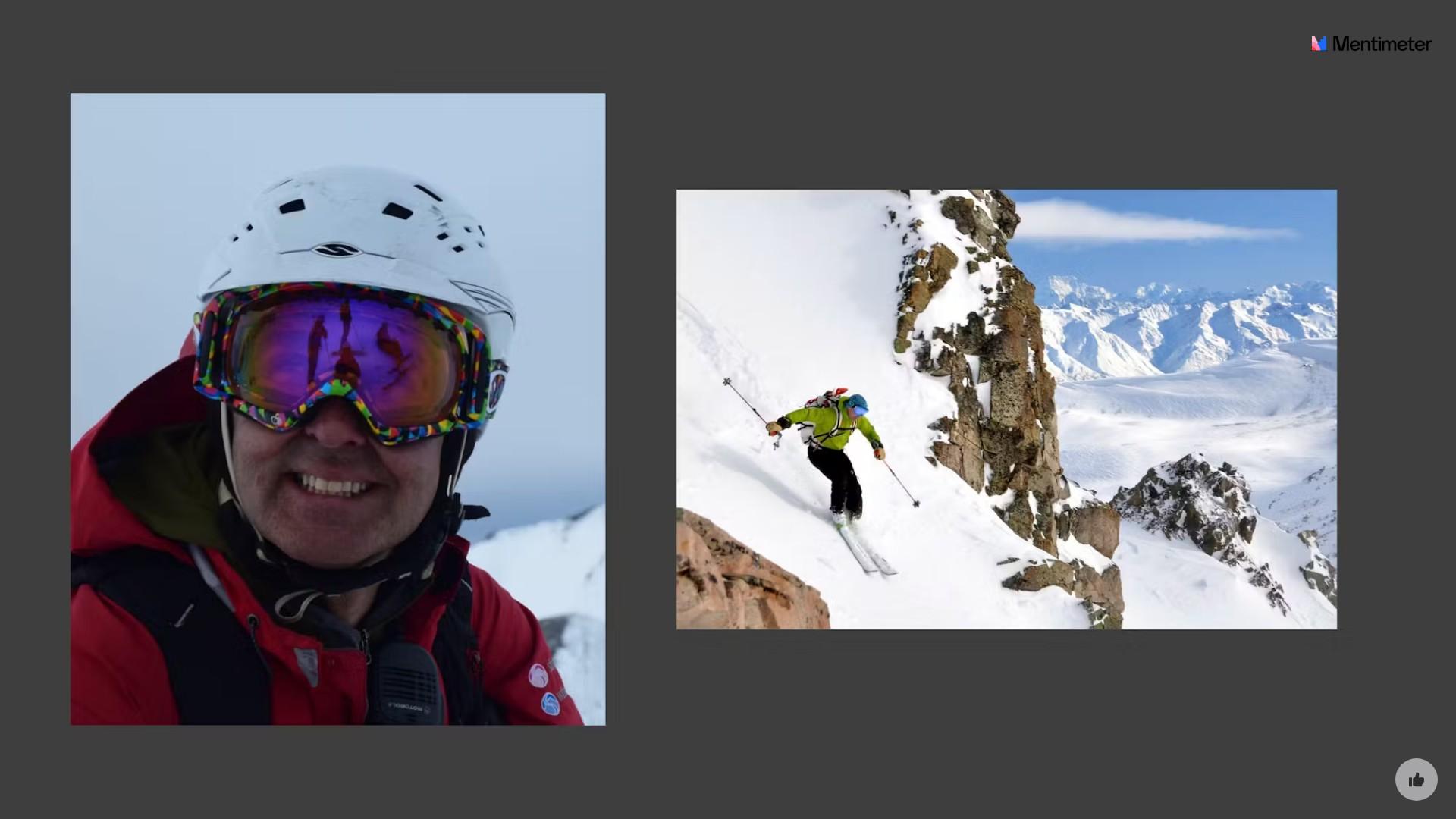
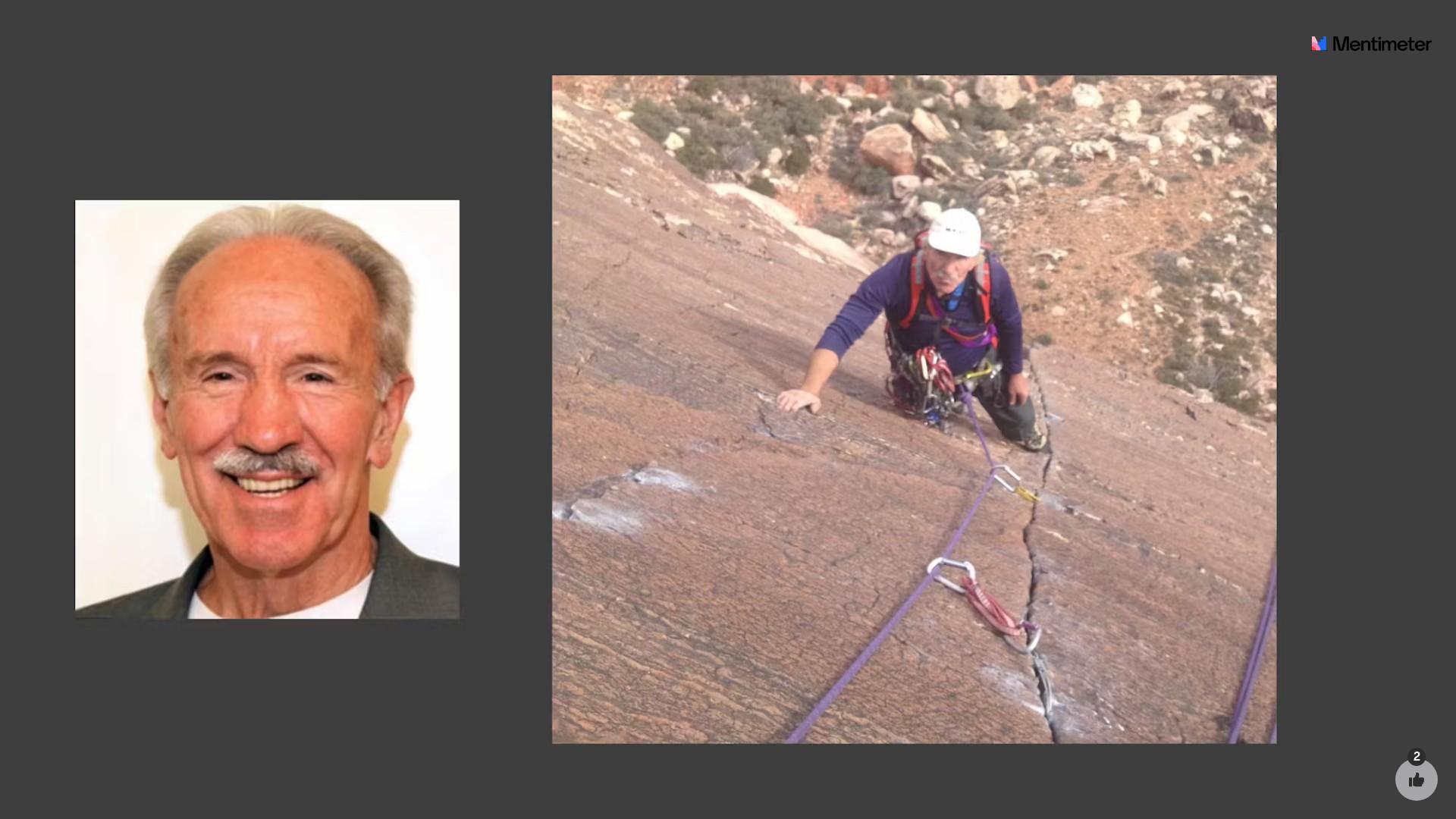
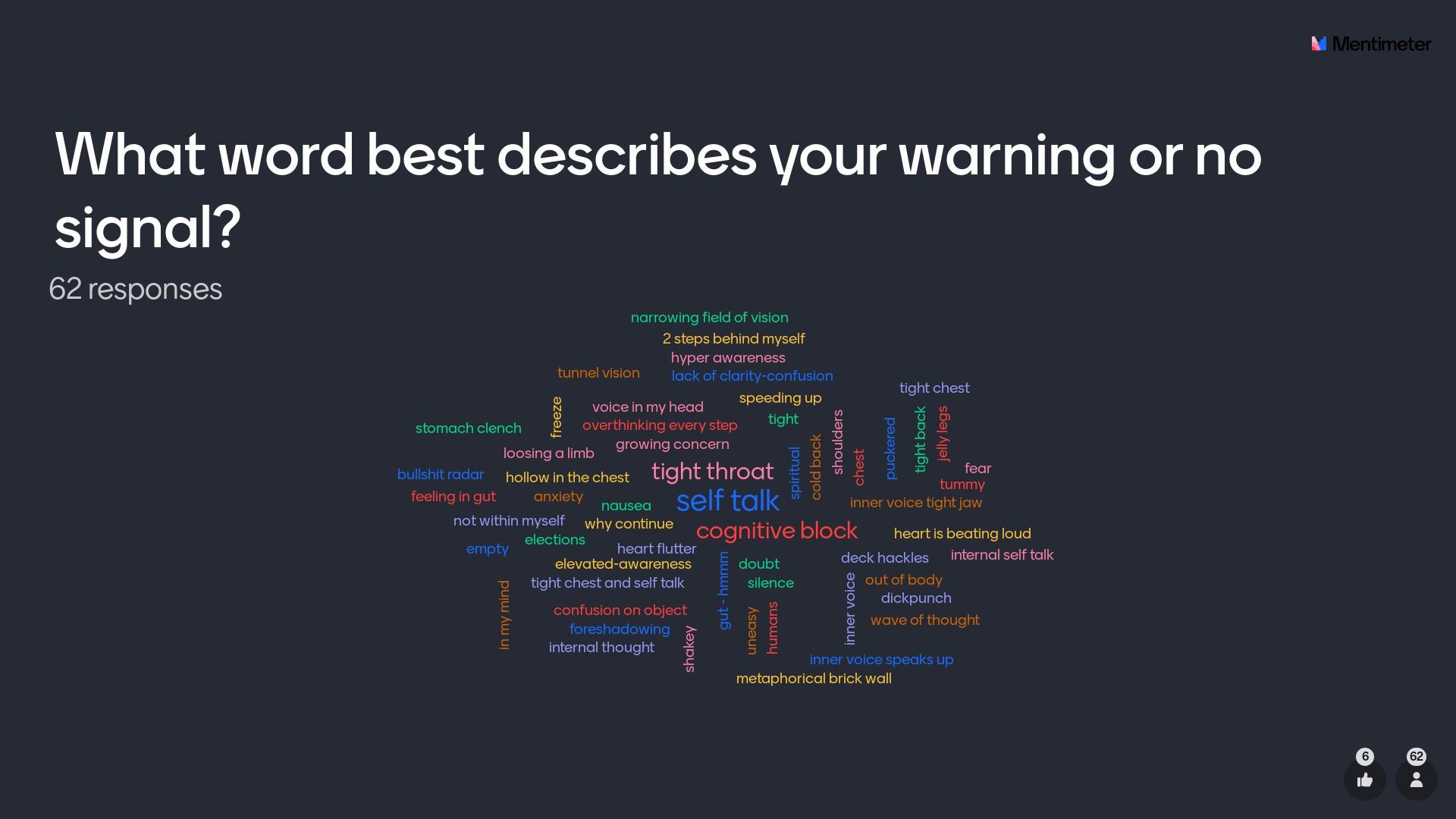
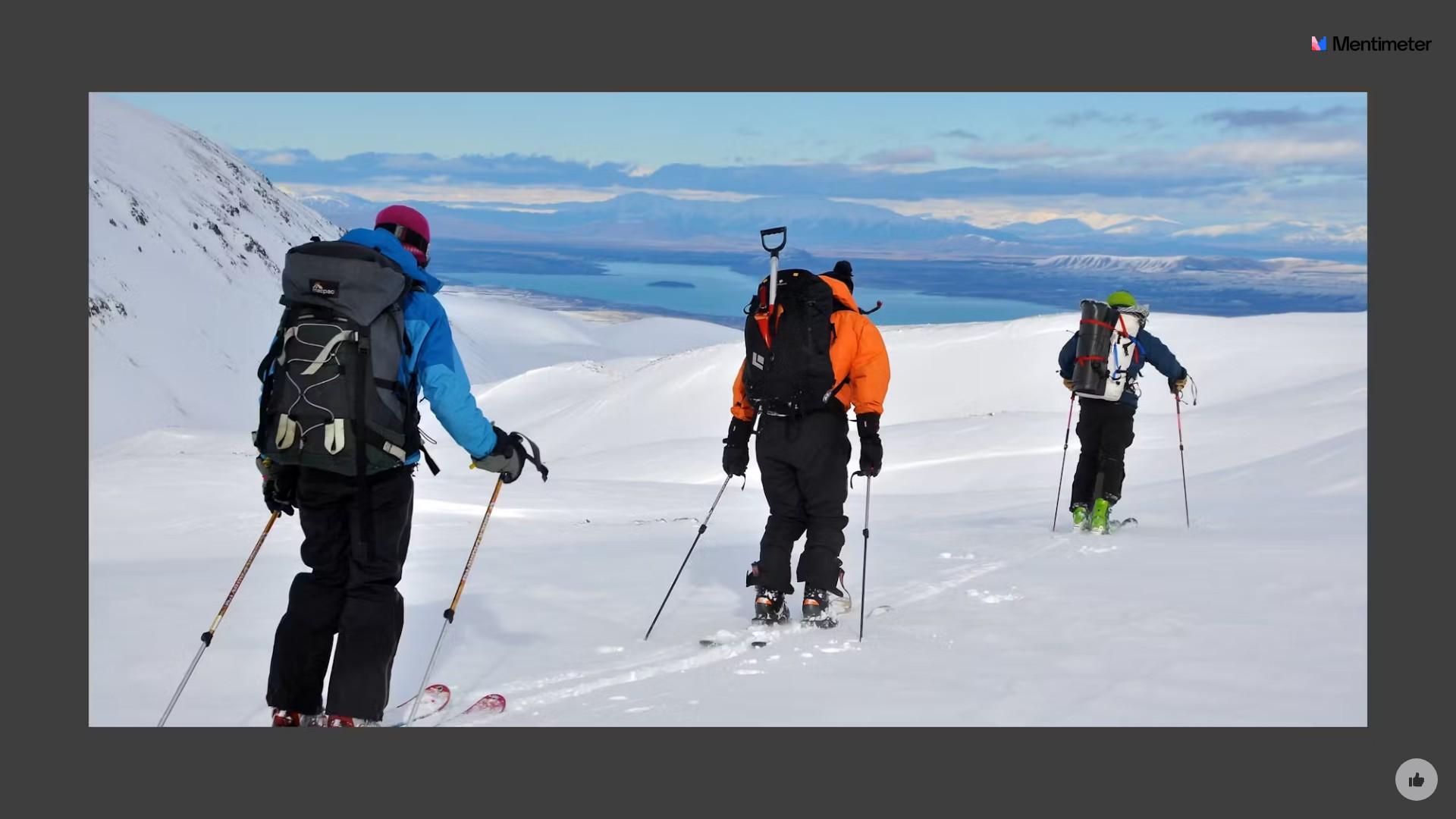

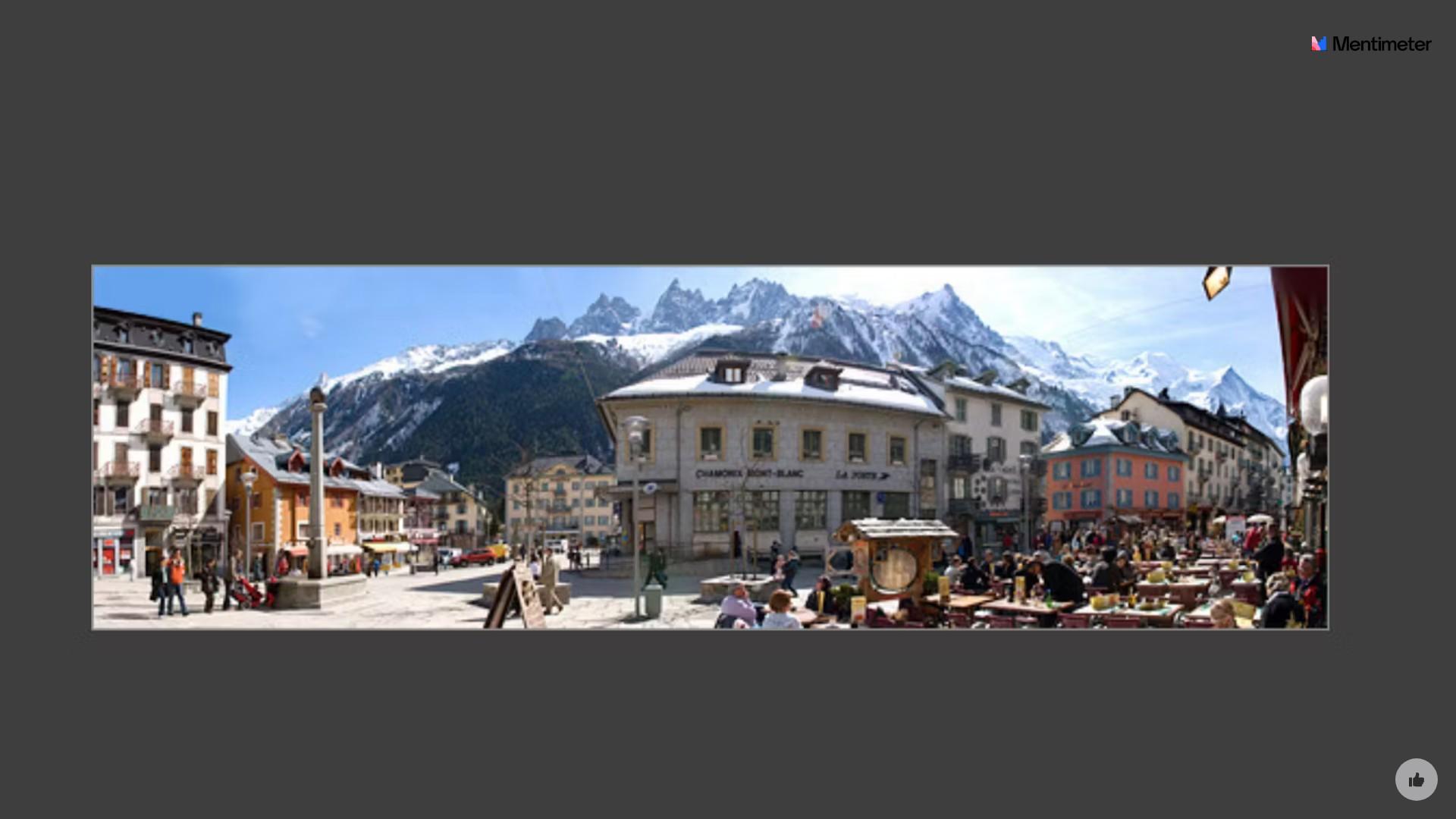
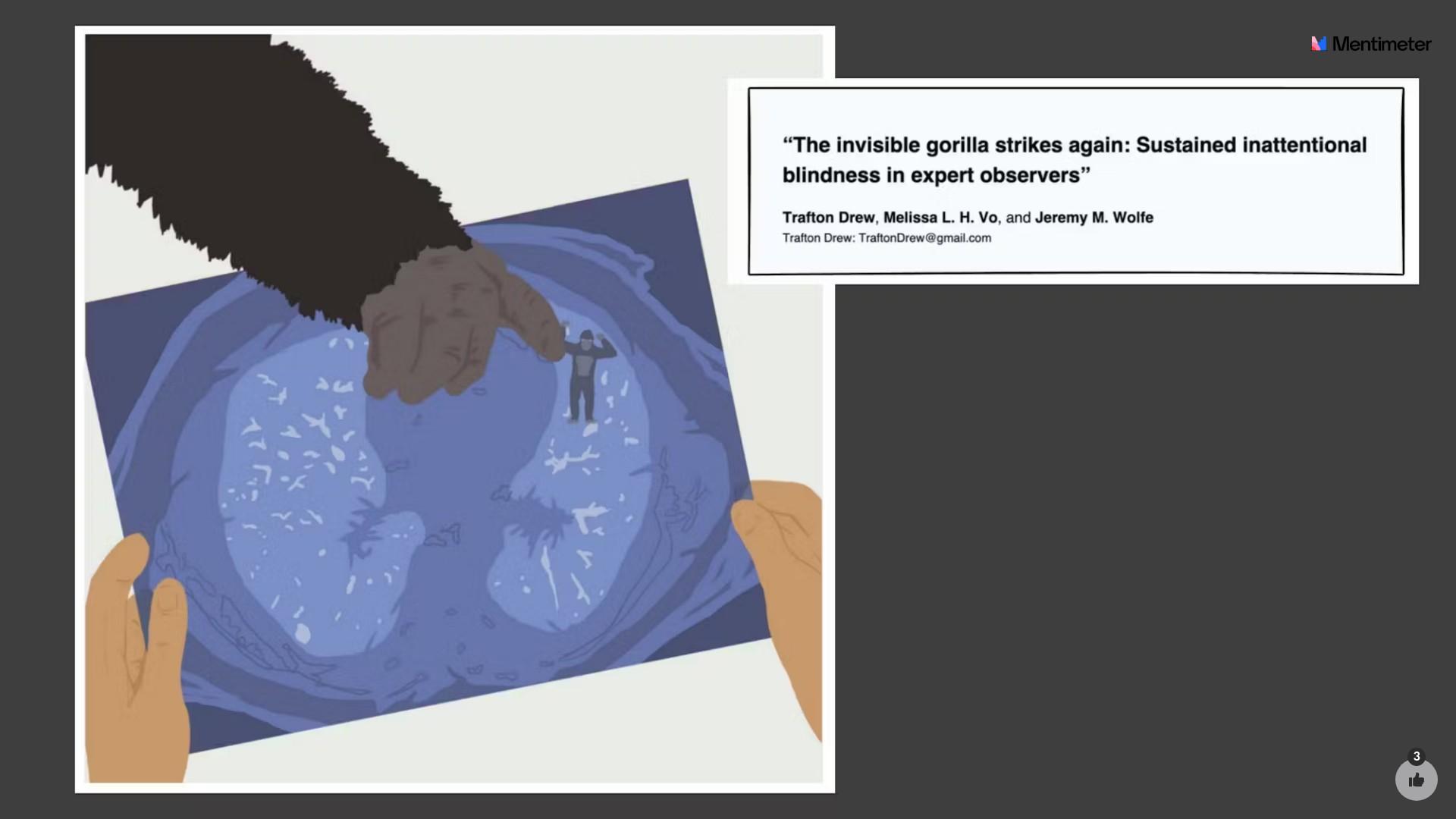
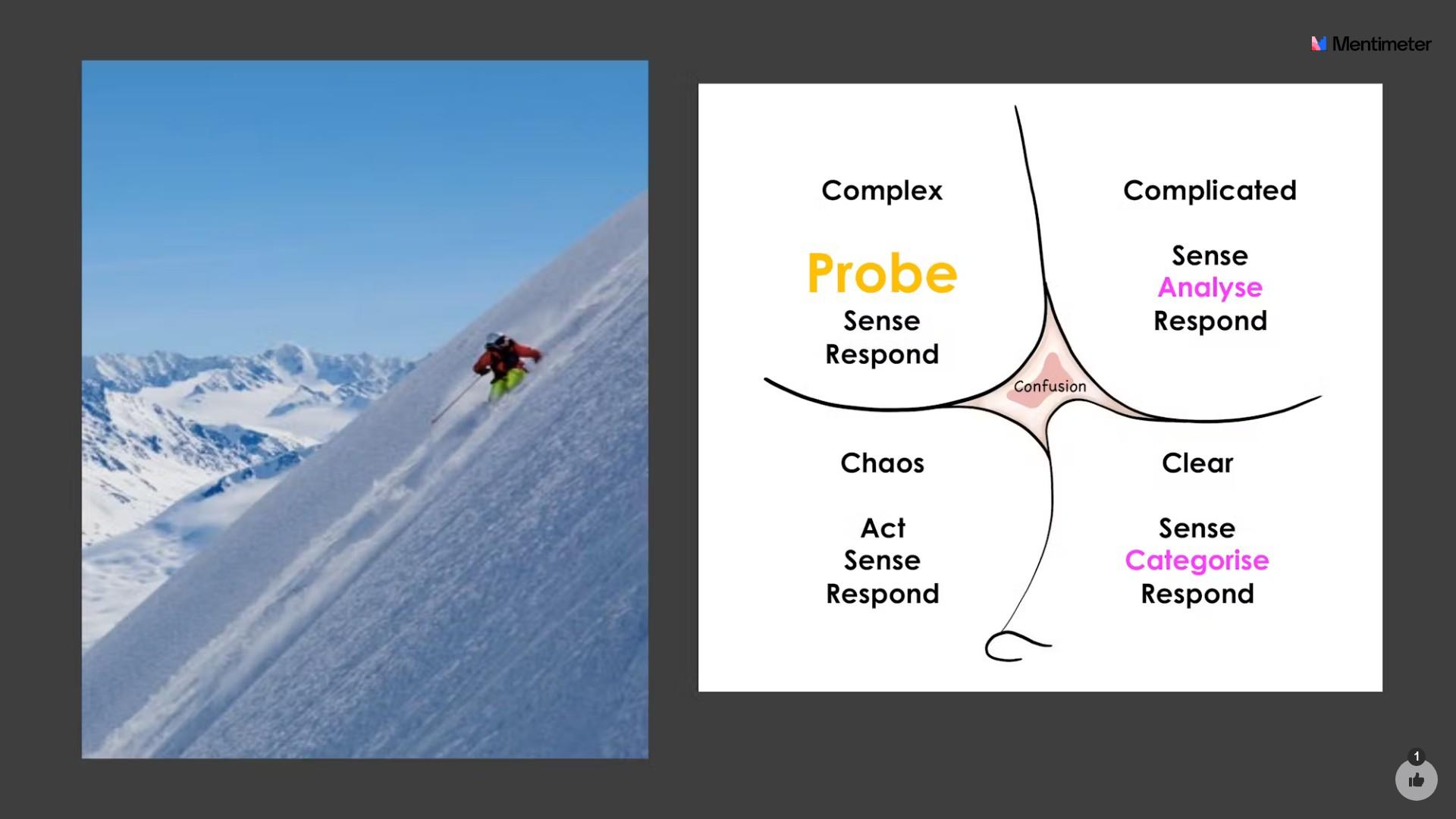
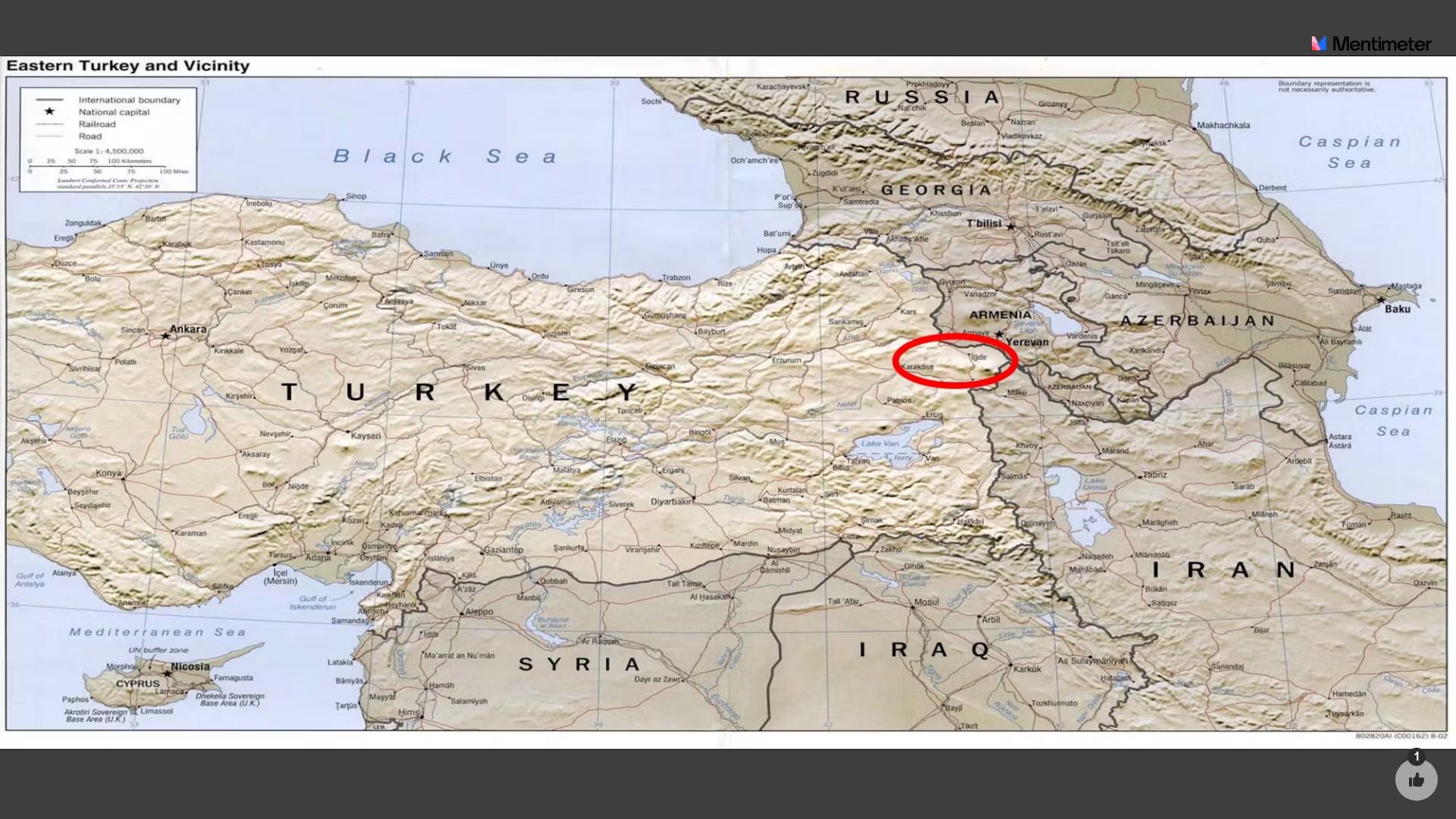
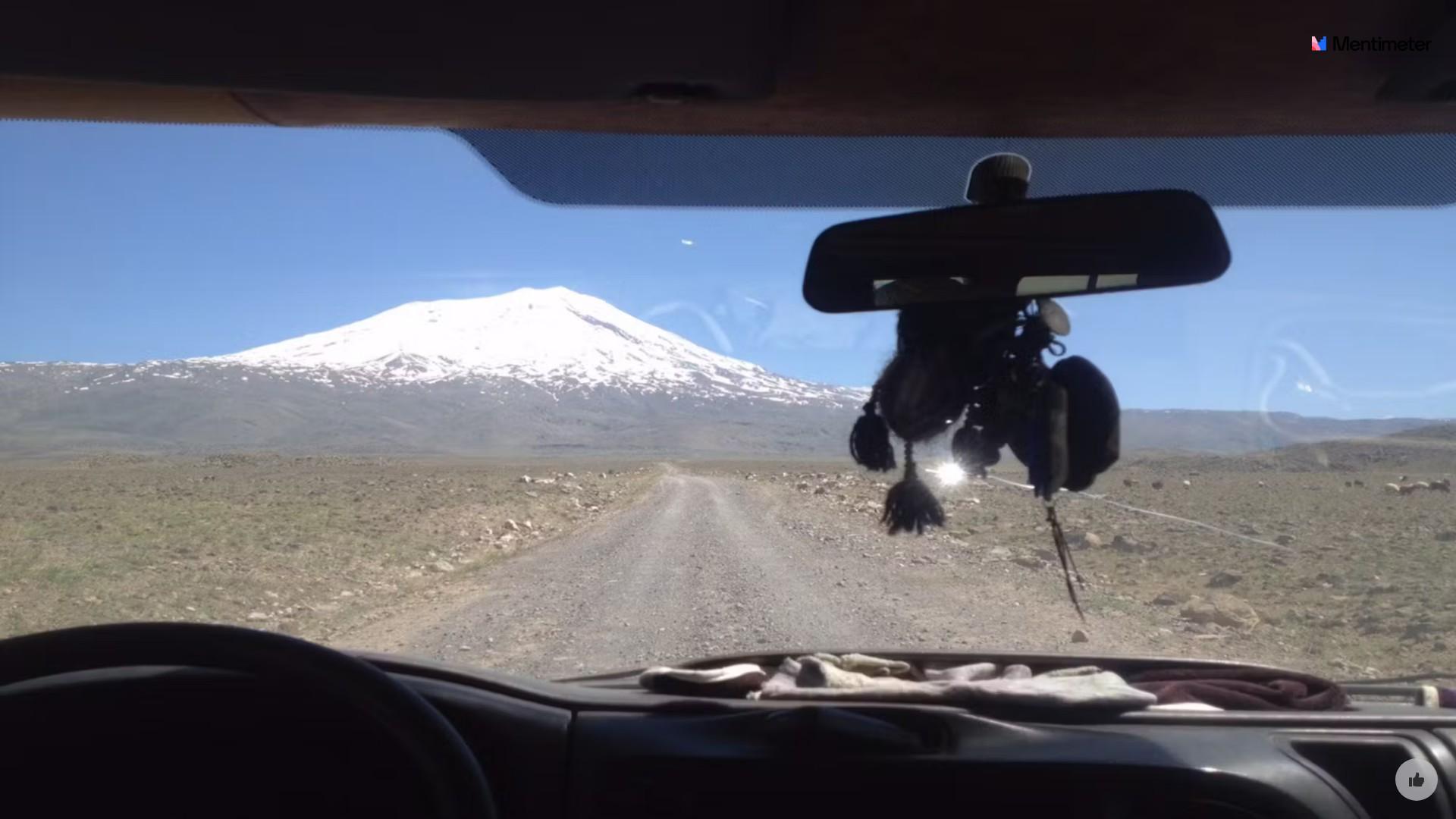
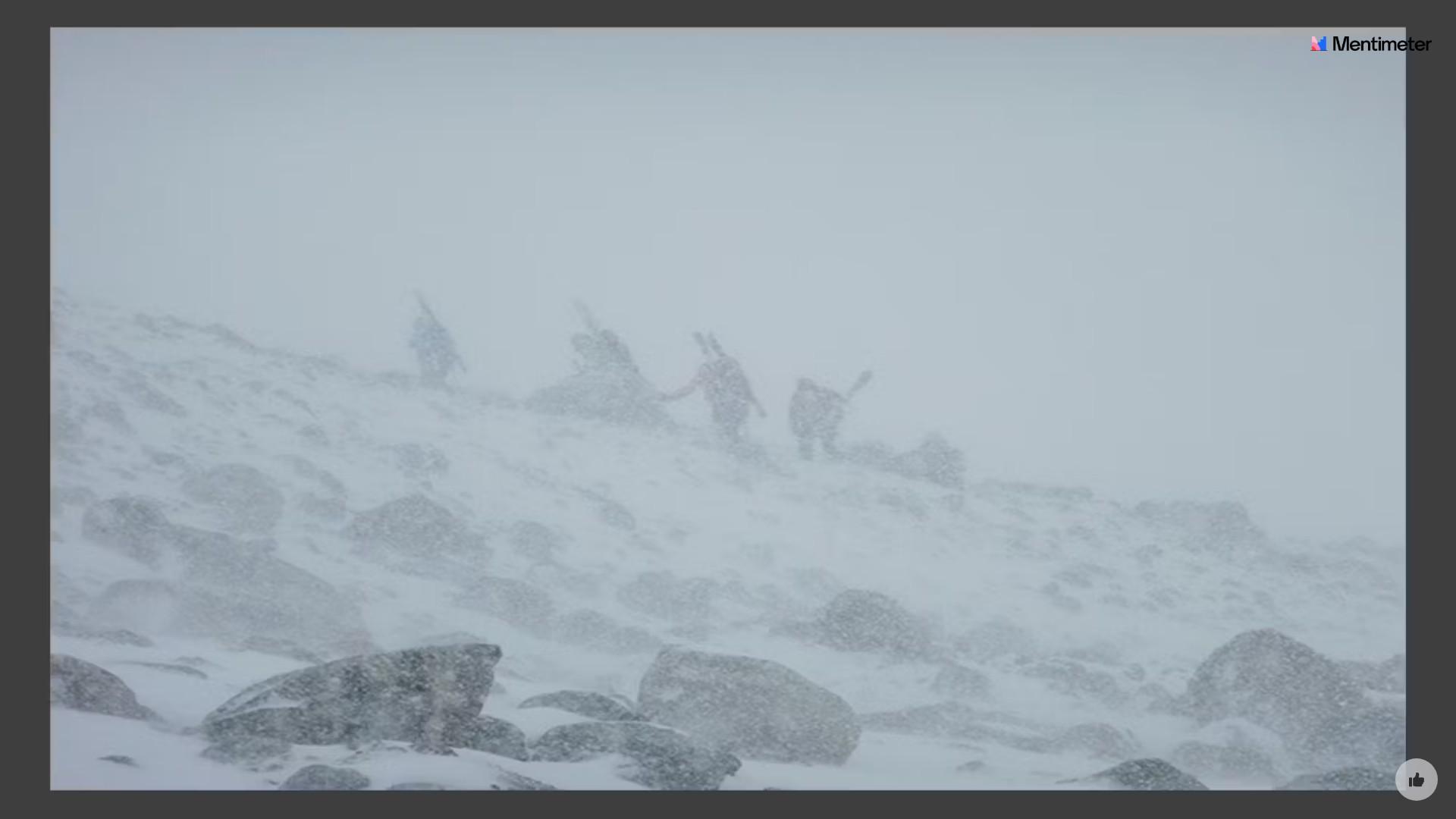

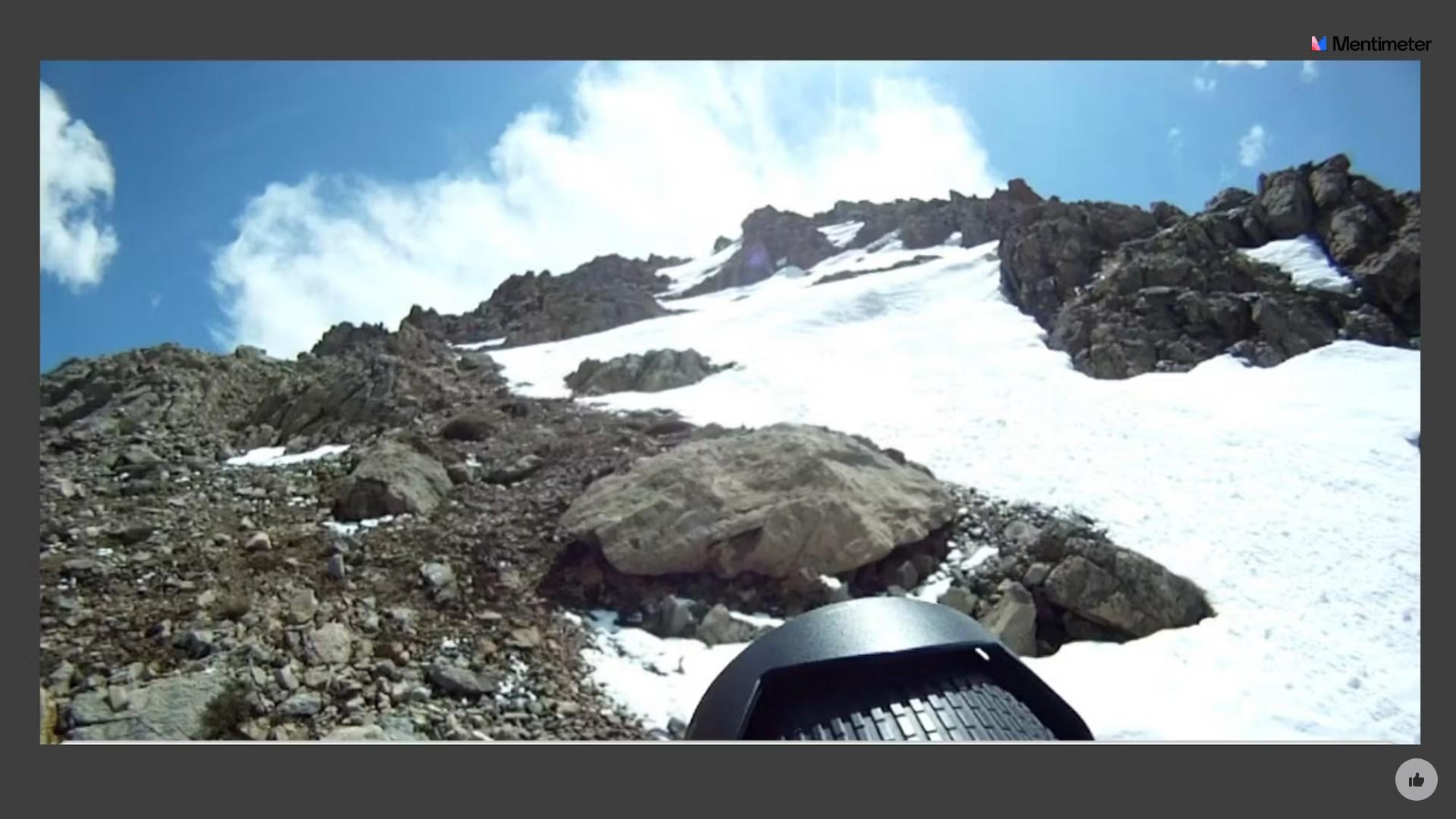
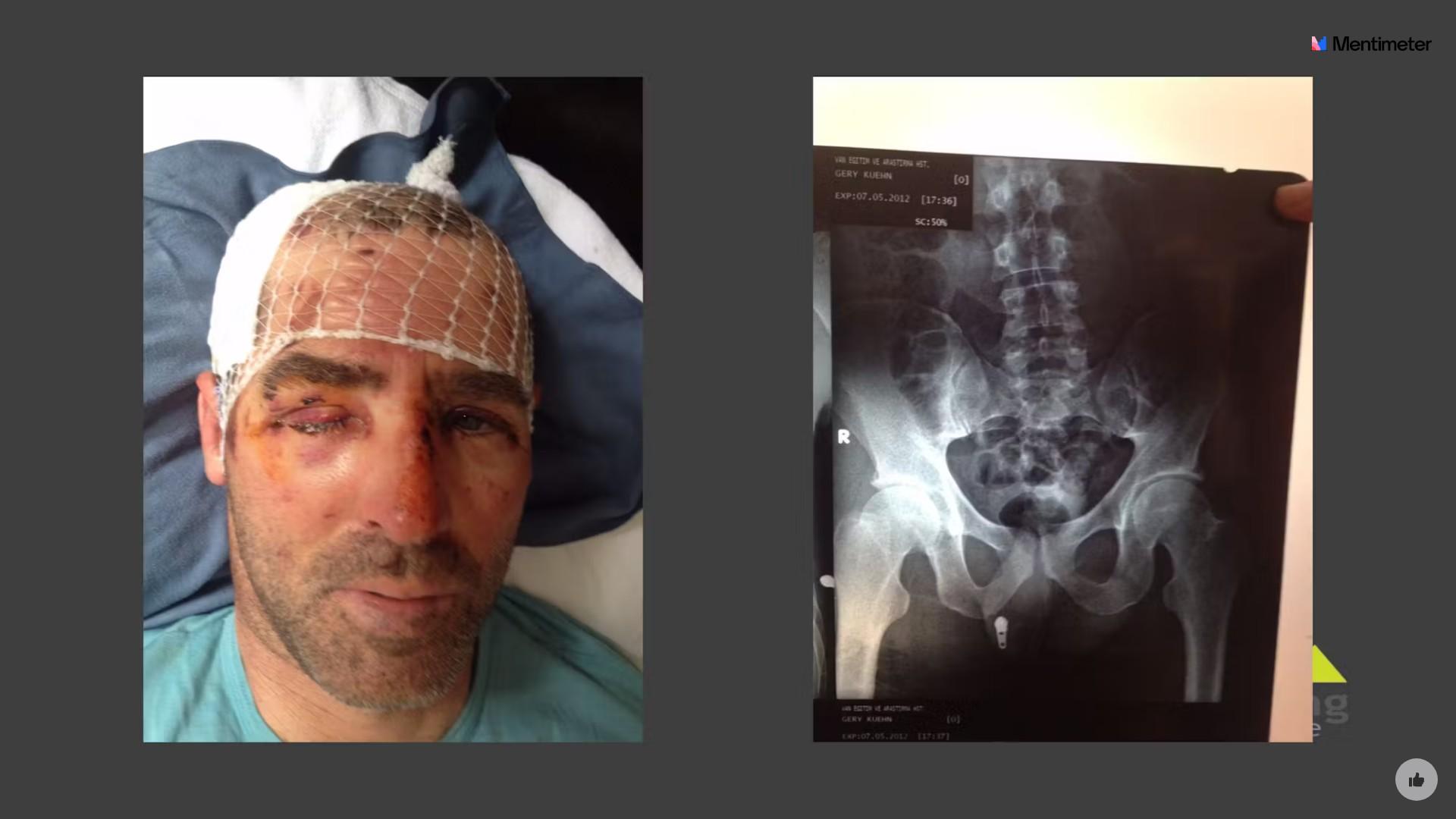

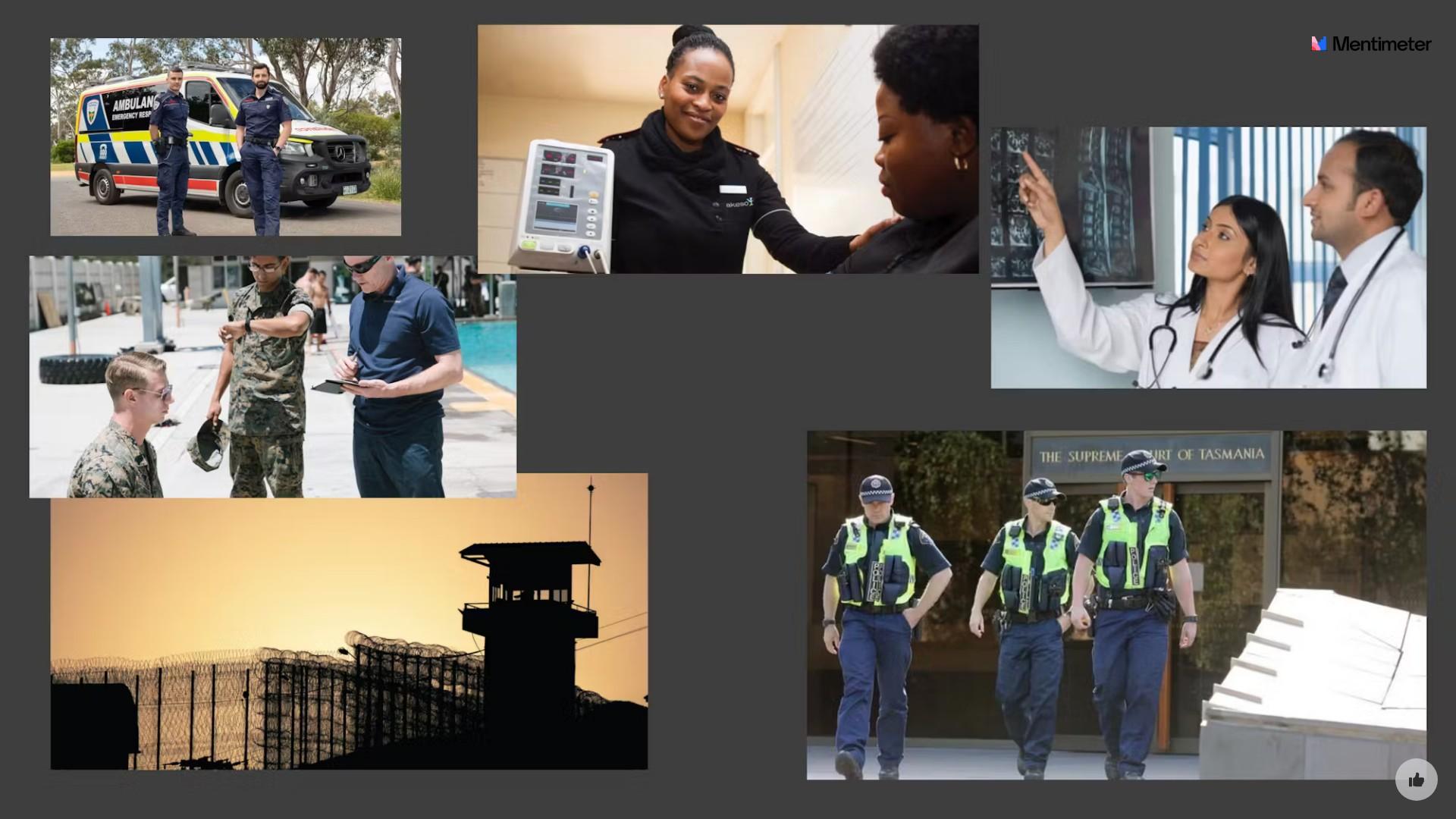
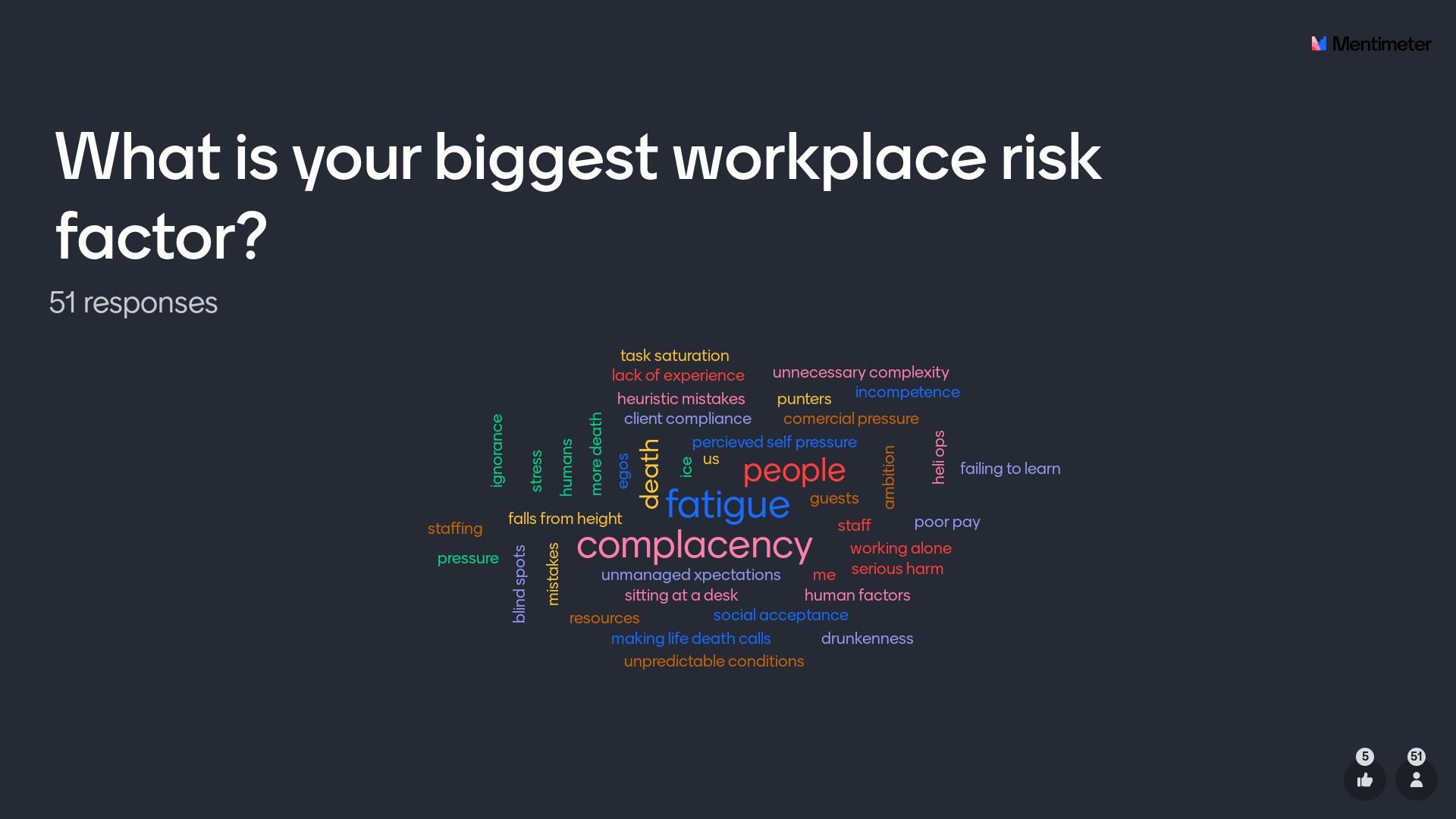

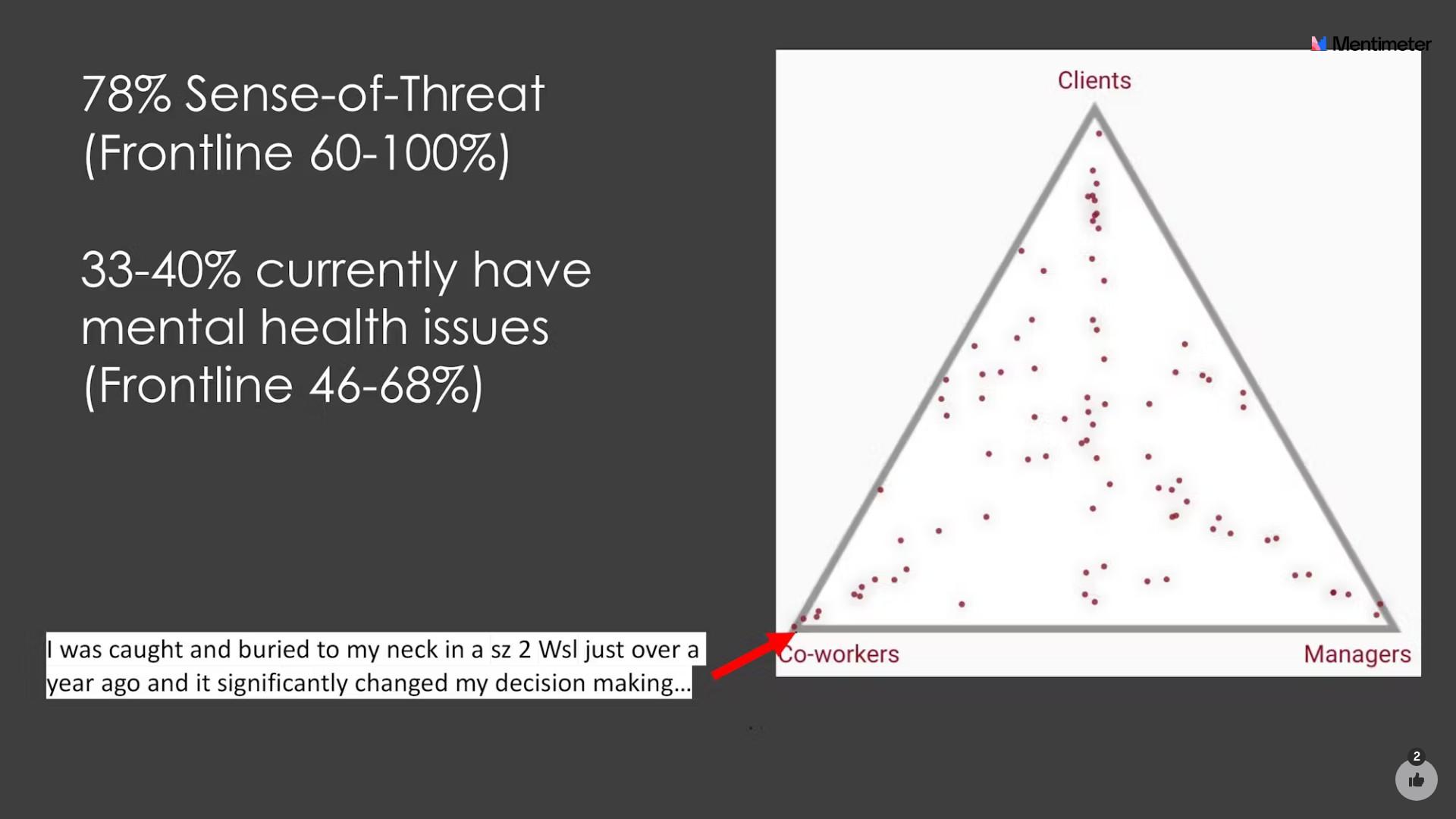
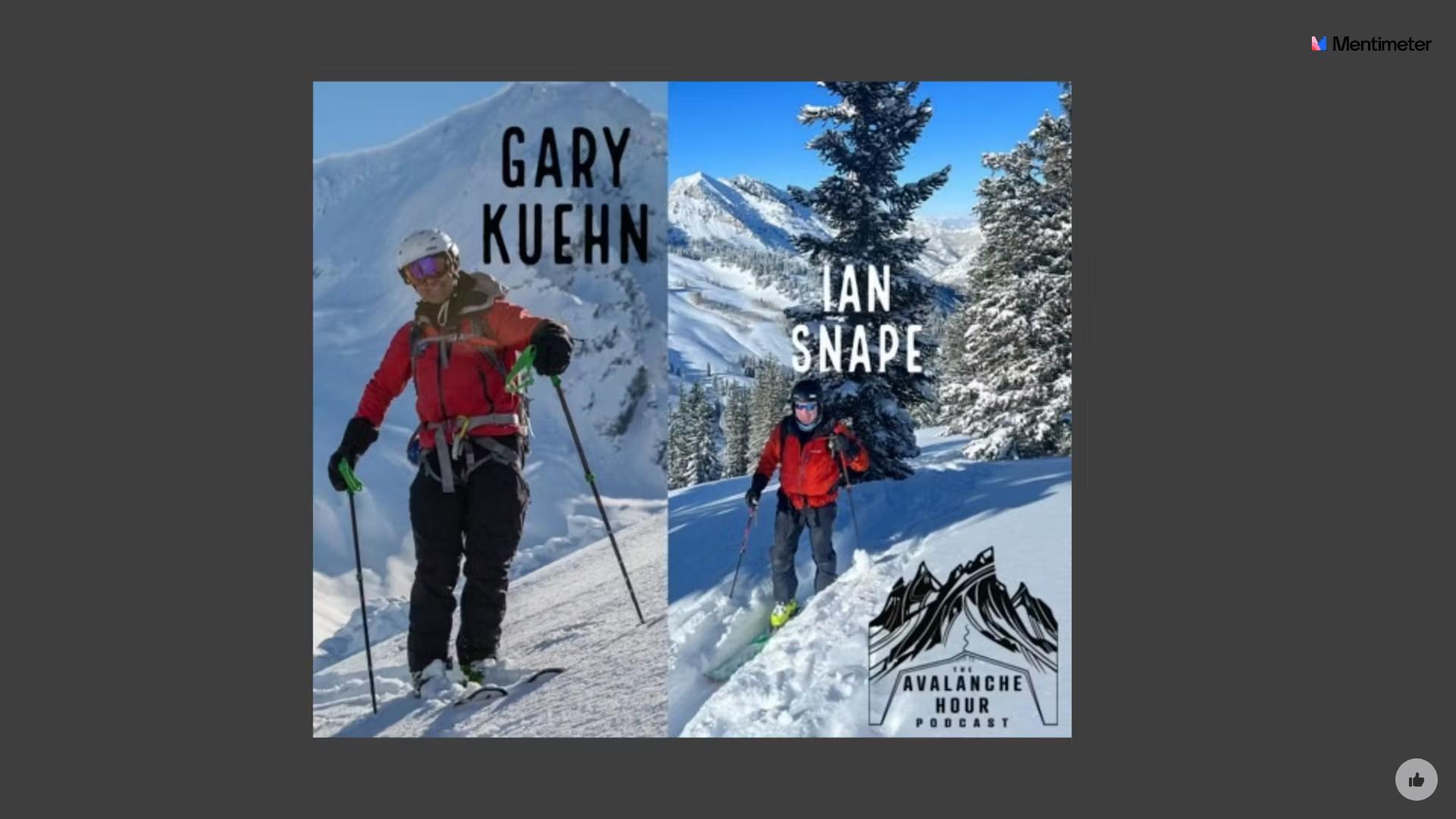
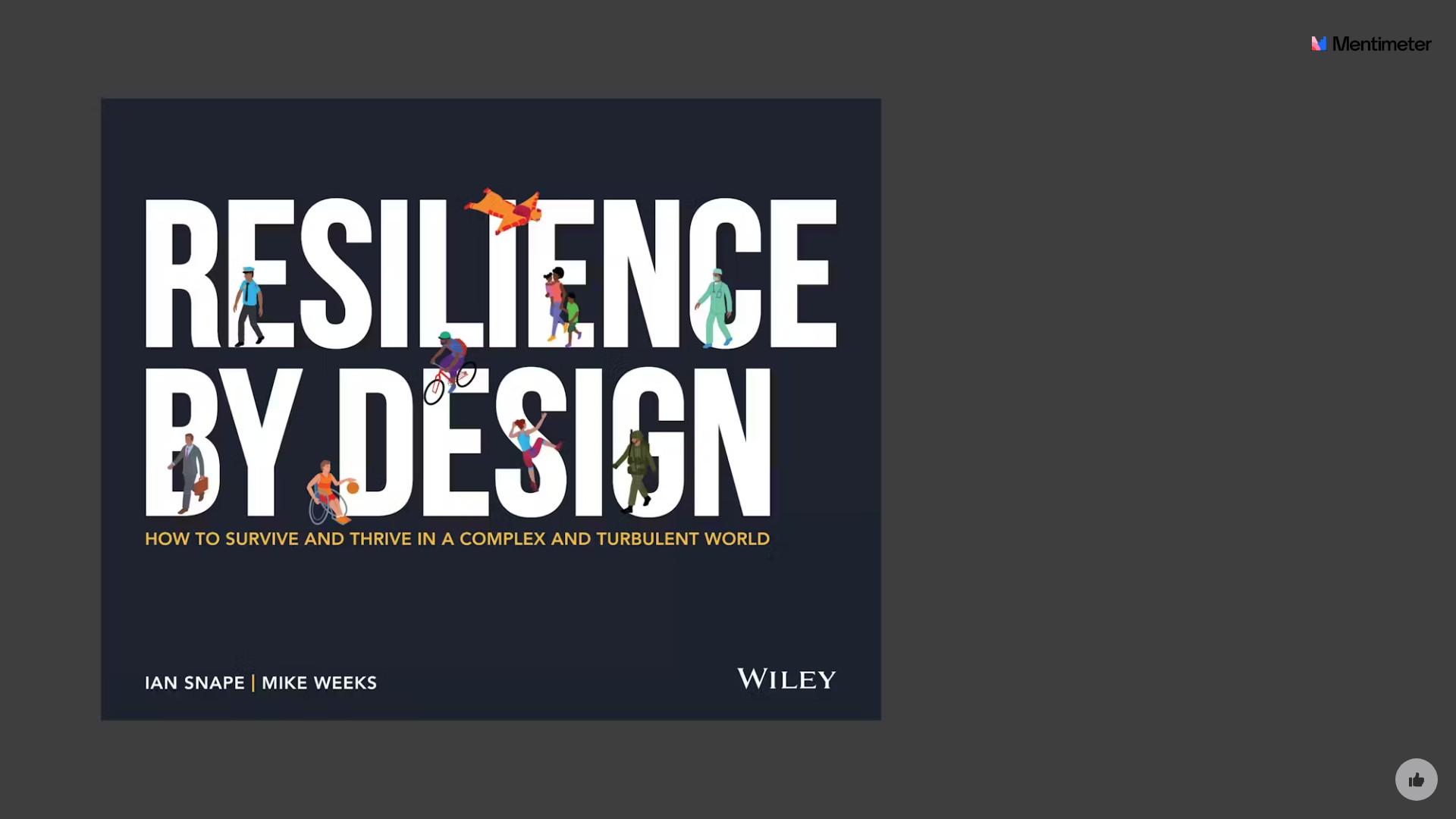



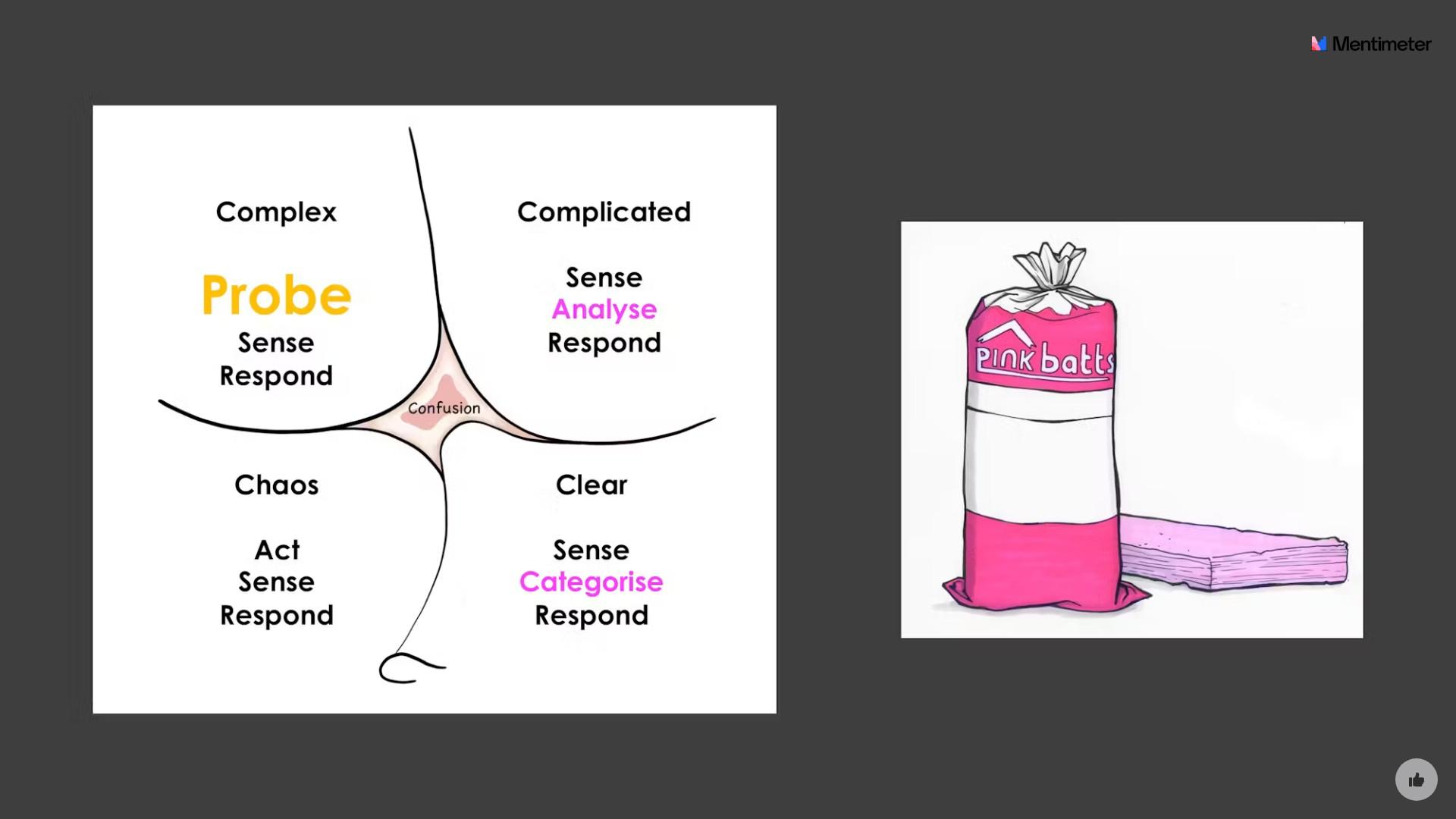
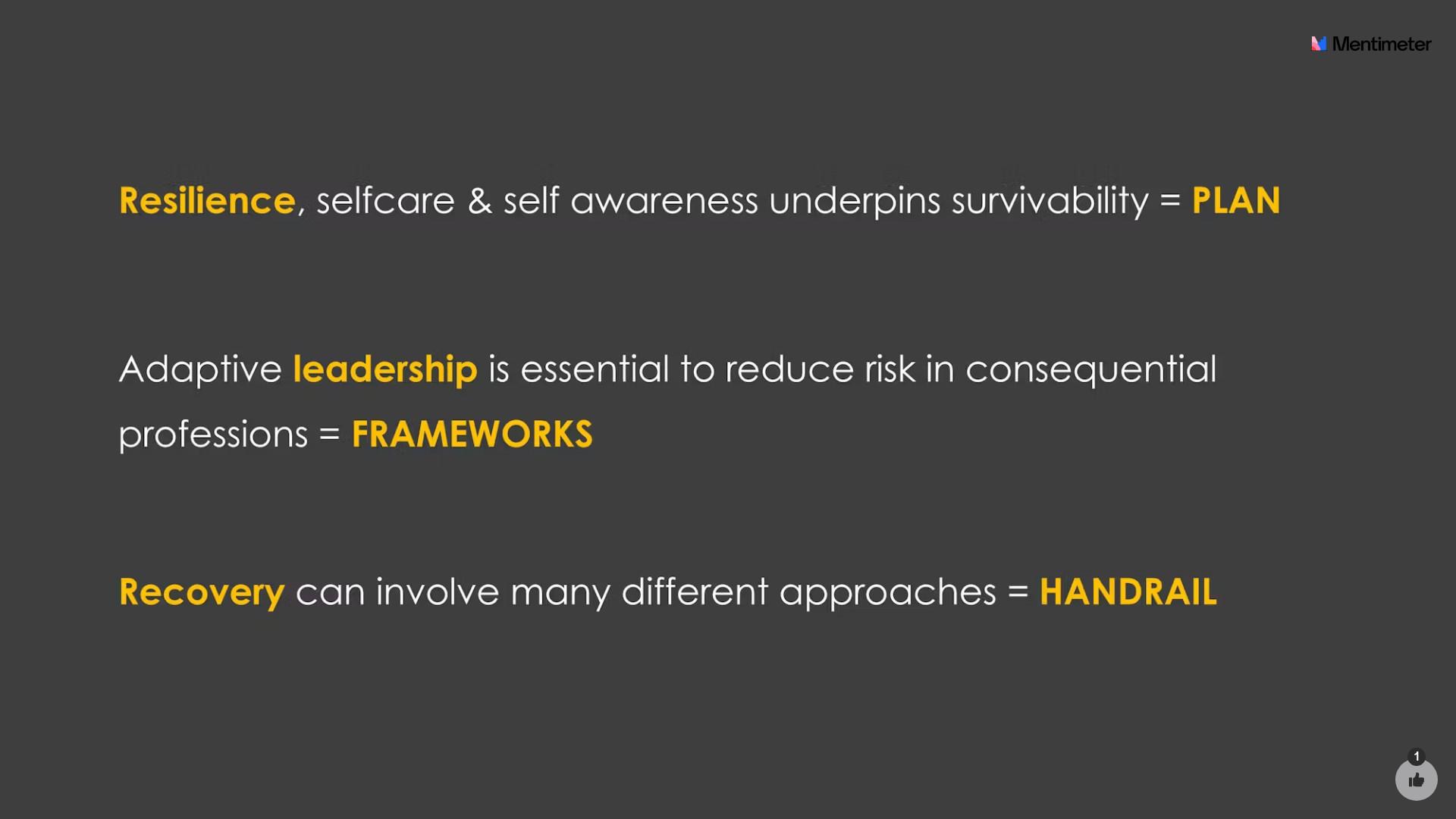
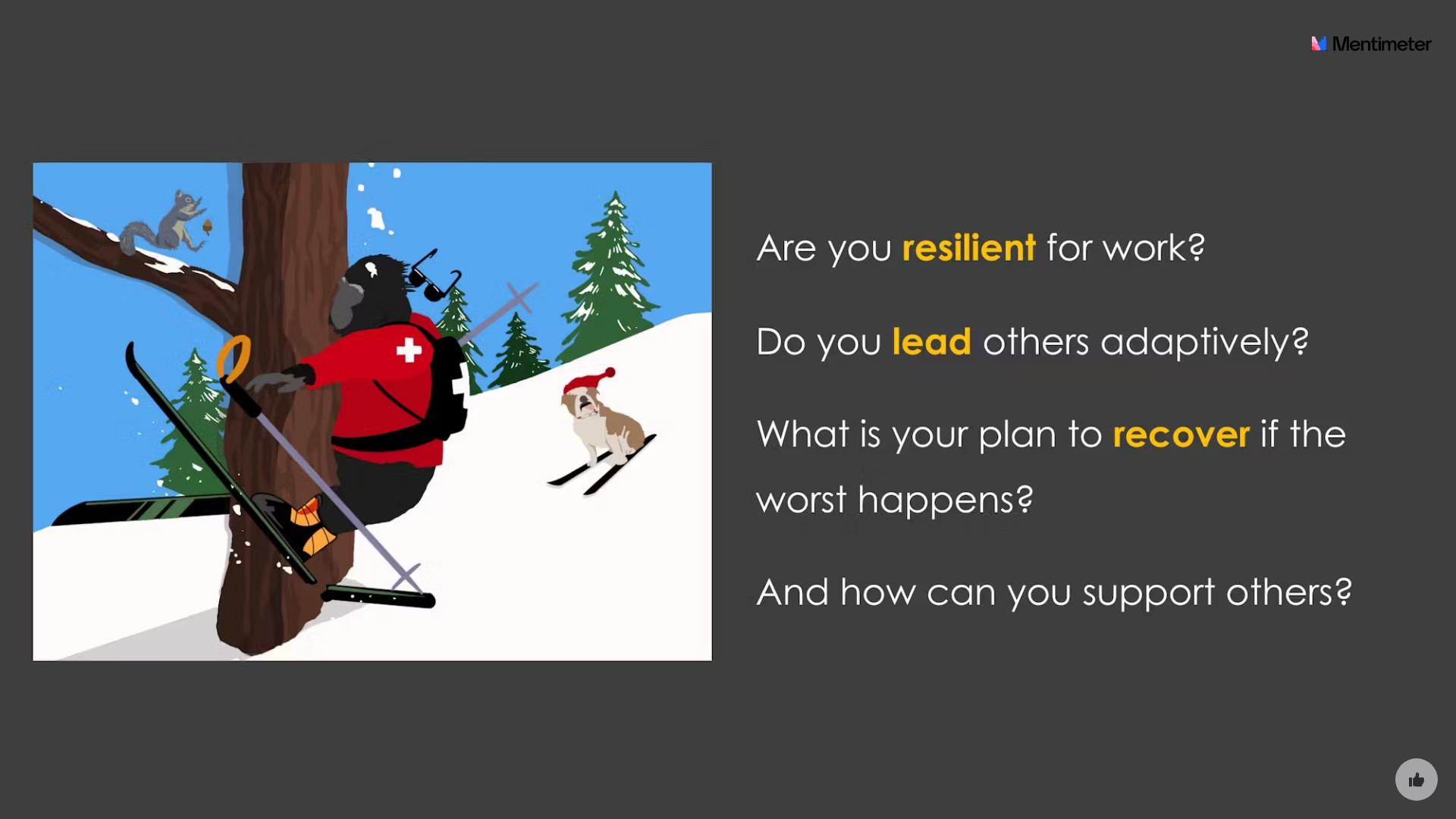
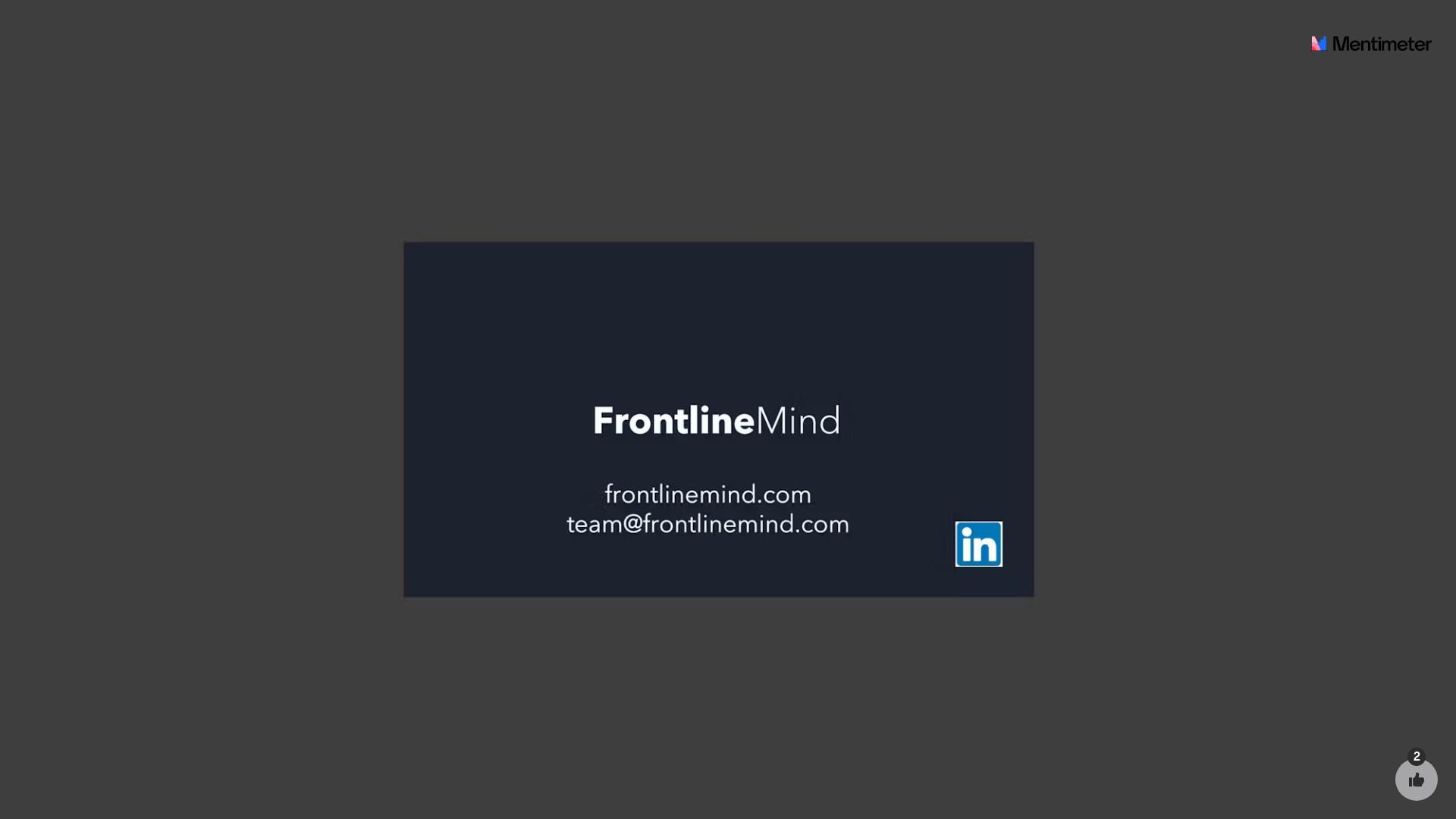


Jamie Robertson


• IFMGA guide- Assessor for the NZMGA
• Ski Patrol at Mt Hutt - 20+ years
• Alpine guides (AGL) - 20+ years
• MSC forecasting for 20+ years
• Staff training
• Teaching clients
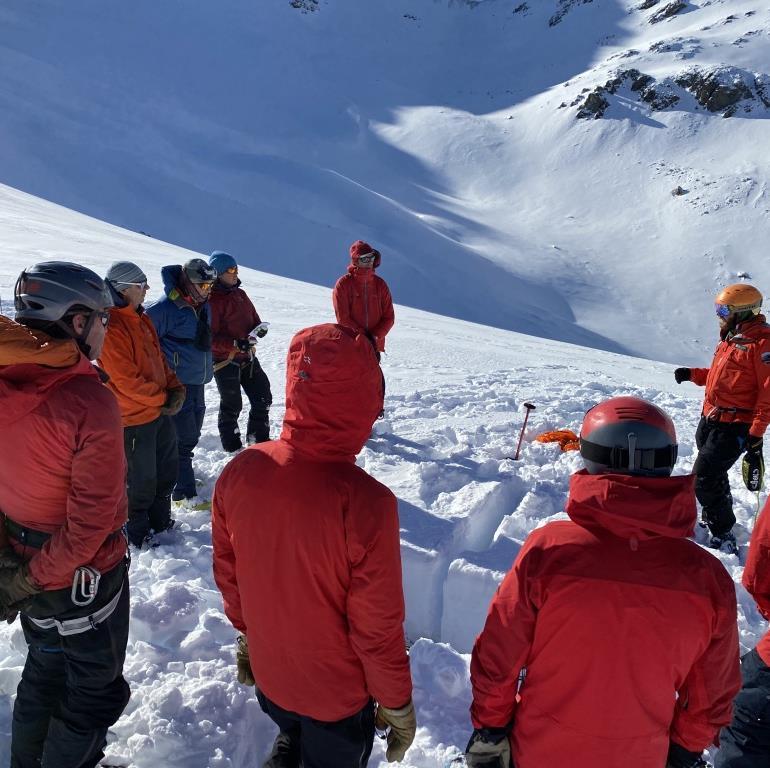
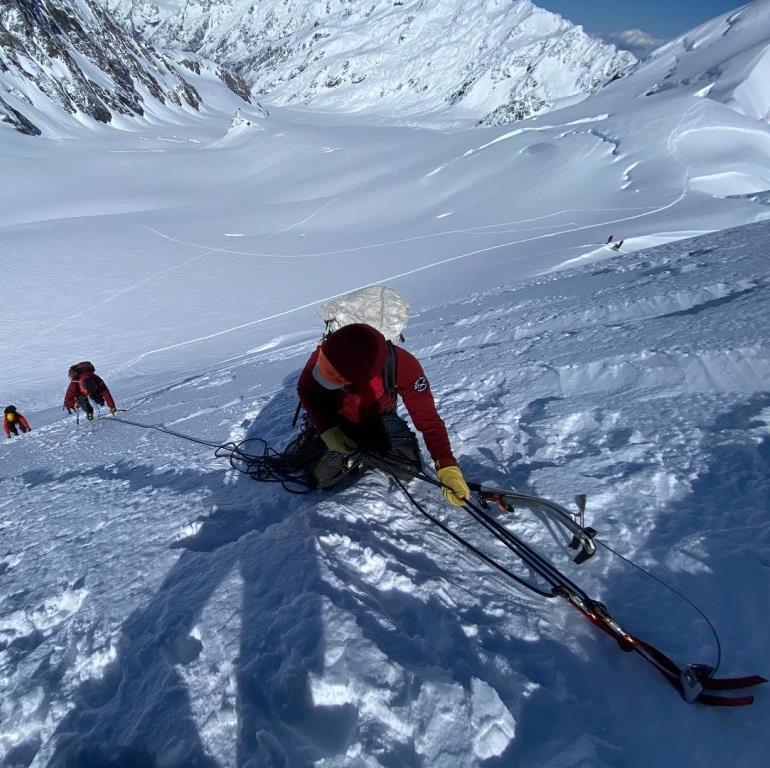
• Don Bogie’s work - history, 2003 Tasman accident, failures in the field, AGL training and anchor failures during training/teaching testing
• Observations in the field, watching people pushing in a top clip anchor with their hand and calling it good
• Teaching- related to snow science F, 4f, 1f, P, K vs x10 resistance as per Don’s papers.

• Leading on 45 degree slopes and belaying over crevasses- 4 kN to 8 kN
• Runners - 8 kN to 12 kN
• Top roping 1 person or abseiling- 2 kN to 3 kN
• Top roping 2 people- 3 kN to 4 kN
• Crevasse rescue? Discussed and estimated 3-5

• Surface conditions - friction of the surface and clothing
• Slope angle - related forces
• Multiple people on a rope
• Crevasse rescue - have you reduced to friction at the lip?
• Knots in crevasse rescue rope?
• More static light weight ropes for glacier travel, vs climbing ropes. Dynamic ropes spread peak forces over time.
• Rescue X10 factor for load.

• Skiers change technique around conditions quickly.
• Dappled = loose grains/near surface faceting?
• Texture = wind crust/stripped to hard surface on ridges?

• I often see experienced climbers stuck on a line over strong anchor placements.
• Rope management rather than anchor strength.
• Can I place an anchor in good snow by moving 2m?
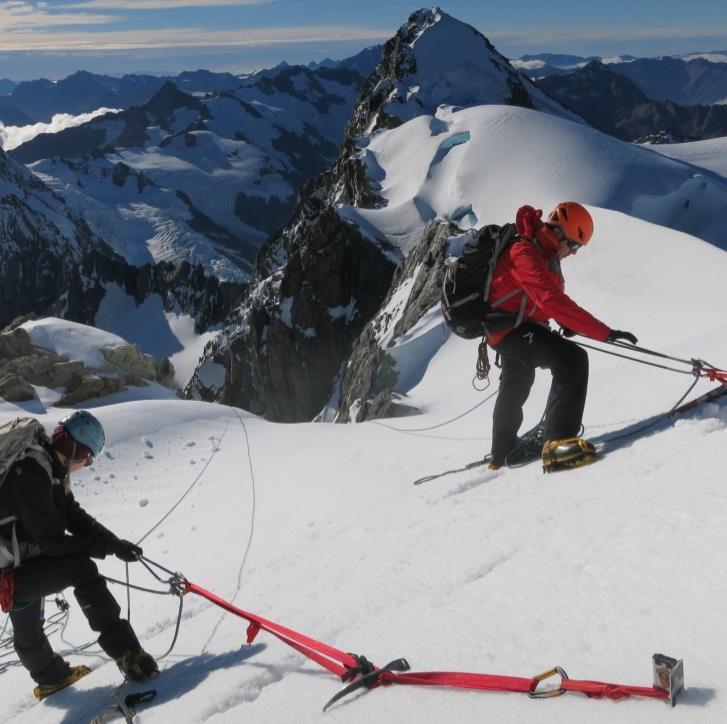
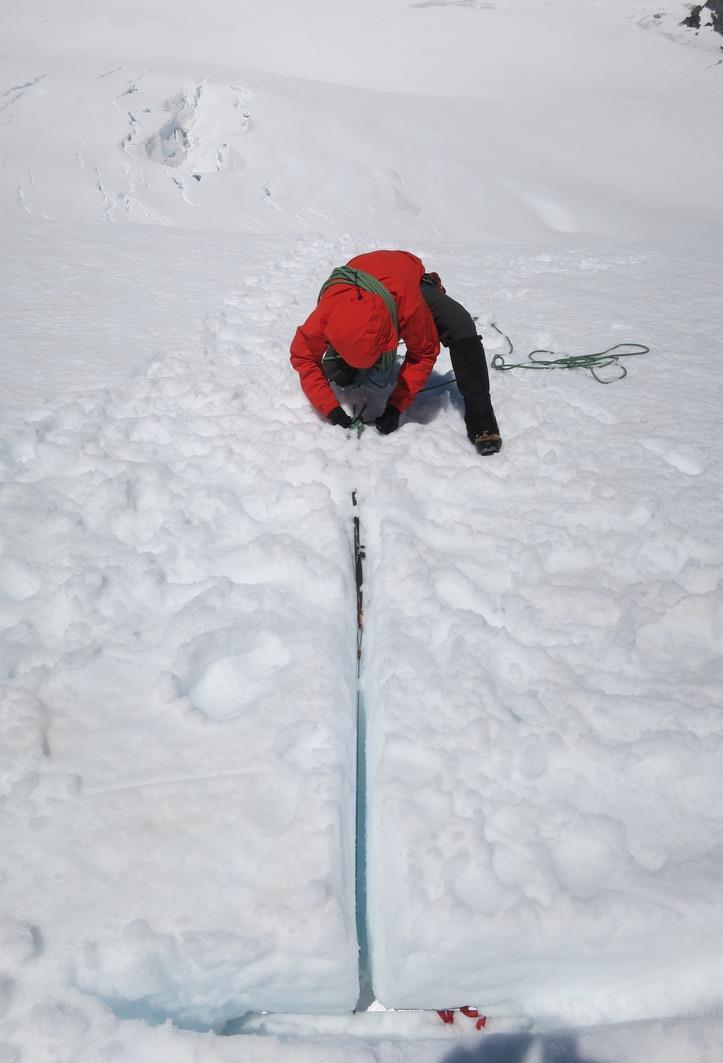
• Not digging out, bottom of buried mid clip anchors in soft snow
• Snowball test - not a reliable method of “buried mid clip” particularly in wet snow
• Not allowing for changing conditions while anchors is being used (spring soft snow).
• Layers - hard surface crusts with soft below
• Angles to load, standing high on an anchor.
• Think about what you are doing, what’s the load, max load, any possible shock loading.
• How strong should my anchor be?
• What’s happening to the snow? Changing over time.
• Rope friction/knots. Consequences?
• We should be making informed decisions.

• Changing conditions with higher freezing levels
• Regular messages from guides in hills that anchors are hard build, mostly in spring.
• Moving to larger anchors in spring, more large wet grain anchors (buried packs).
• Roy Smith’s anchor test (static sling onto harness).
• Hammers with small heads?
• Carrying shovels to dig spring snow anchors (buried packs ).
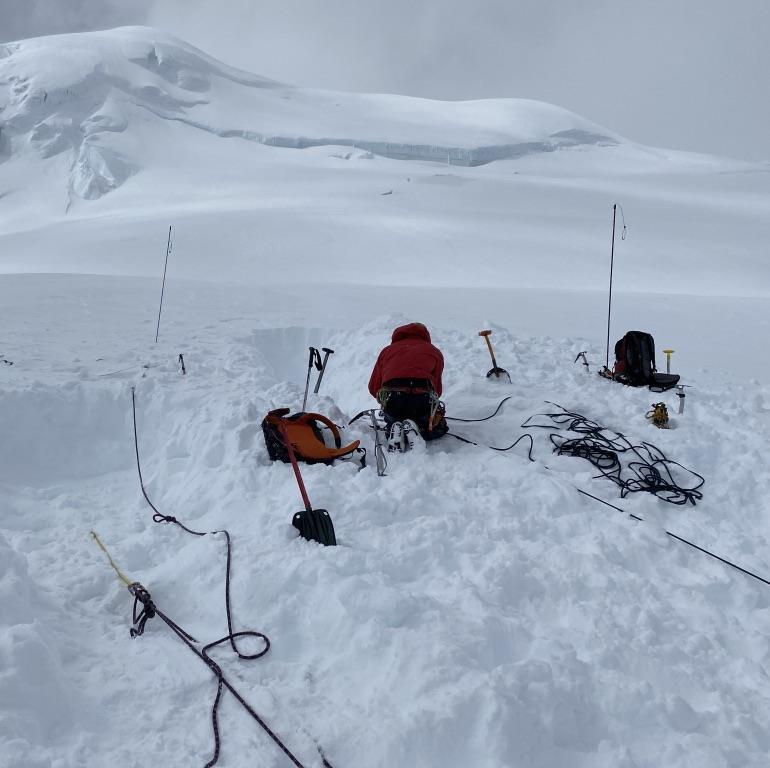
• Don’s testing showed vertical ski anchors would often fail at 3kN even in hard snow.
• Photo from NZMGA manual.
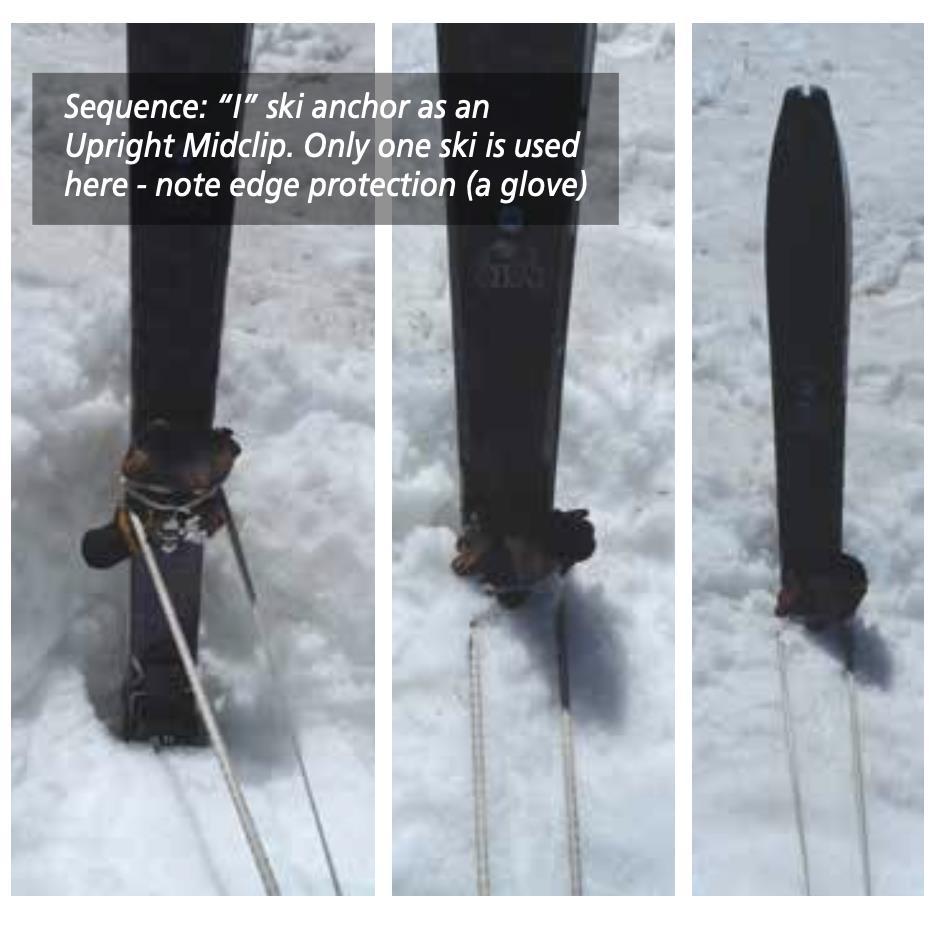
Thanks for your time.
I hope this has been useful and I look forward to further discussions on anchors in the future. Now its time for skiing….
Questions?
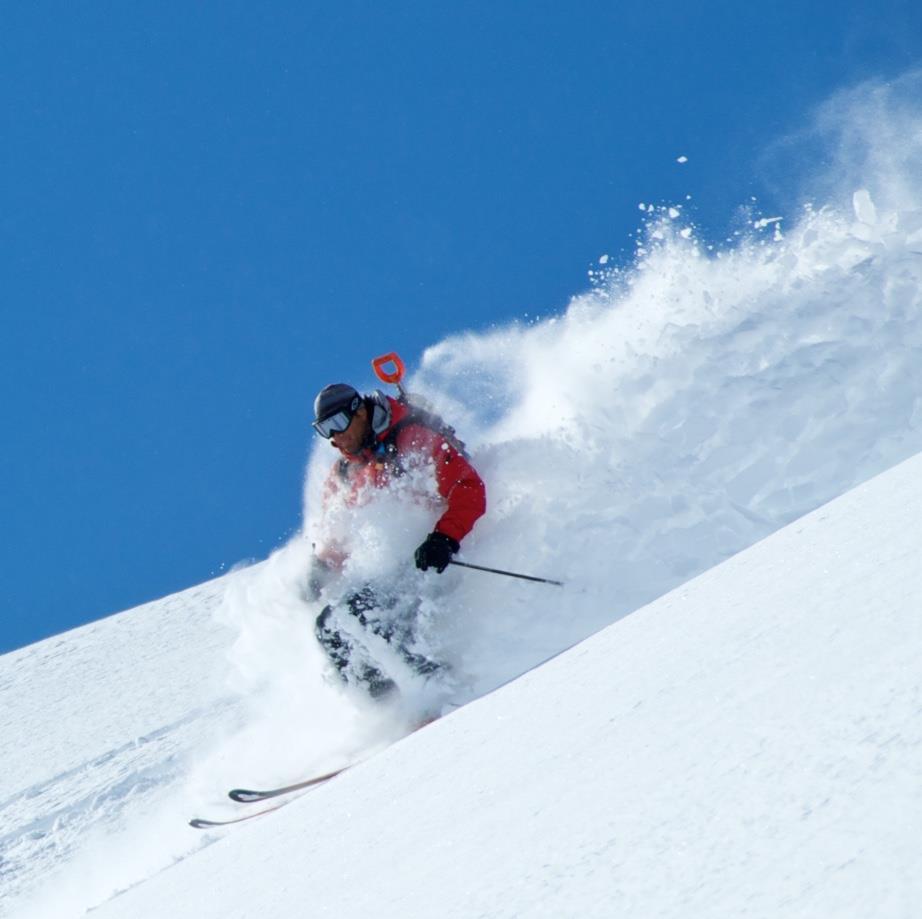






• Some lessons from the 2022 winter rain event in central southern alps
• Some observations from ongoing research in Hooker Valley, Aoraki Mount Cook National Park, with an example from another 2022 avalanche cycle
• Time for thoughts/ideas/questions.
But first... Some questions for you...
1. How much do you care about rain falling on the snowpack?
2. In terms of the avalanche hazard, how does it compare to other problems?
3. How much of a problem do you think it will be in the future?
Some thoughts:
• No one is shredding when it rains, rain is only a problem if it rains a lot, rain is easier to forecast than some other problems, rain shmain, avalanches often smaller than dry slab, only a spring problem, a problem for infrastructure more than for recreationists
• Implications of freewater in snowpack harder to forecast, timing of release hard to predict, we might get more extreme rain in future, raining to higher elevations in winter, storm slab or wet slab

• Early winter 2022 was great for many of us
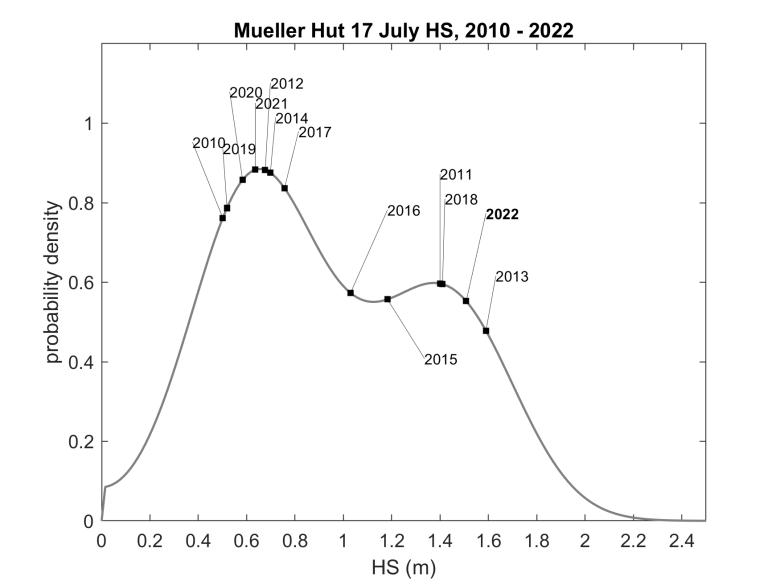
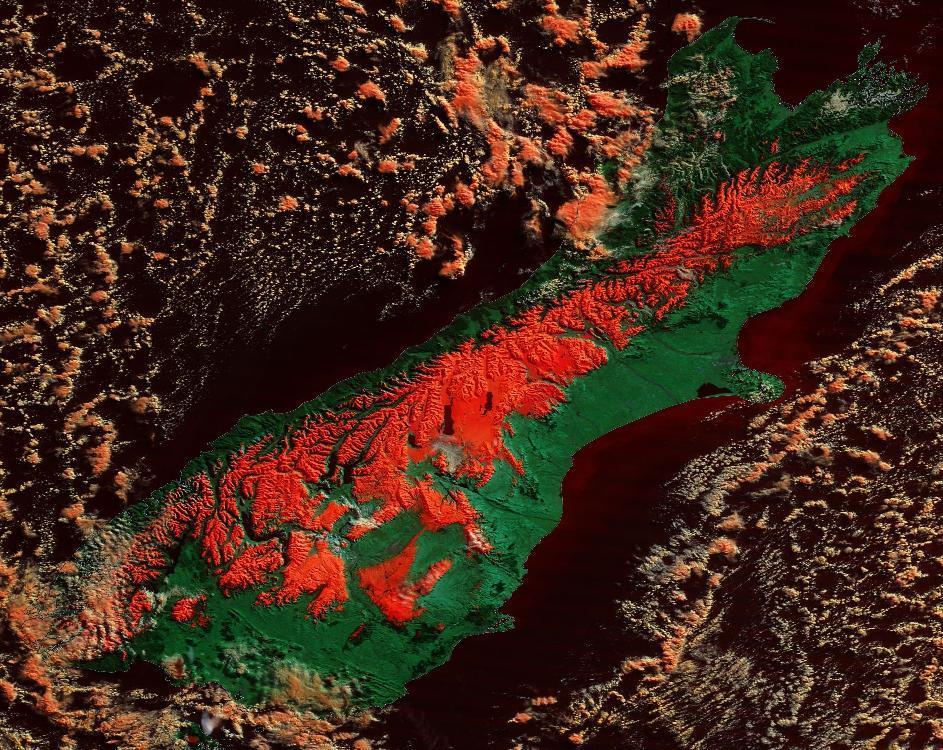

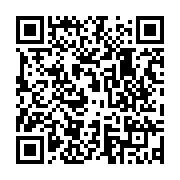
MODIS snowcover, MRC, University of Otago (this record extends back to 2000) https://www.otago.ac.nz/surveying/potree/pub/mrc/projects/snotago/modis-snow-cover

• 550mm rain recorded from July, 2022 storm in Mt Cook Village, most between 18-19 July.
• 371mm was 24 hr record for winter storm with records to 1928 (3rd place overall) and first time 300mm has been recorded in winter.
• Mid-winter rain is not new in New Zealand, but the magnitude of the rain events are likely to increase with a warming climate.
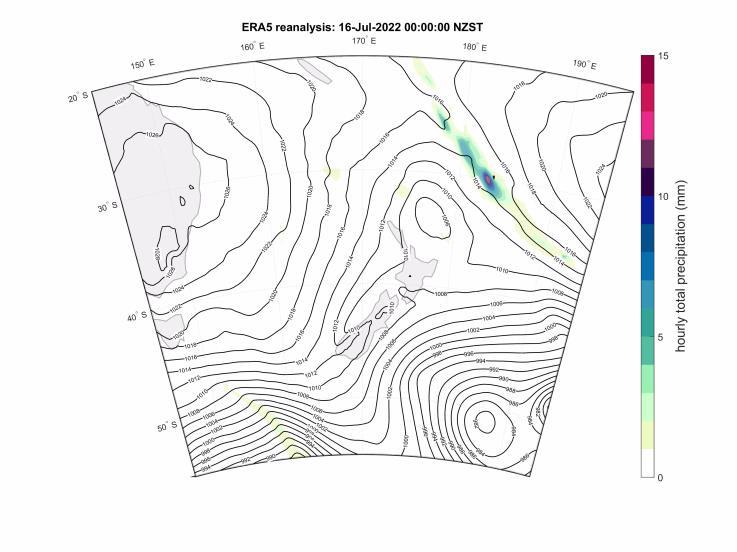
https://www.1news.co.nz/2022/07/19/video-shows-holiday-parkin-canterburys-omarama-swamped-by-flooding/

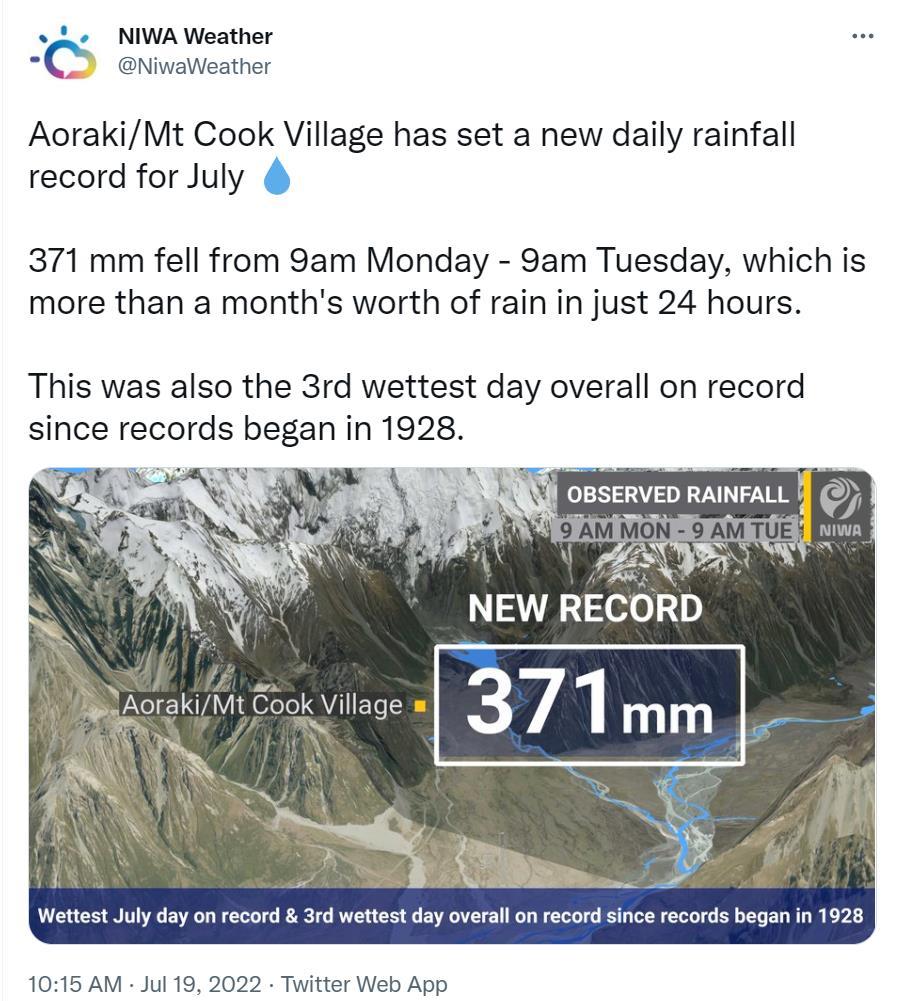
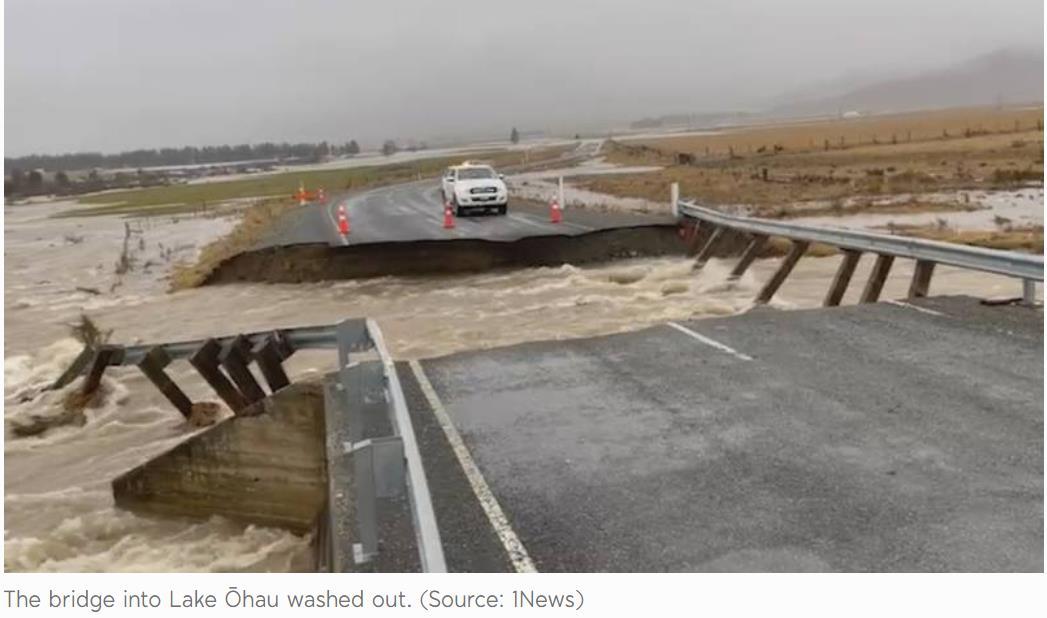
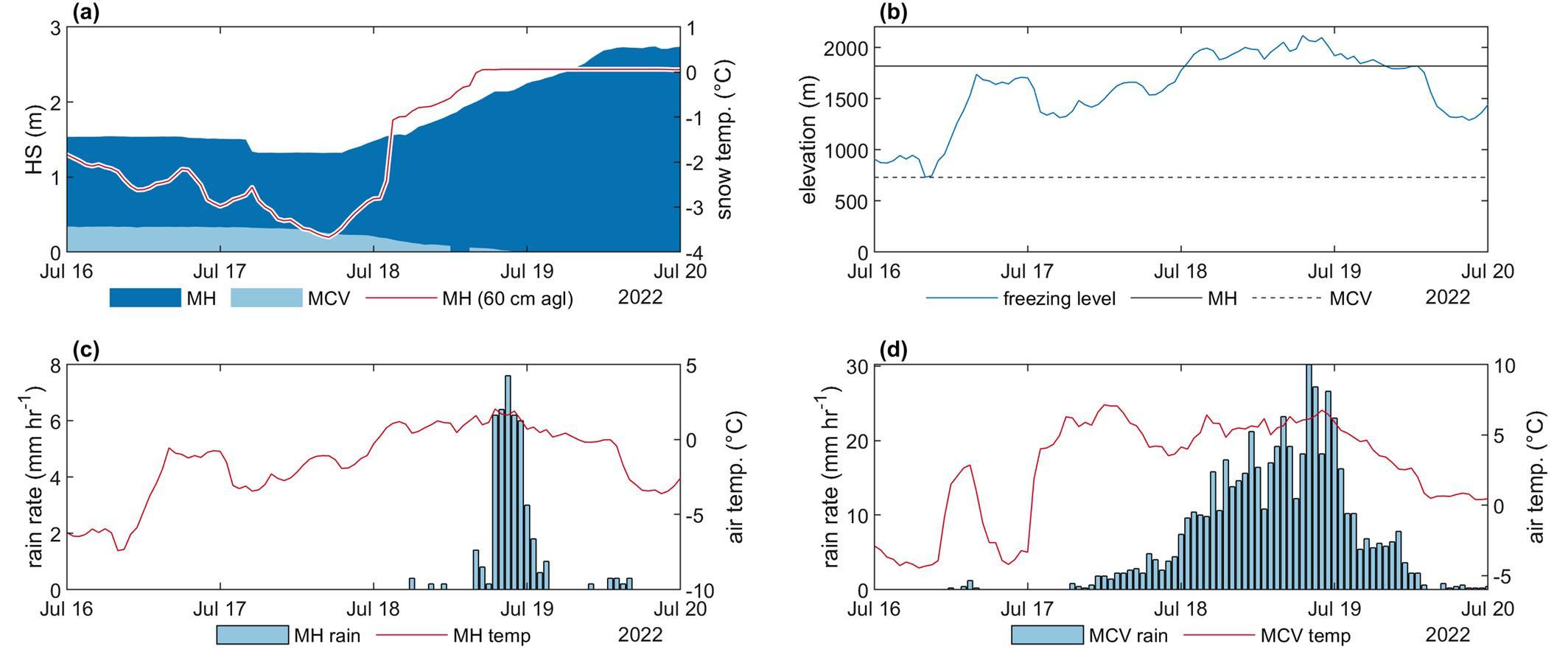



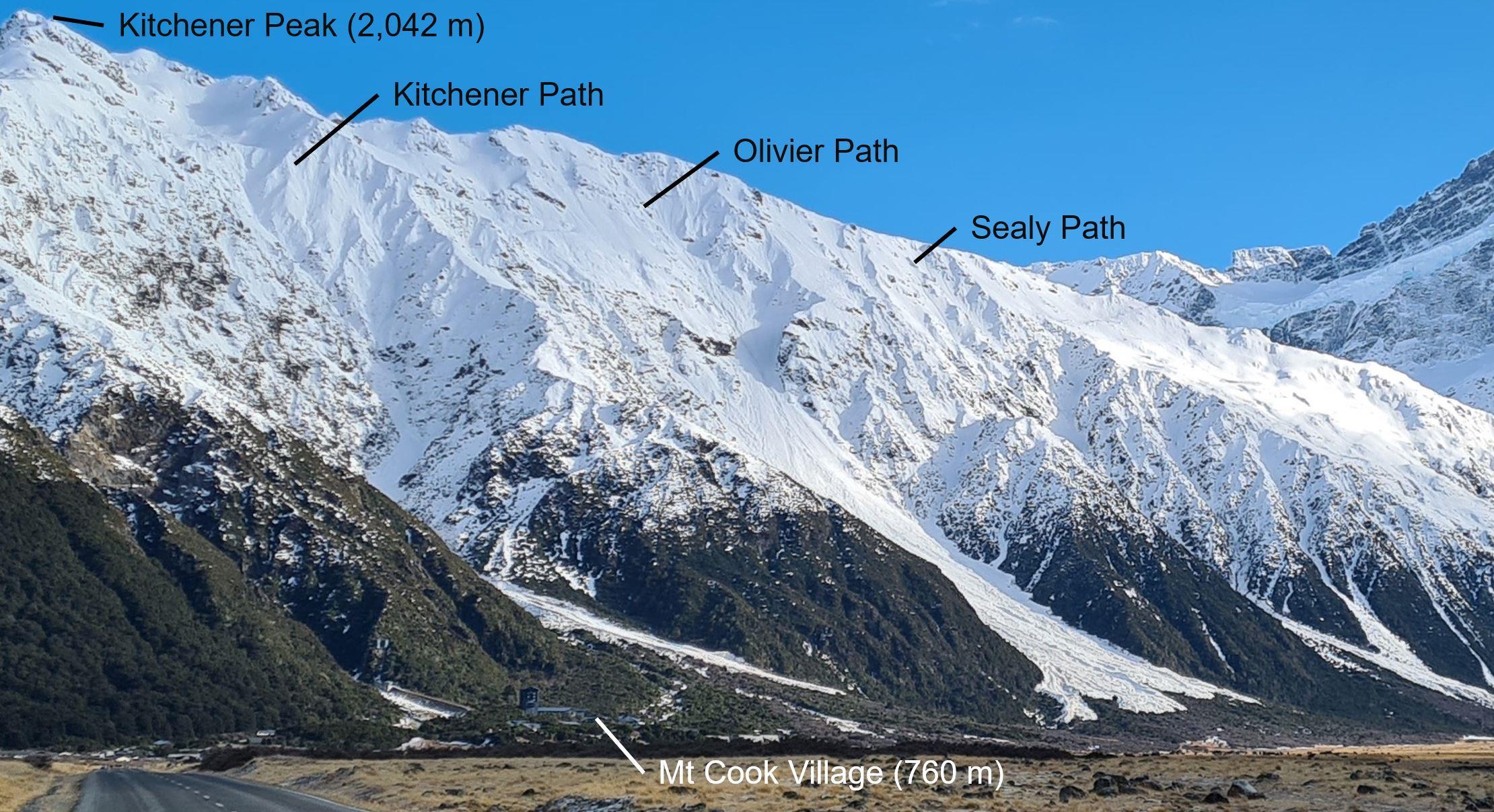


Berm: length of 305 m First Avalanche Second avalanche




Debris flow


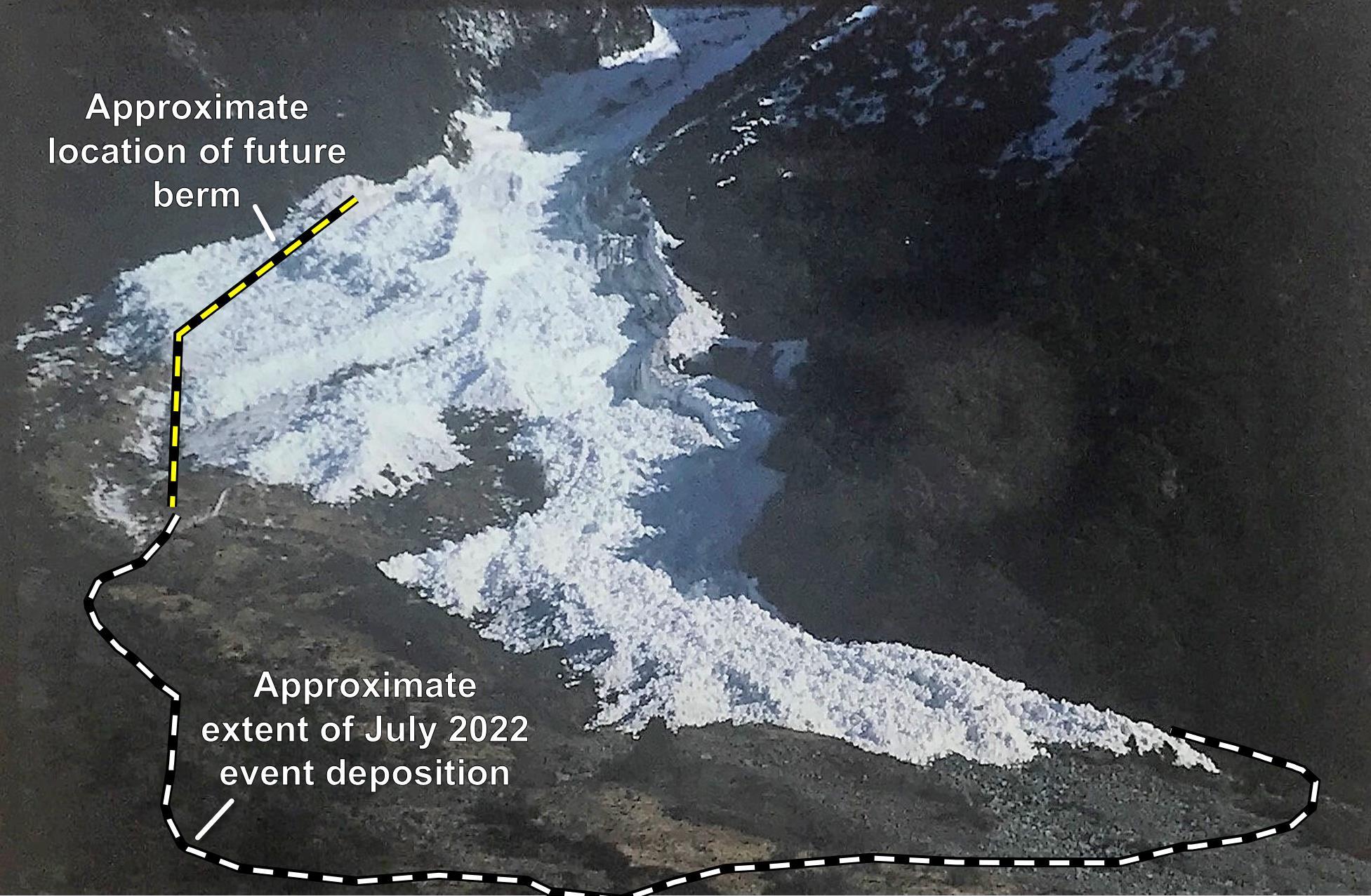
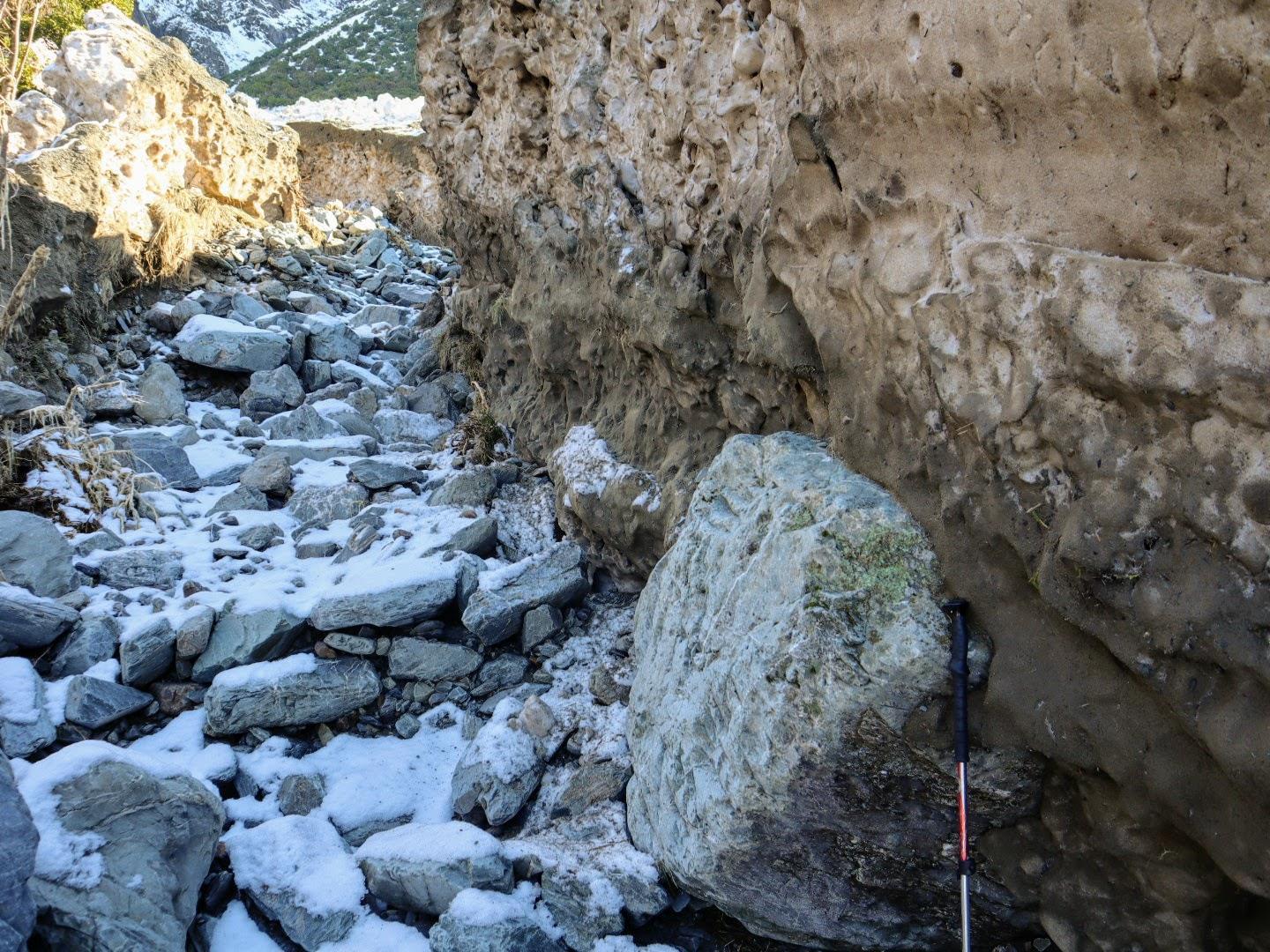



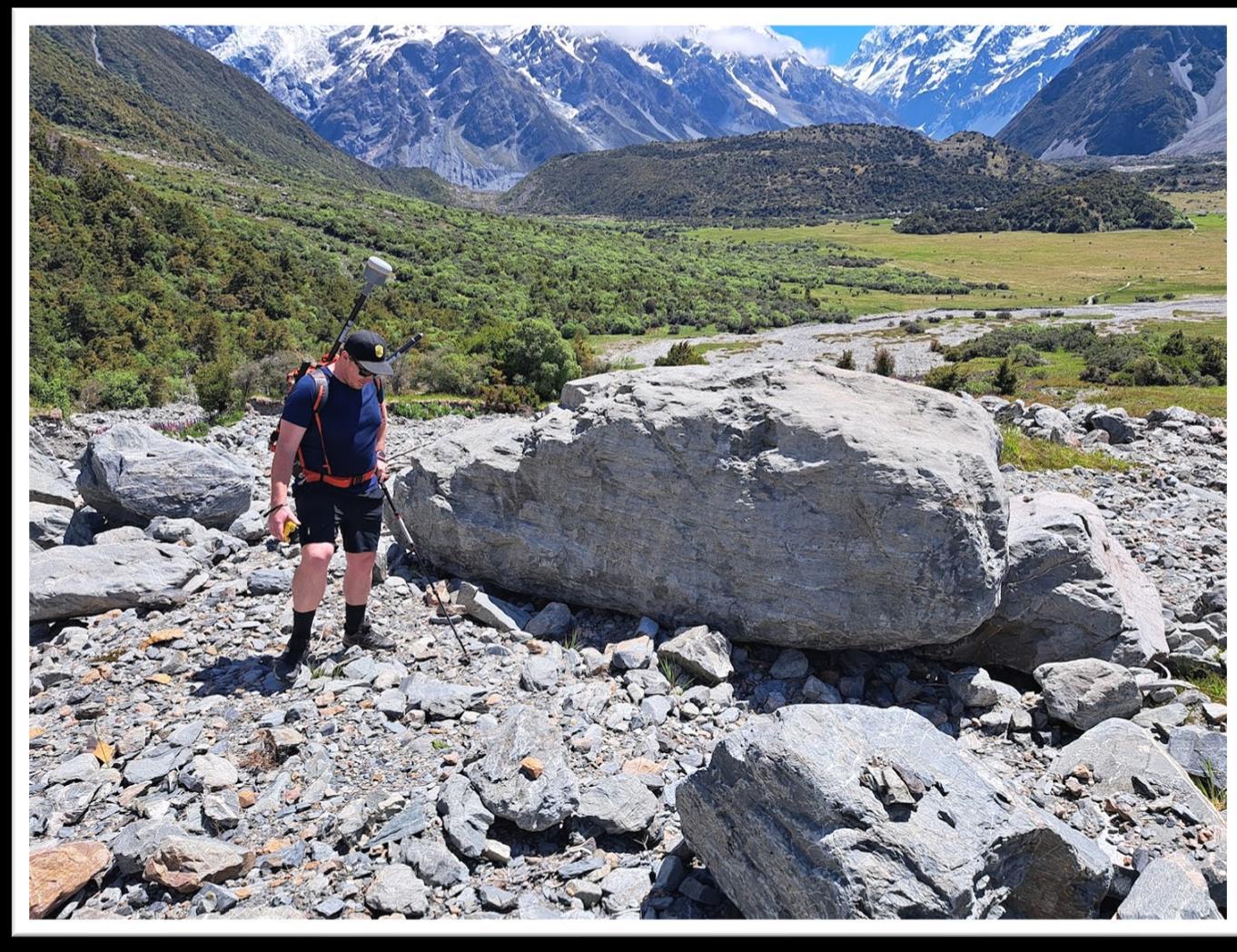
So what?
• So, was this Kitchener event unusual? Was the mechanism unusual?
• This was an infrequent event in terms of rain and avalanches, but offers lessons about future extreme rain.
• Mid-winter rain matters more when snow is more plentiful, especially with recent snow
• Other events with less rain can offer lessons too.
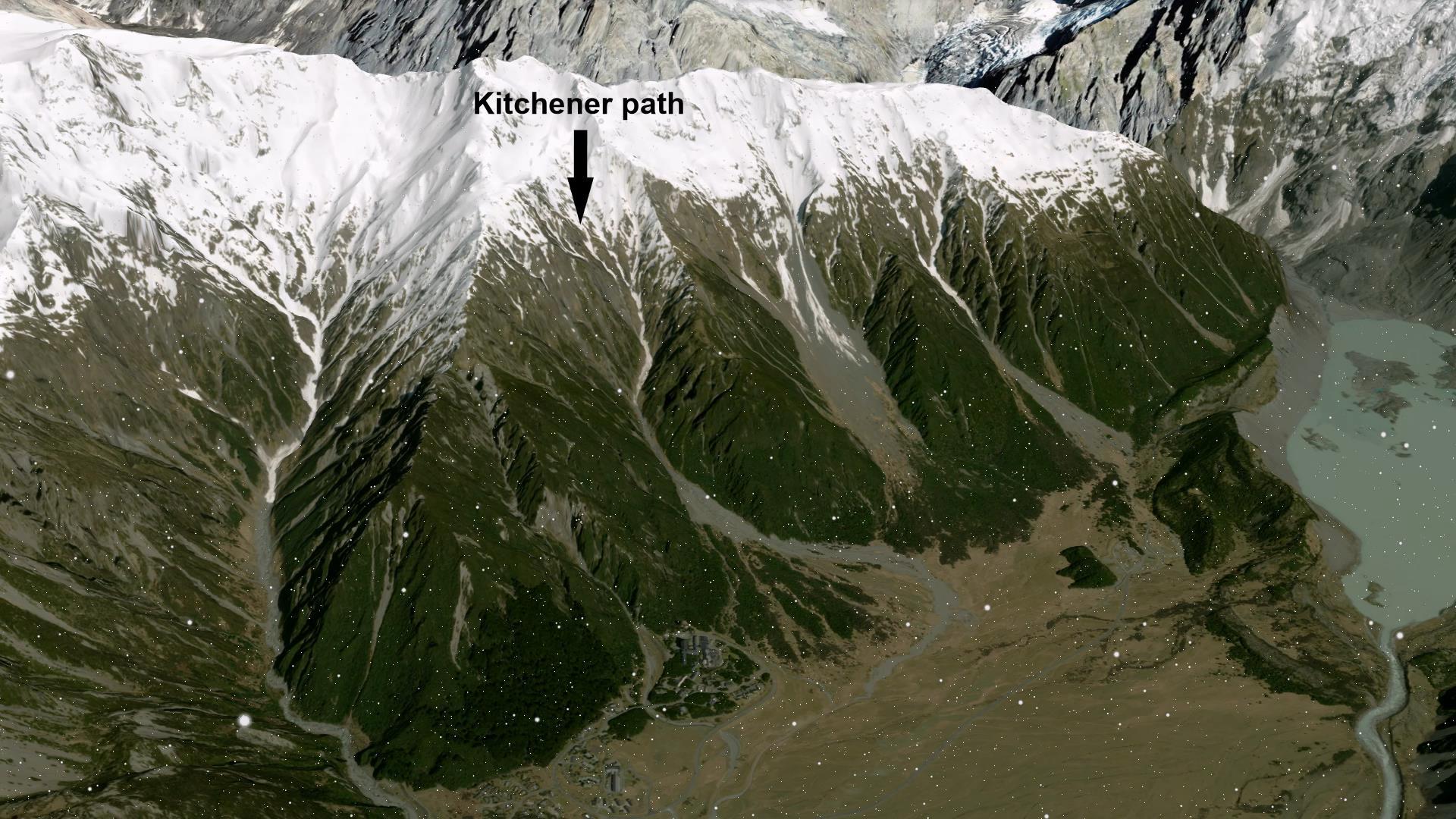
As the saying goes, when it rains, snow flows...
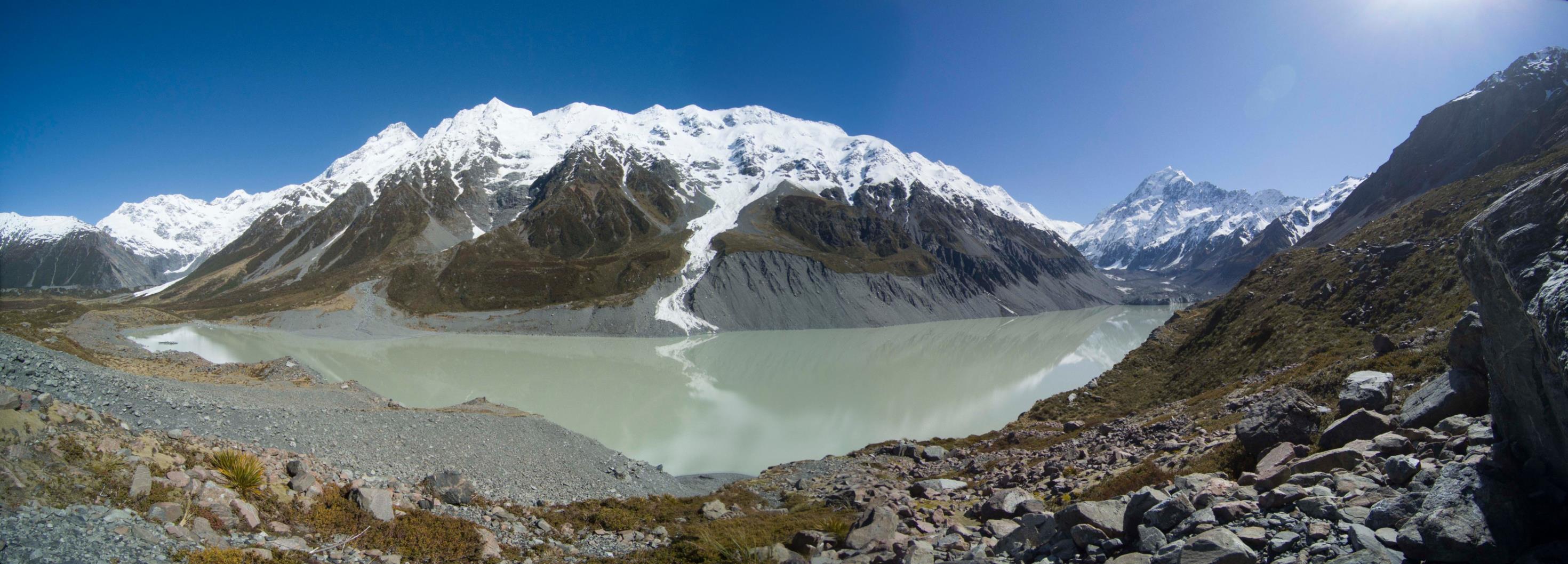
As the saying goes, when it rains, snow flows...
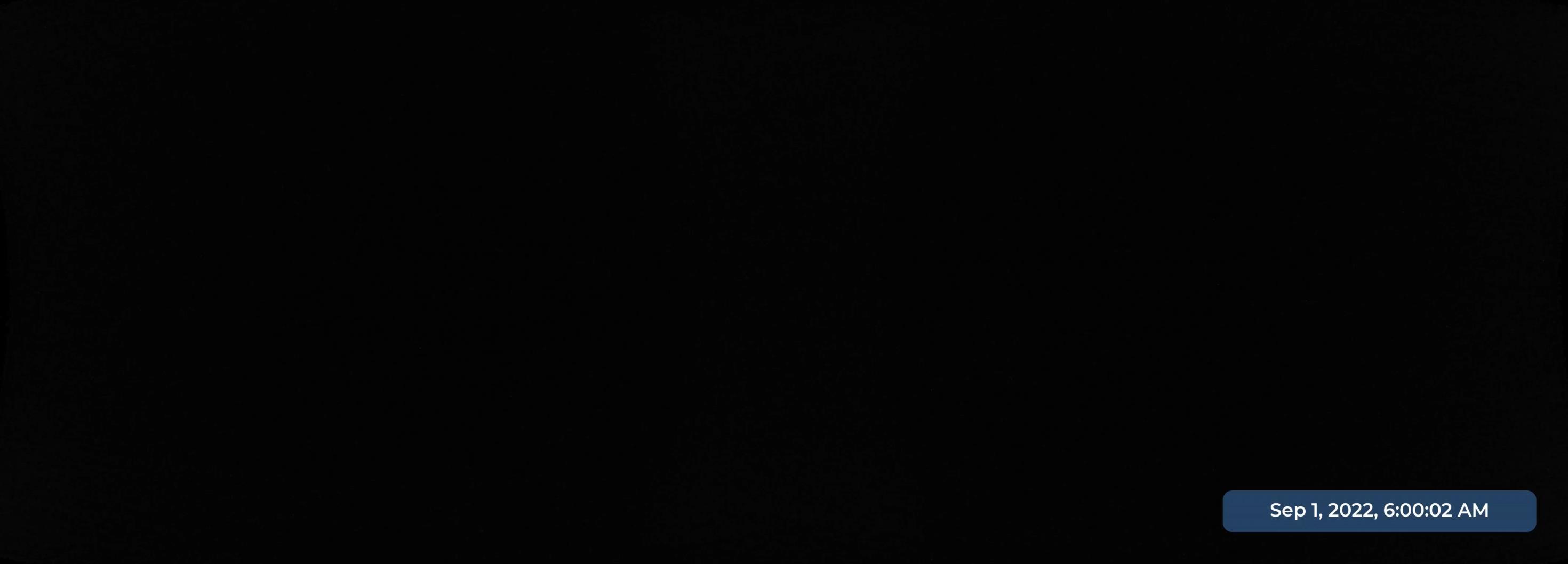
Well, not always.
As an example: 17 September 2023
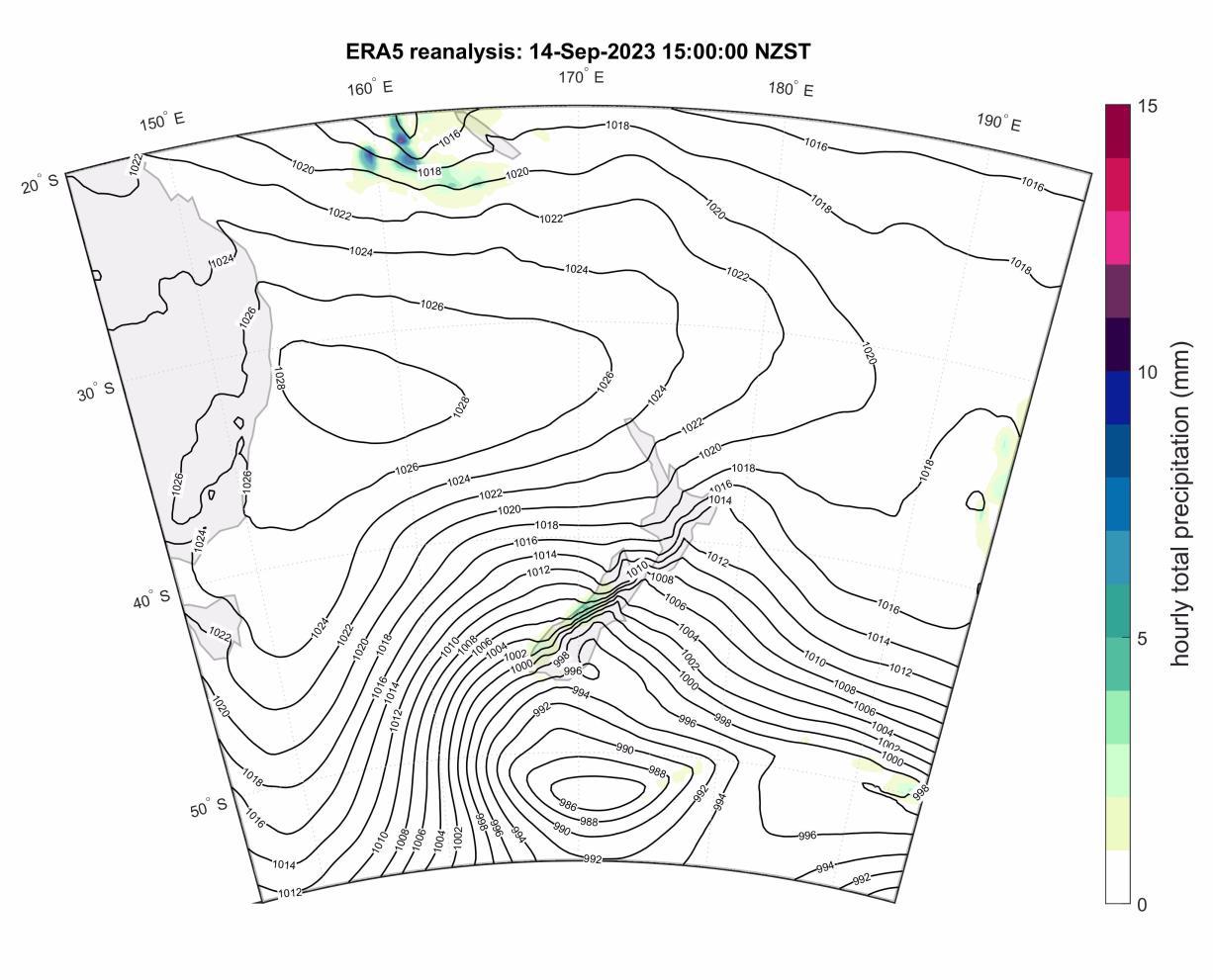
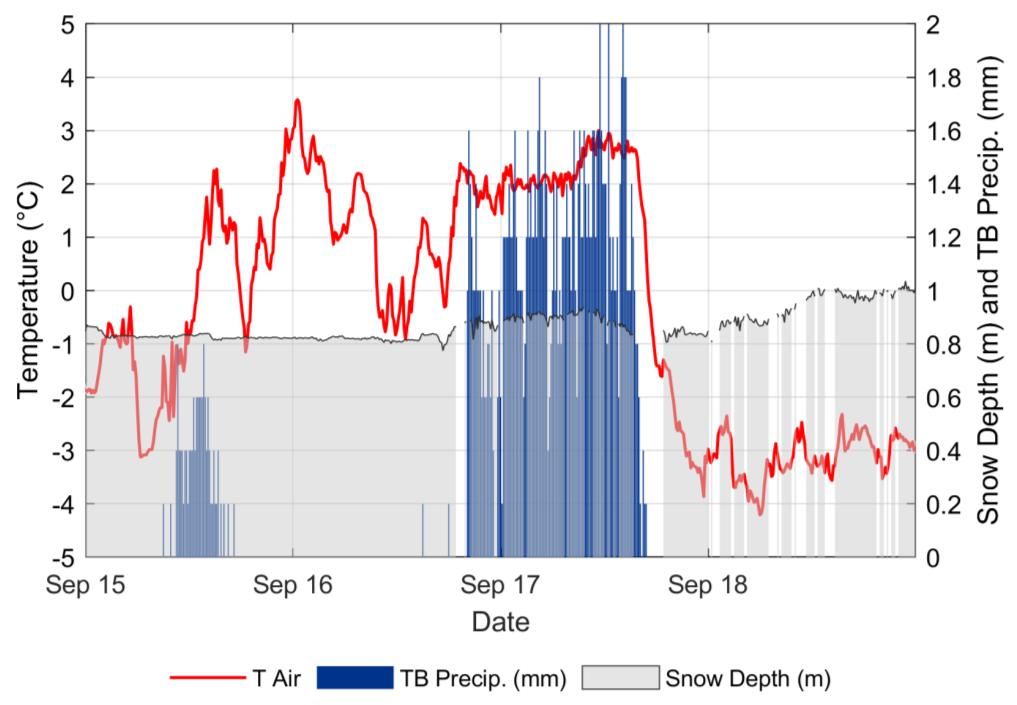

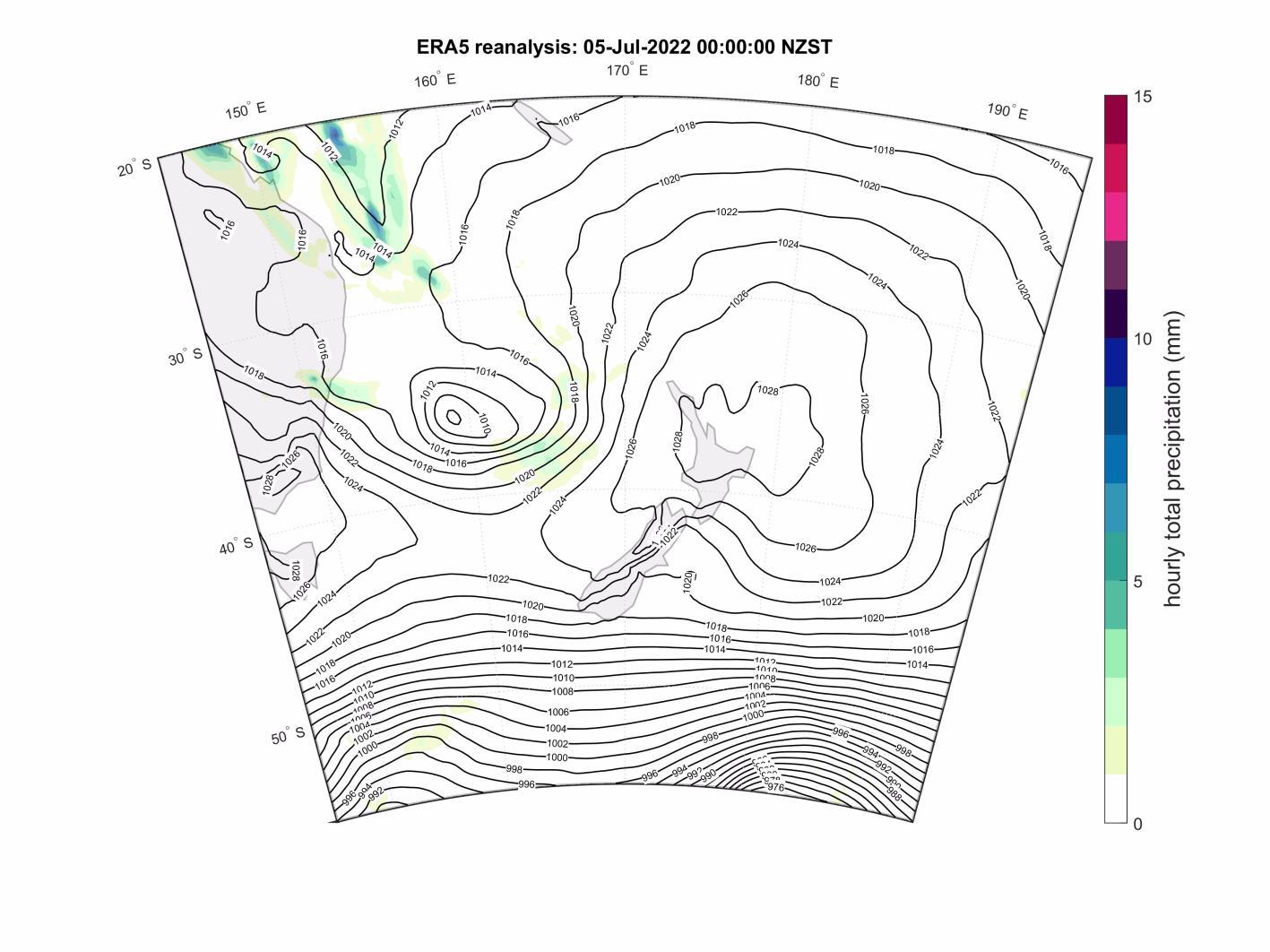
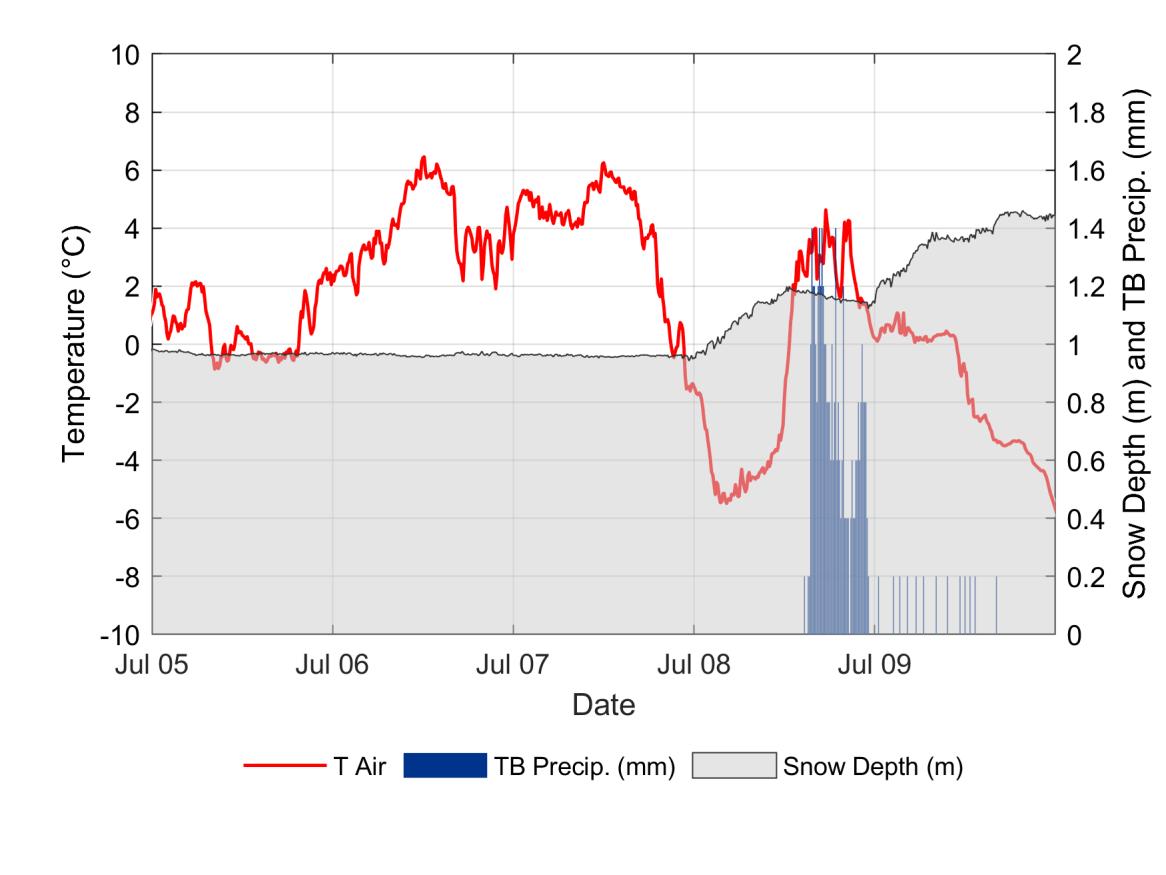
Stewart Stream path
July 9, 2022, 9:45am NZST (ran overnight 8th - 9th)

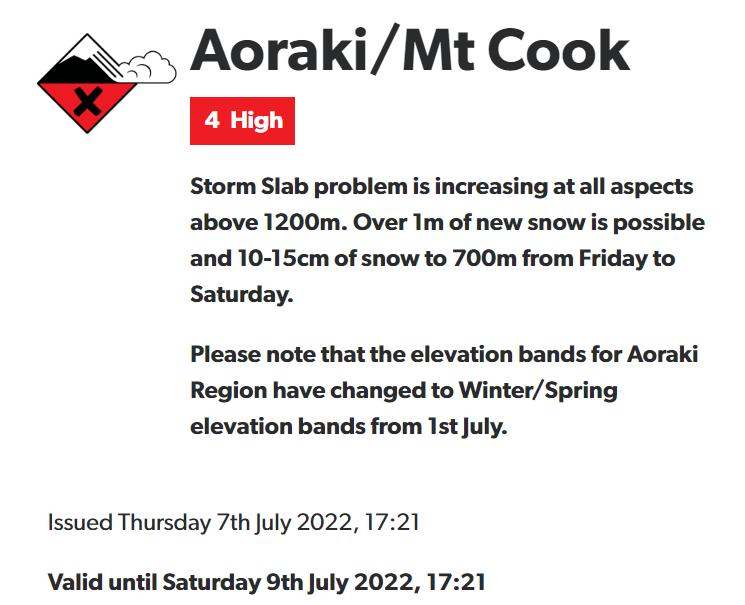


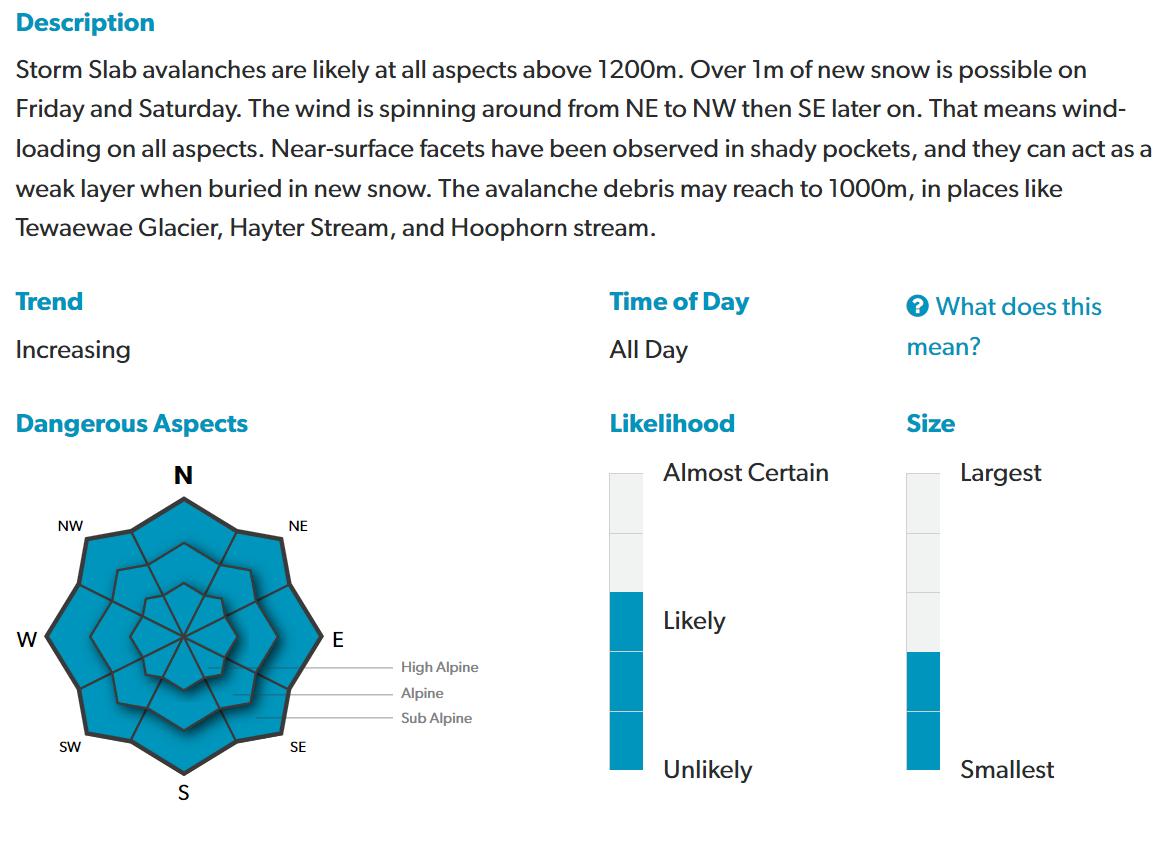

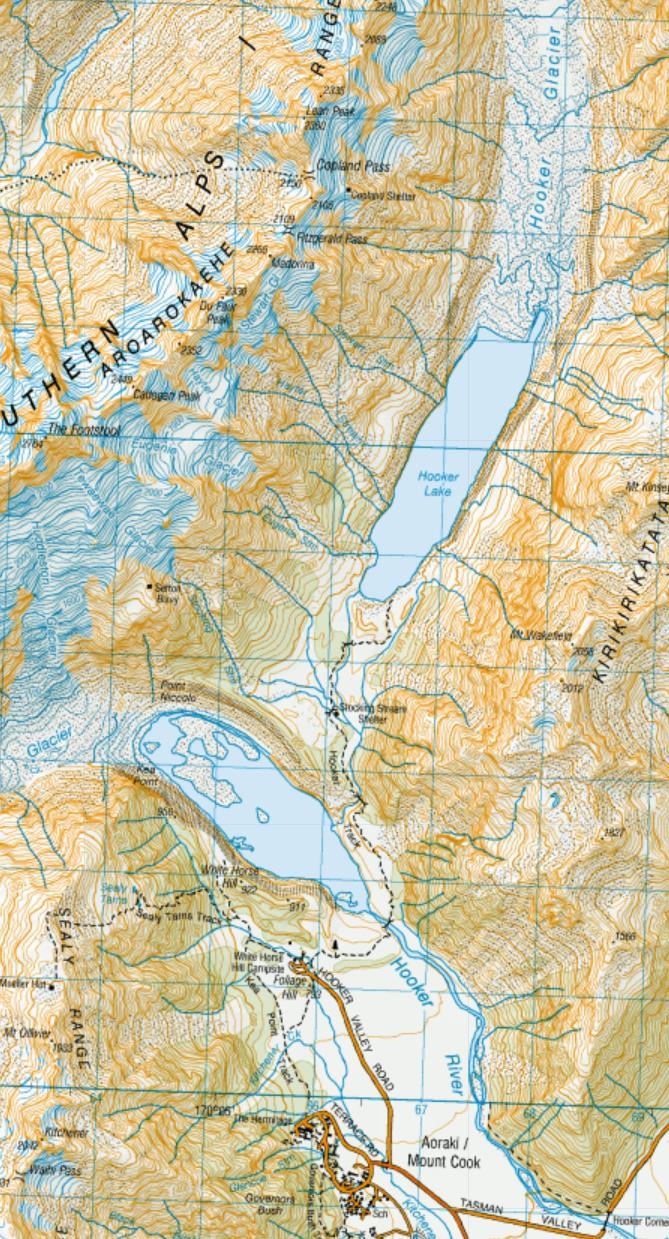

Estimated time of avalanche
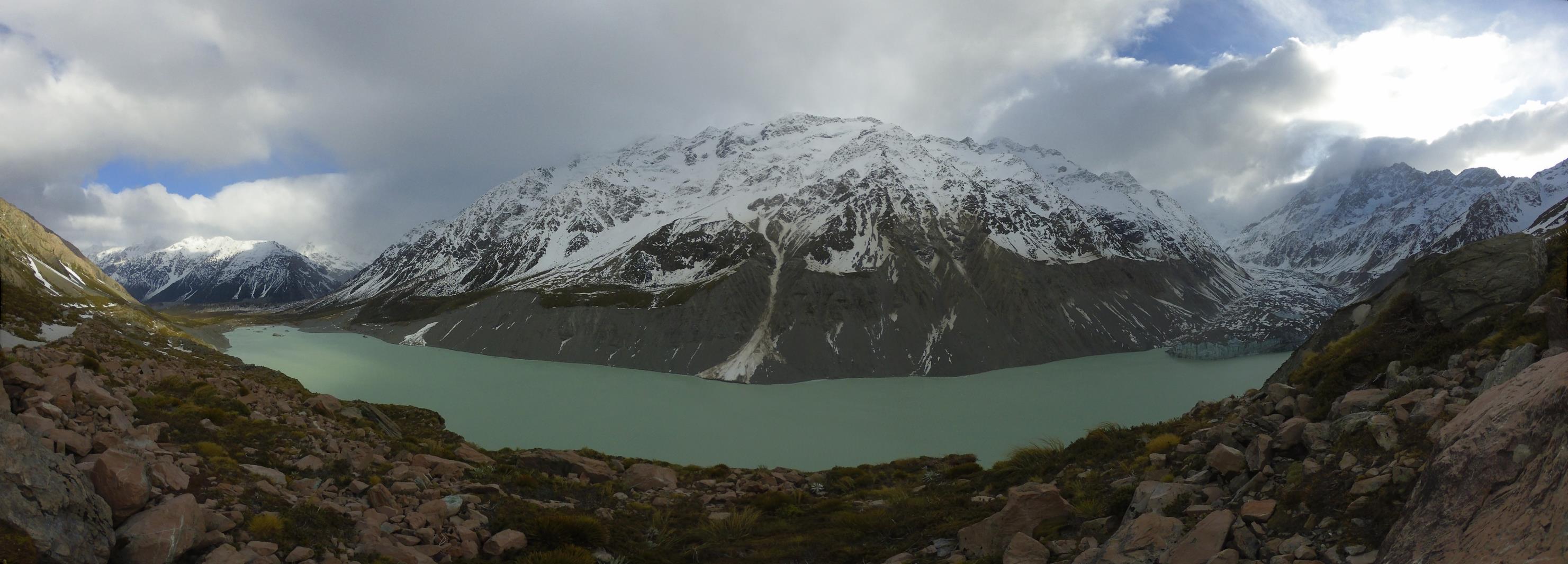
July 5 12:00pm
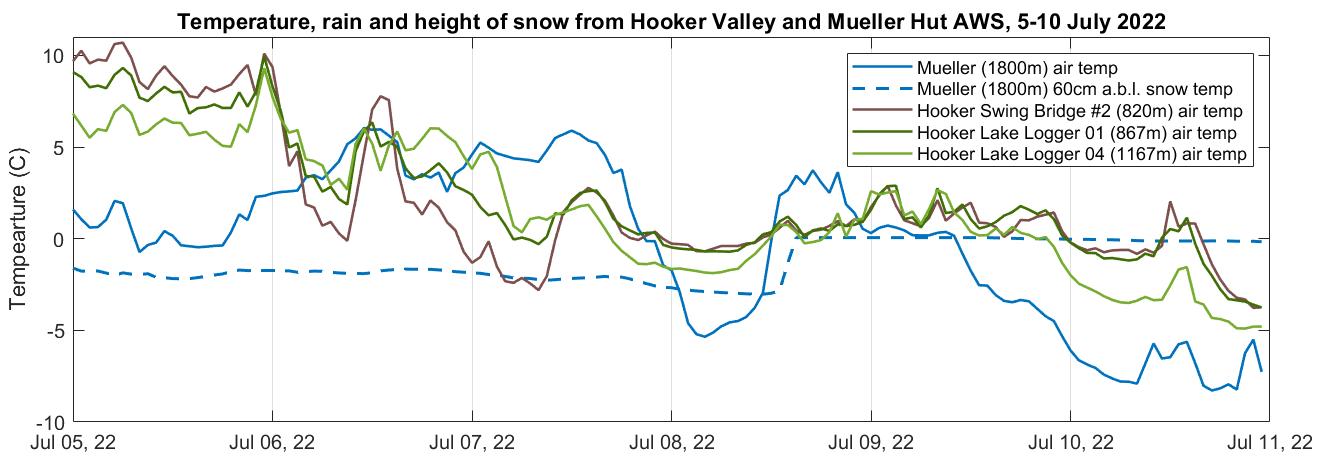
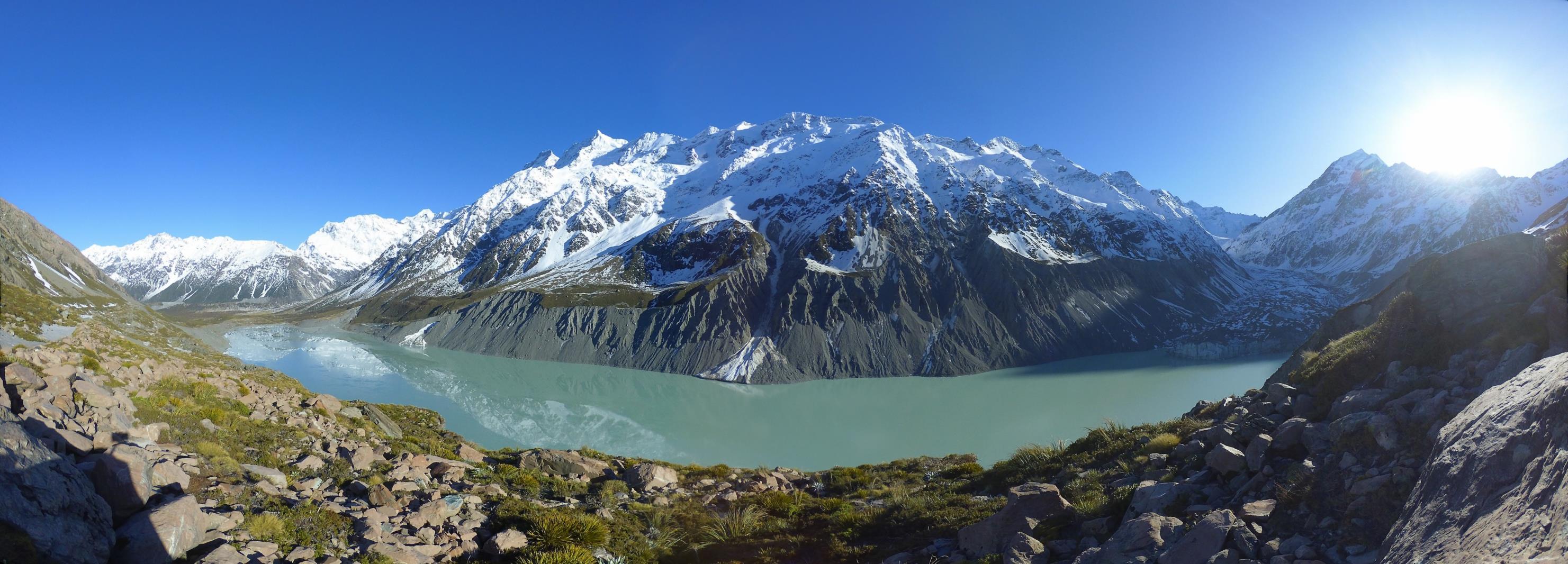
July 6 12:00pm


July 7 12:00pm

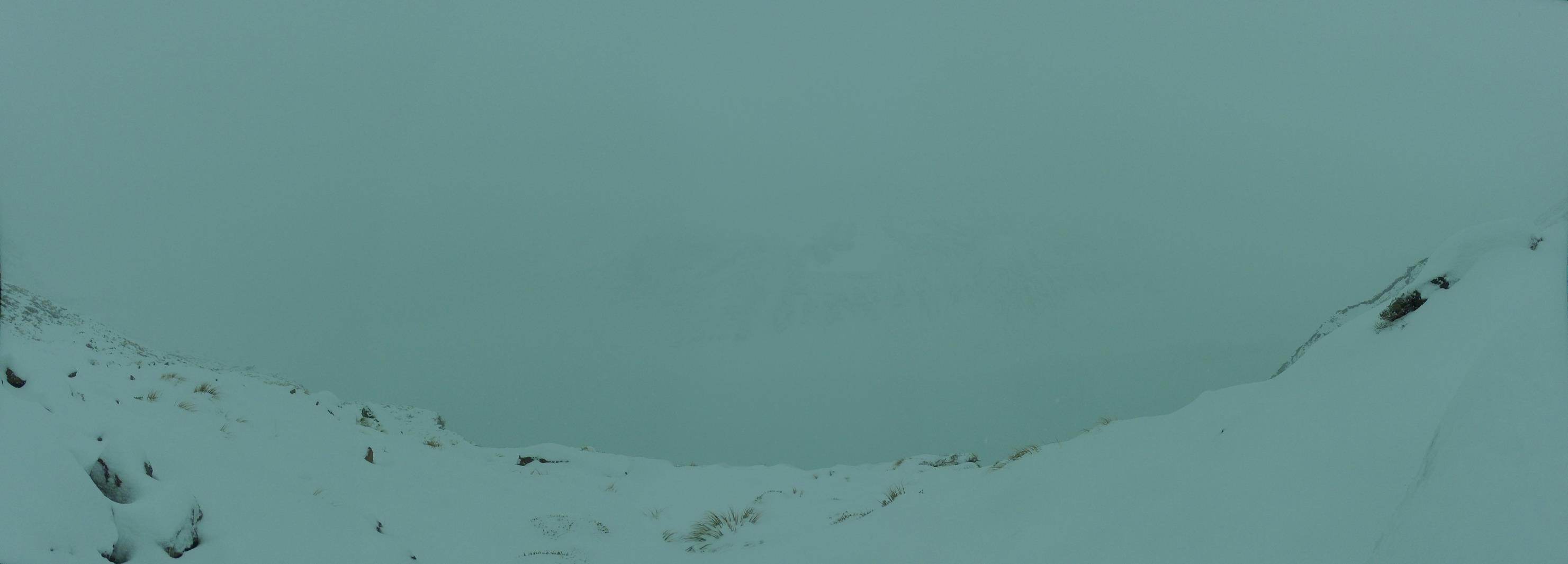
July 8 12:00pm

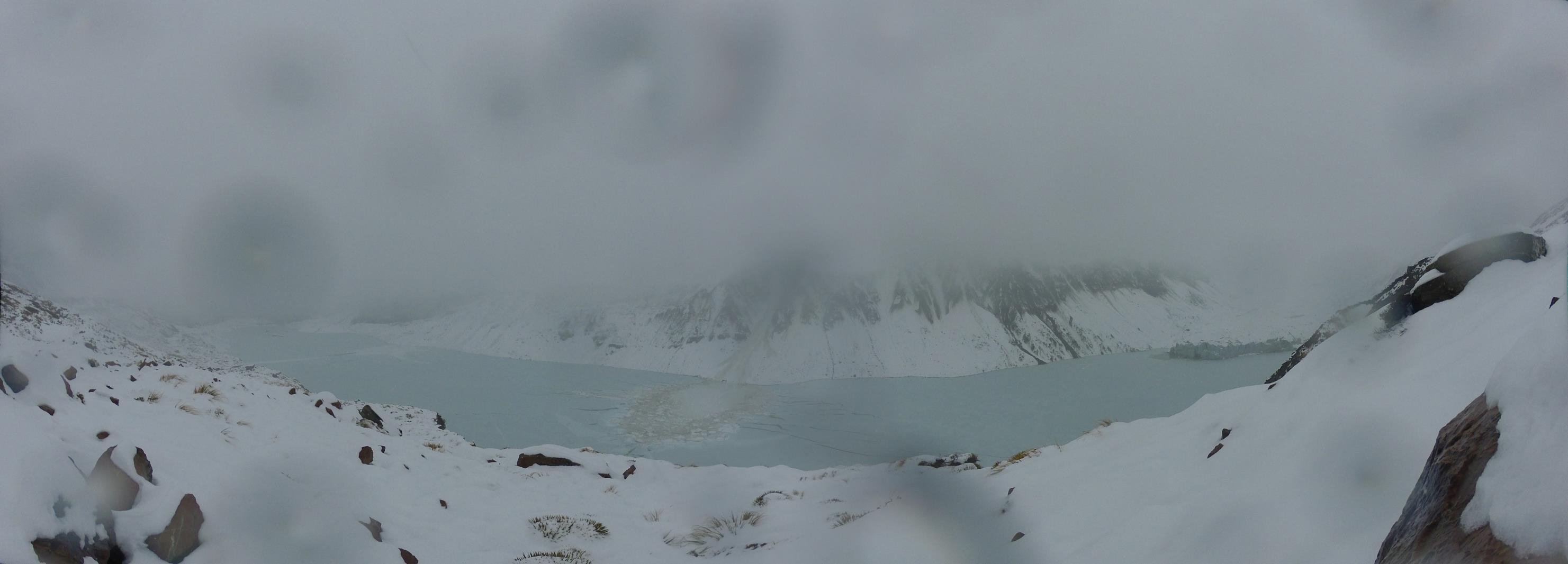
July 9 12:00pm

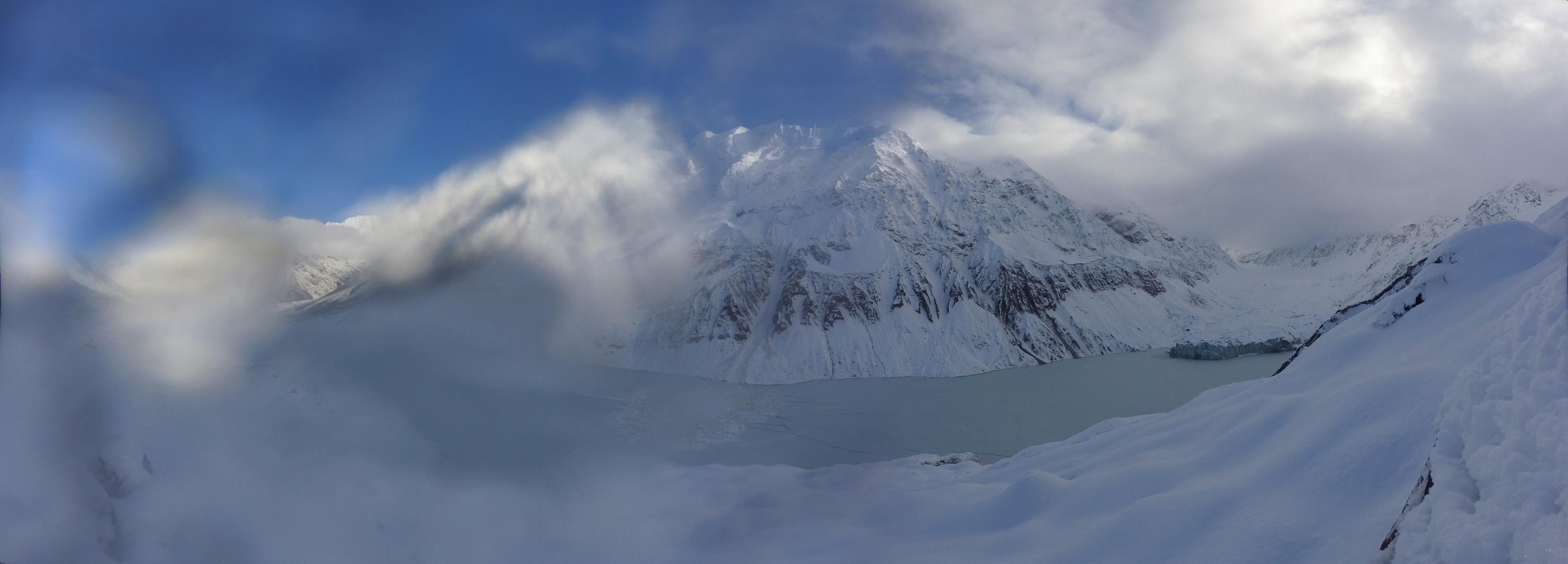
July 10 12:00pm

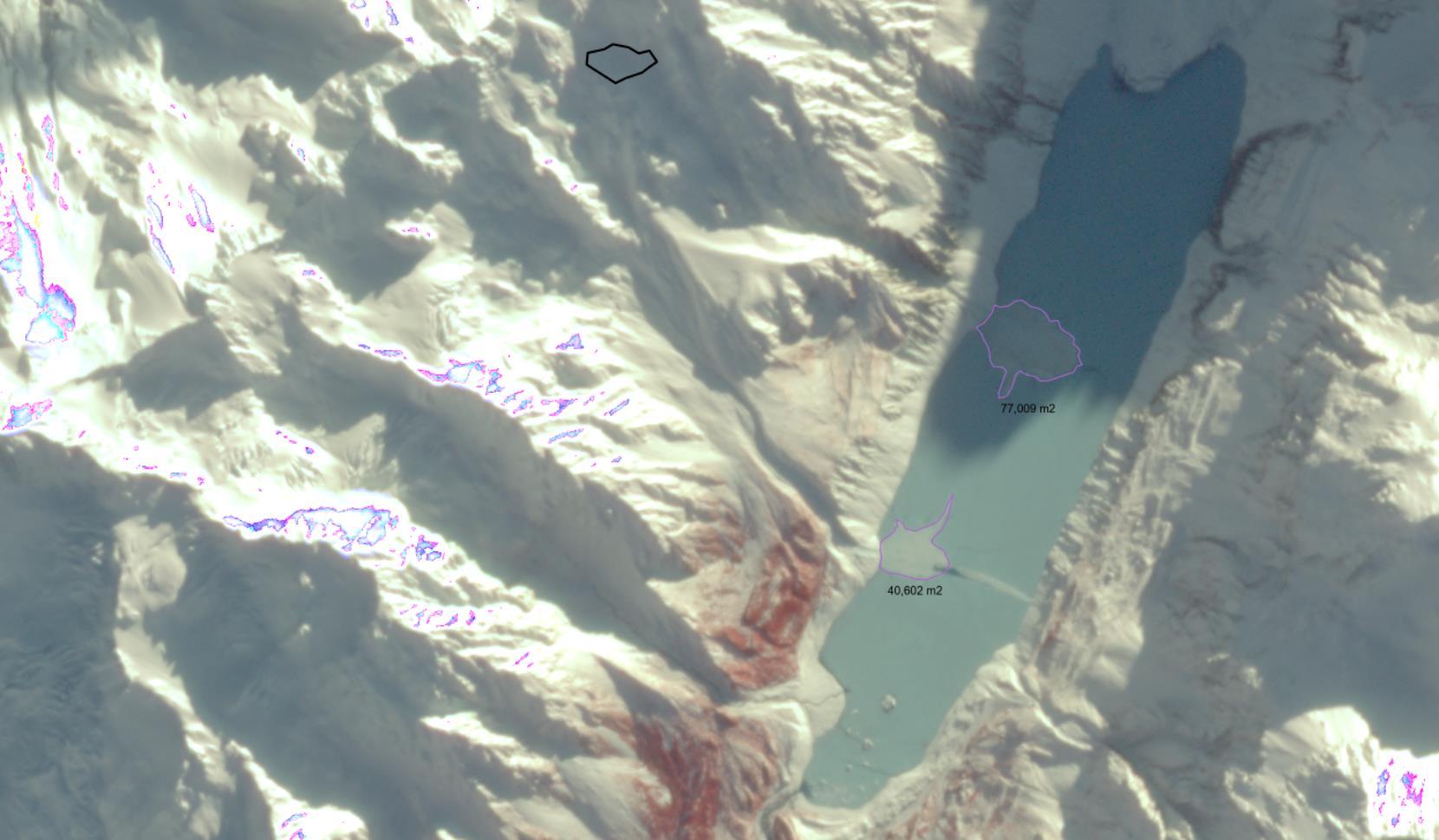
About 10 rugby pitches in area

• Globally, more interest in rain-on-snow as mid-winter rain becomes (more) common.
• In NZ, we need more information about what is happening in release zones to betterunderstand role of rain in release conditions.
• NZ doesnt have an operational physical snowpack model, but this is would help a lot to understand snowpack structure before, during and after rain event. NZ has only limited number of alpine weather stations, so more observations would make modelling more useful.
• For forecasting: thinking about condition of snowpack when rain is forecast. How much rain does matter, but maybe less than the timing of recent snow, how rapid the warming is, etc.
• We are keen for feedback and ideas as we continue our work on rain and snow and avalanches. What do you think is important in NZ context?
• Please come have a chat.
Thanks to the following people and organisations


Don Bogie, Sam West, Pascal Sirguey, Simon Cox, Jono Conway, David Sheppard, Craig Tidey, Mike Denham, Lee Stoermer, Tai Naka, Dave McKinley, George Loomes, Dave Dittmer, Mike Smallwood, Alan Jones, Dave Lewis, Dave Still, Rob Young, Etienne Berthier, Blair Fitzharris, Nicolas Cullen, Perry Bartelt, Yves Bühler, anyone we forgot. Department of Conservation, Mountain Safety Council, Interpine Group Ltd, DoC Alpine Mountain Rescue, Dynamic Consulting, Davis Ogilive, CNES/PGO, NIWA, WSL SLF, Enlaps




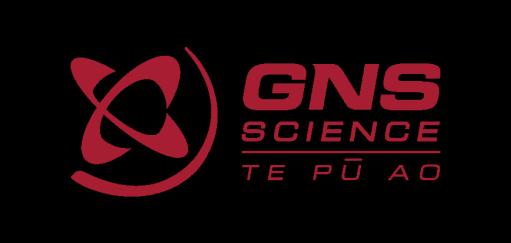



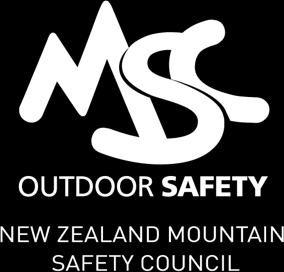

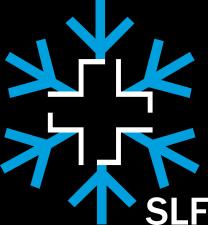

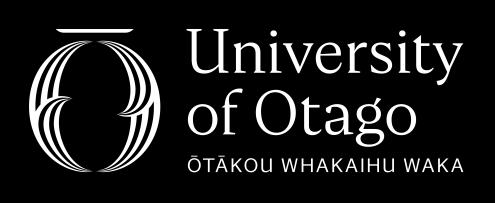
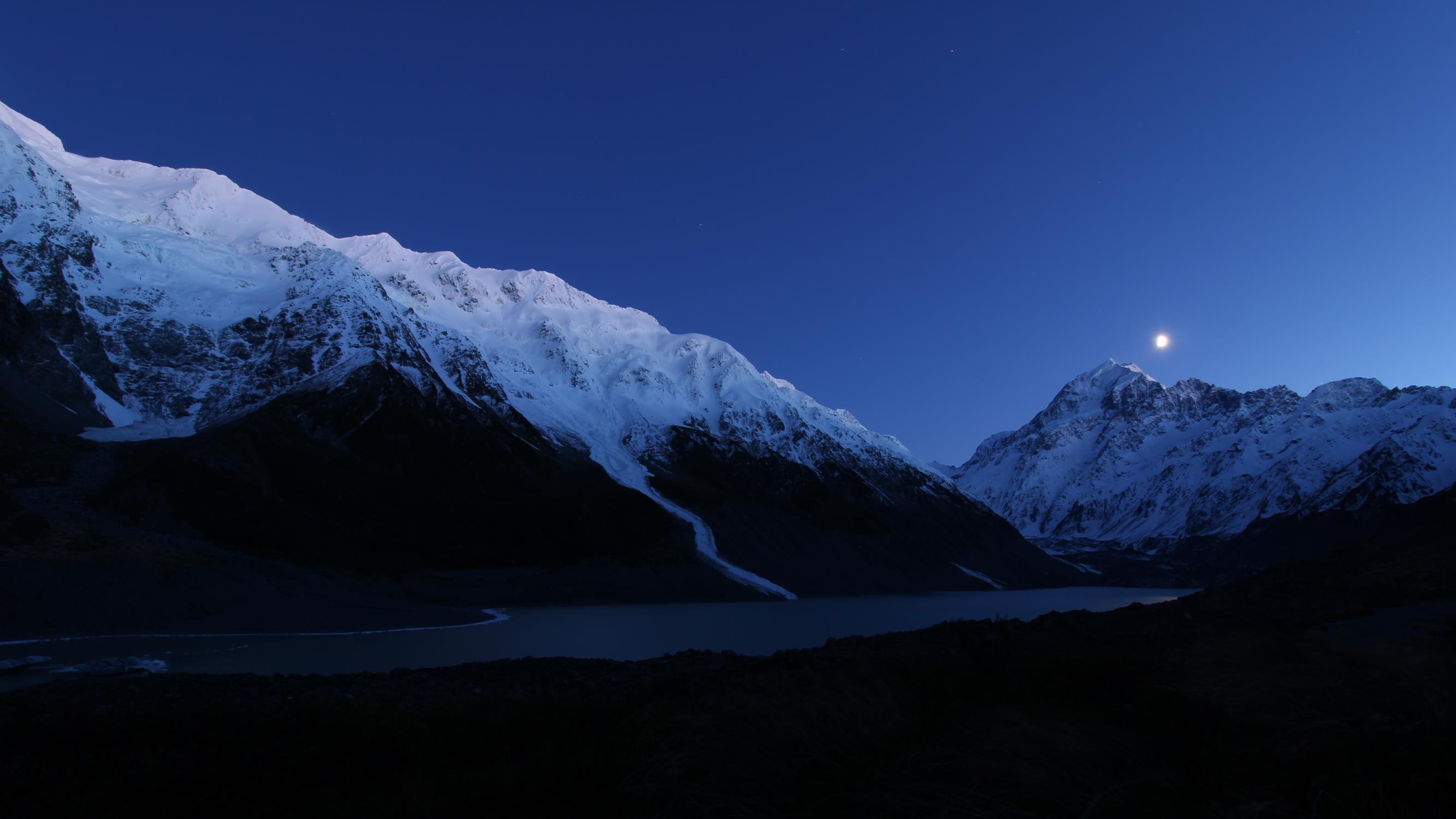





Jono Conway and Alice Hill
with contributions from Christian Zammit, Lawrence Kees, Rasool Porhemmat and Bruce Dudley
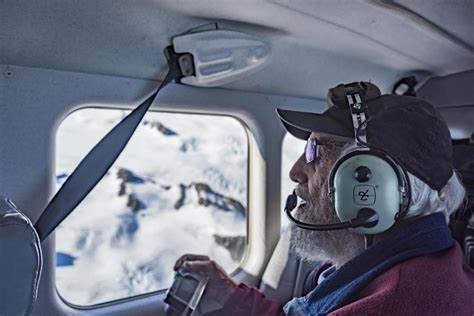
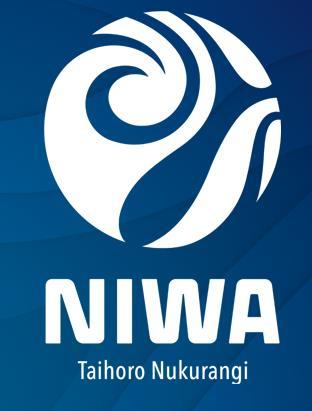
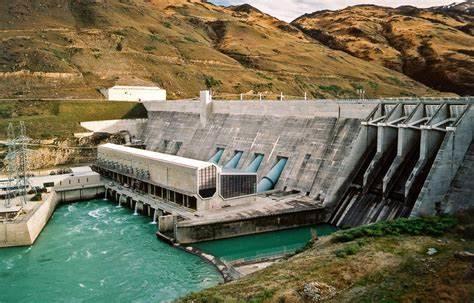
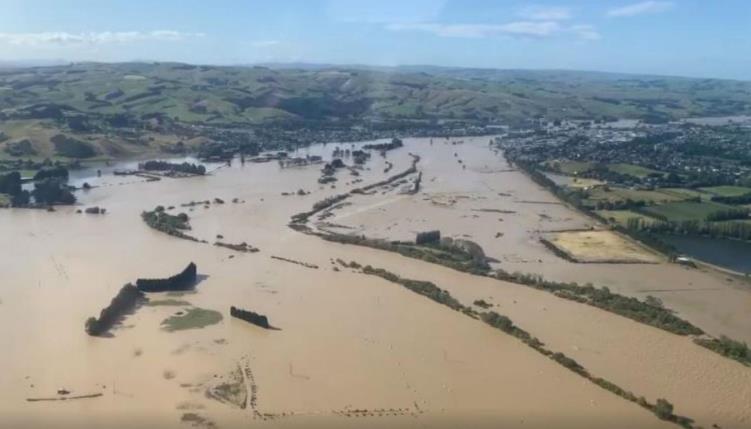
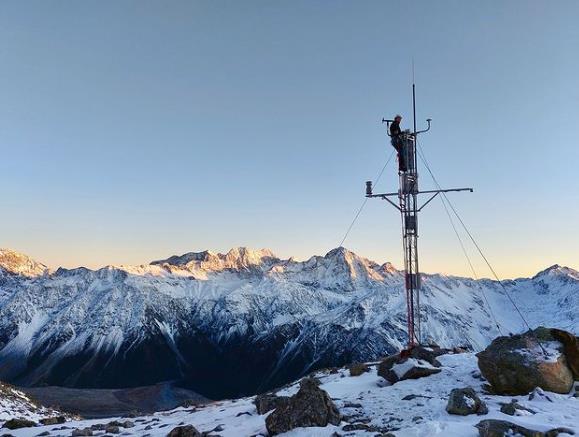
1. What we learned from your citizen science
2. Snow and Ice Network – winter 2023 wrap, new sites and instruments
3. SnowMelt Forecast Project: A national scale snowmelt forecast, coming soon!
4. New climate projections
5. Winter outlook
Thank you NZ skiing and climbing communities!
What we learned from your citizen science
My ask
send me alpine snow samples, whenever, wherever

Oxygen isotopes Water = H2O
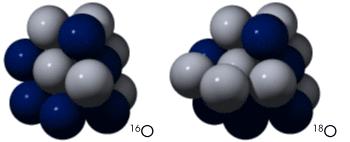
2 more neutrons

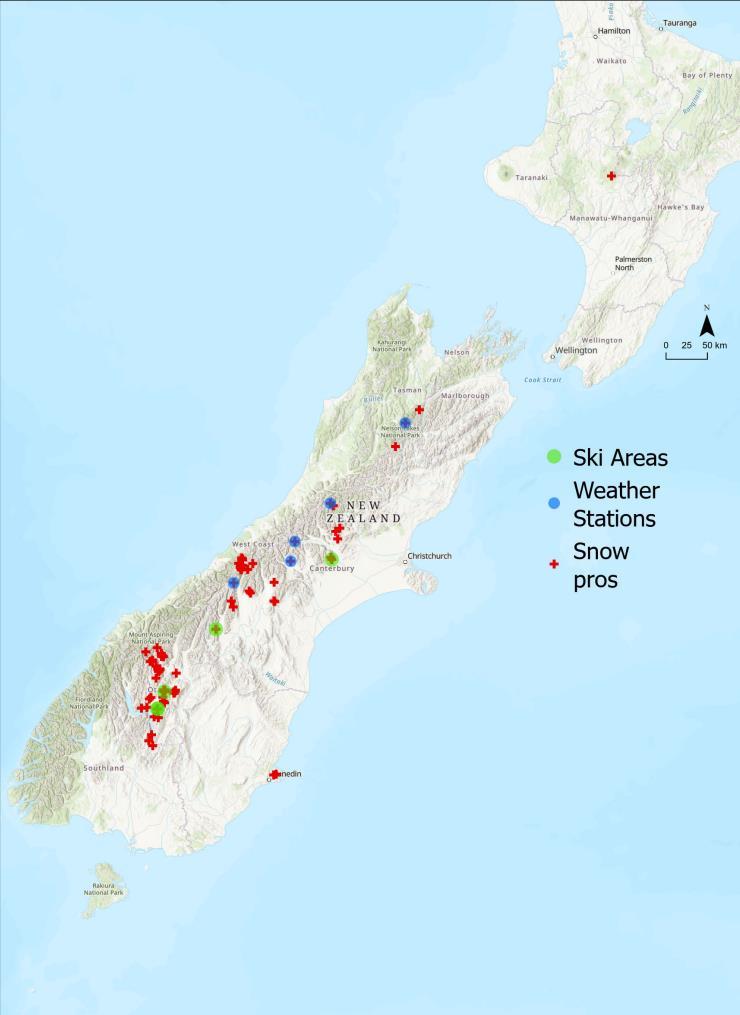
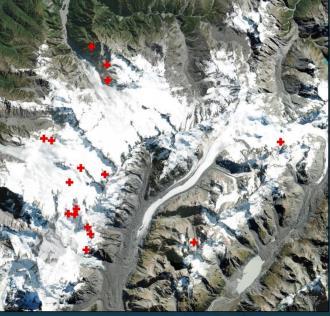
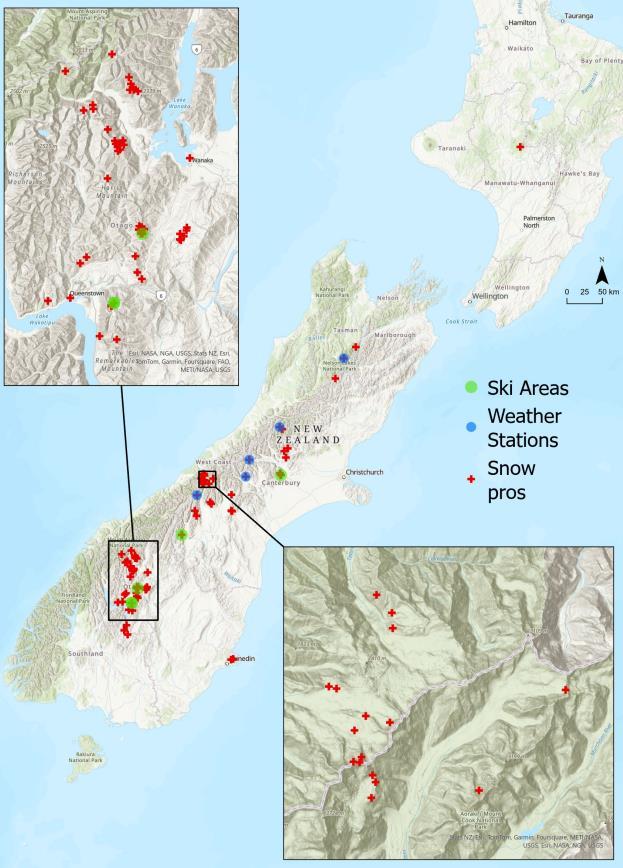



An important gateway for climate-sensitive water research

Your samples enabled an improved national model of snow and rain isotopes
An important gateway for climate-sensitive water research

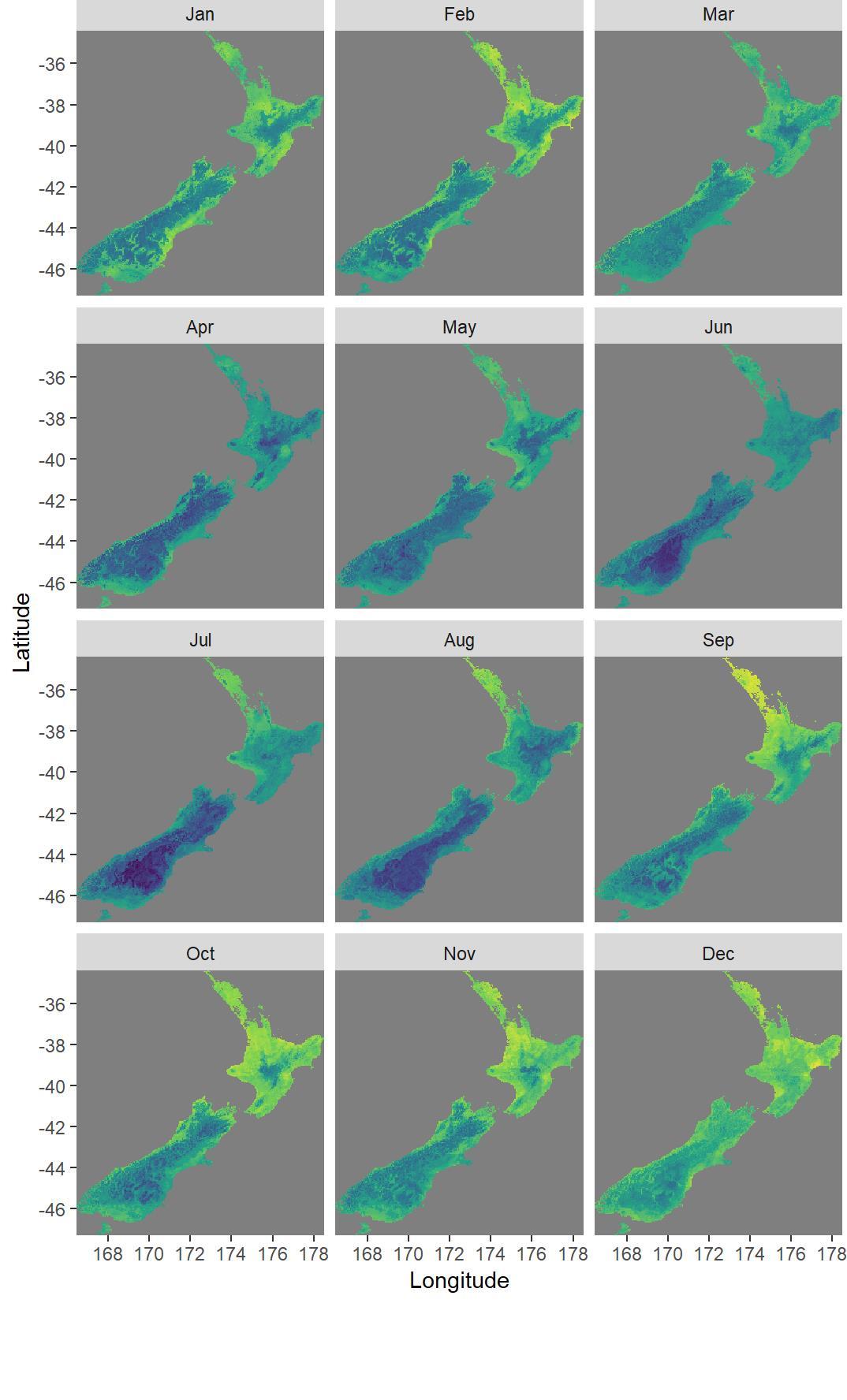
Your samples enabled an improved national model of snow and rain isotopes
An important gateway for climate-sensitive water research


Snow samples helped us characterise critical winter seasonality
Work led by Bruce Dudley (NIWA)

Seasonal isotope variation of river water
Seasonal isotope variation of rain and snow
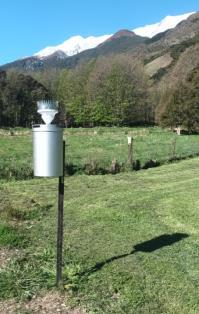
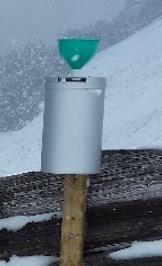
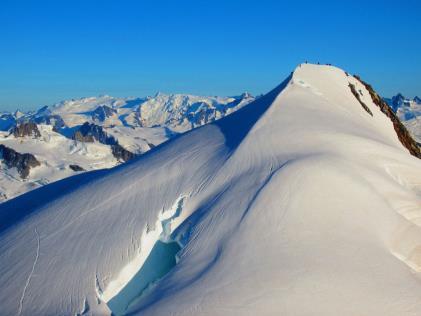
The proportion of water less than ~ 2 months old

Younger water is more prone to nutrient and sediment loading
Identifies potential water quality “hot spots”


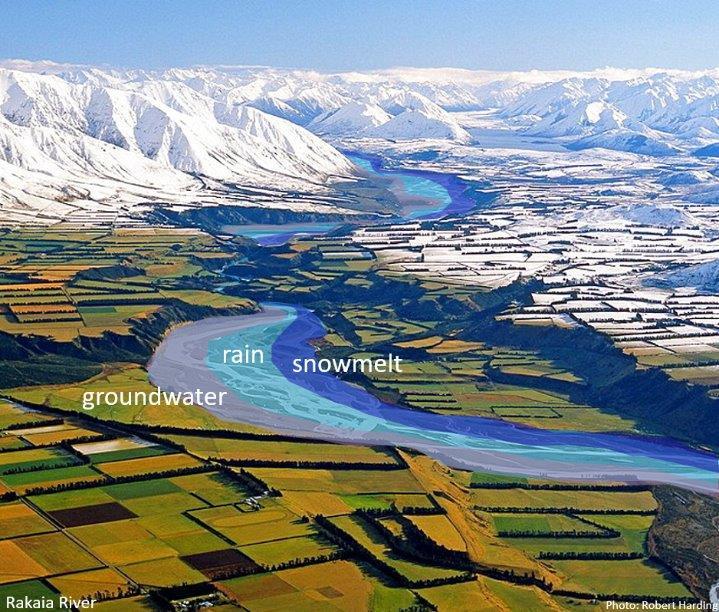
For example: River flow vulnerabilities in a warming world



- Winter 2023 wrap
- Data access
- New sites and measurements
• High-altitude automatic weather stations that also collect data on: snow depth snow water equivalent (+ density) also snow temperature, solid precipitation, snow albedo
• Purposes: snow hazard, water resources and climate record
• First sites installed 2009, so start of good record now
• Site specific measurements but give useful picture of year-to-year variability

+ Crawford Knob
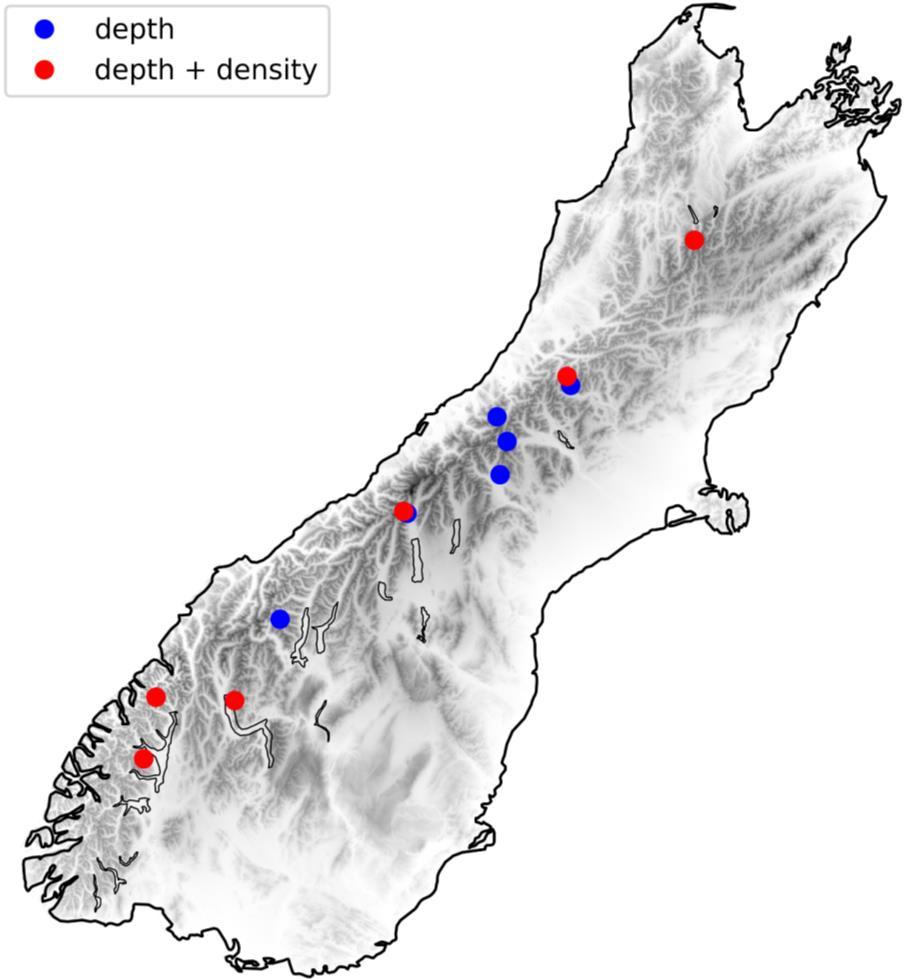
https://niwa.co.nz/freshwater-and-estuaries/research-projects/snow-and-ice-network
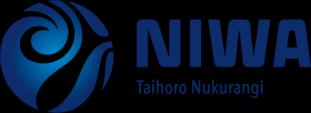
Mean snow depth (1 Apr 2023 – 4 Jan 2024) as percent of climatology over same dates (100% == average) North
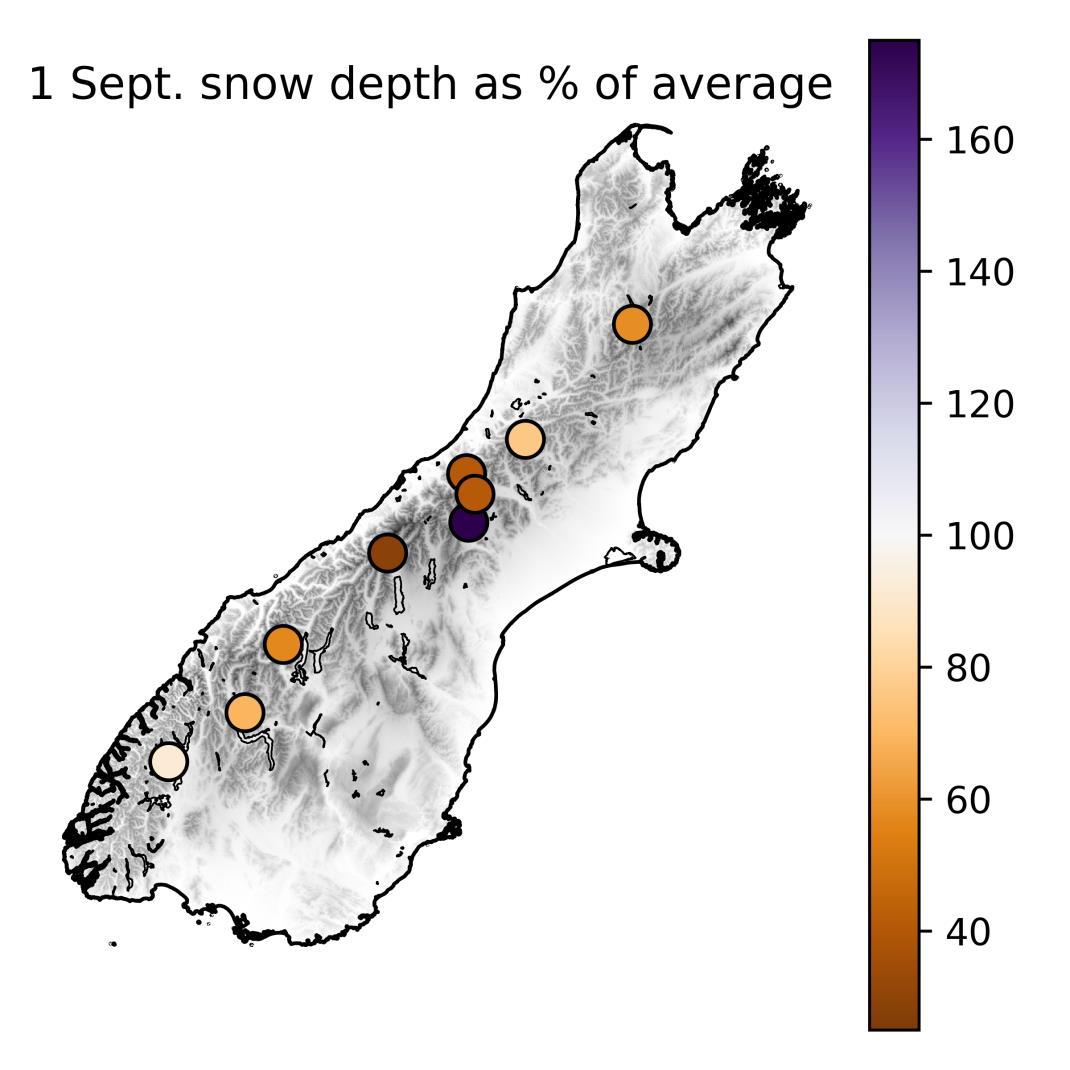
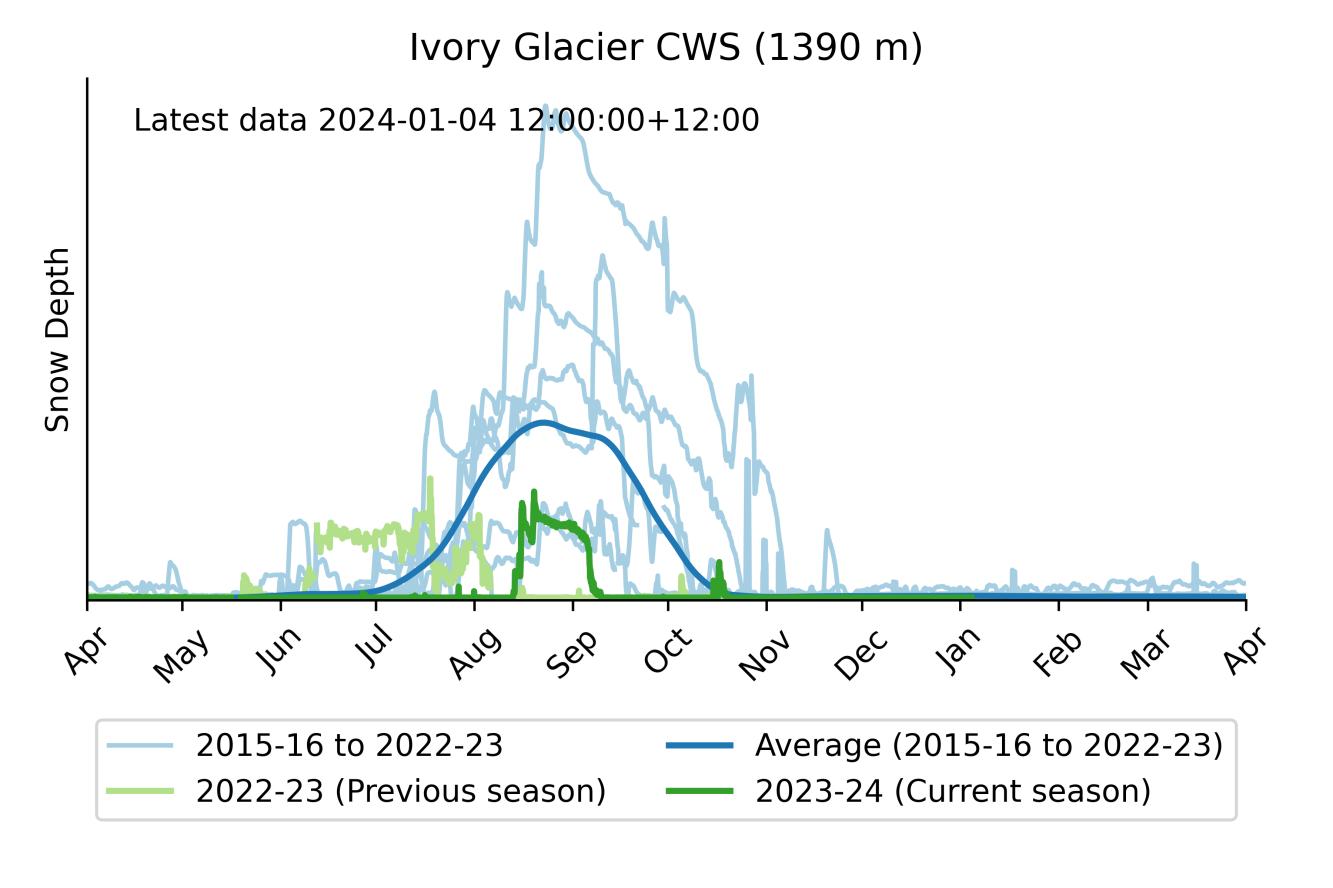
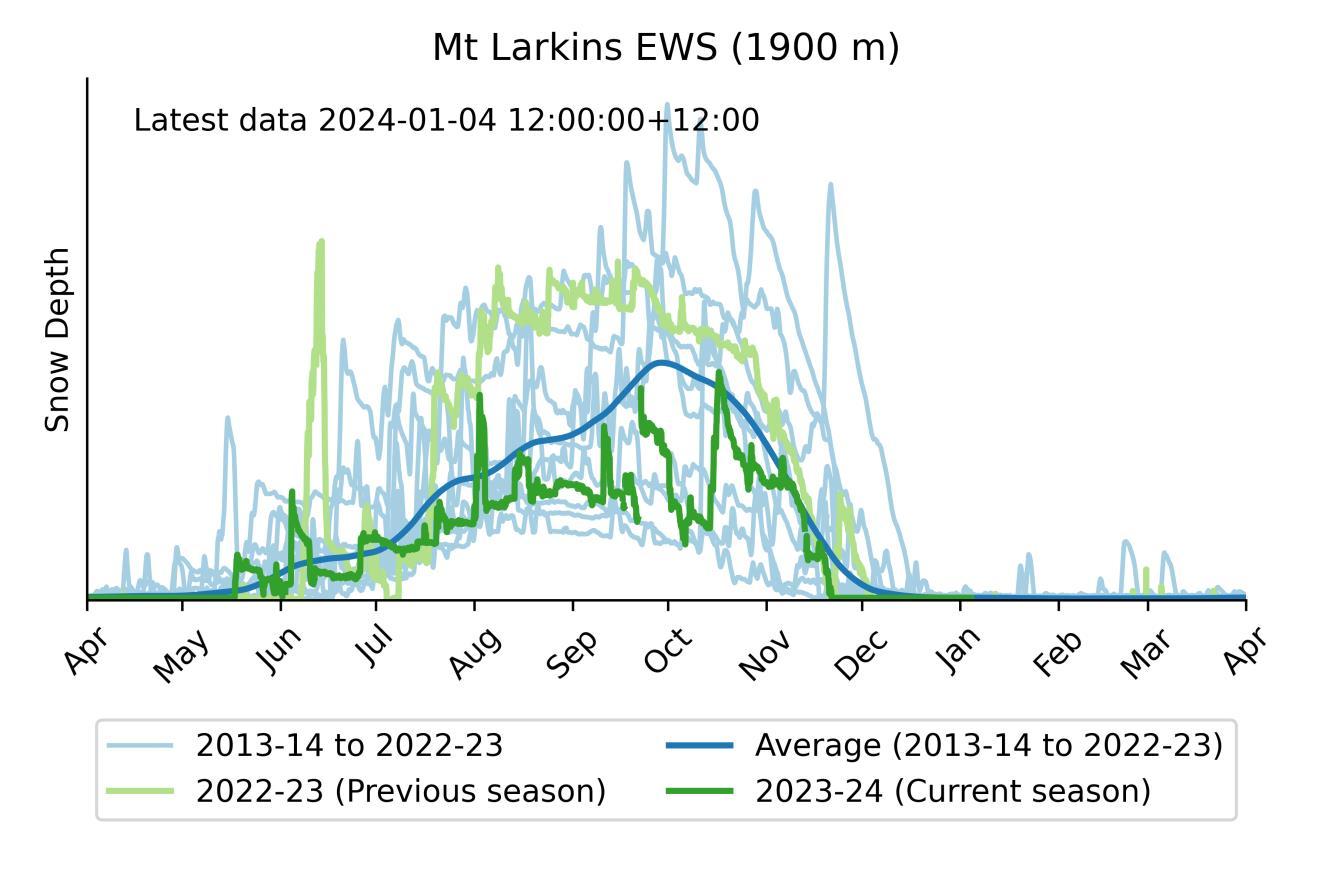
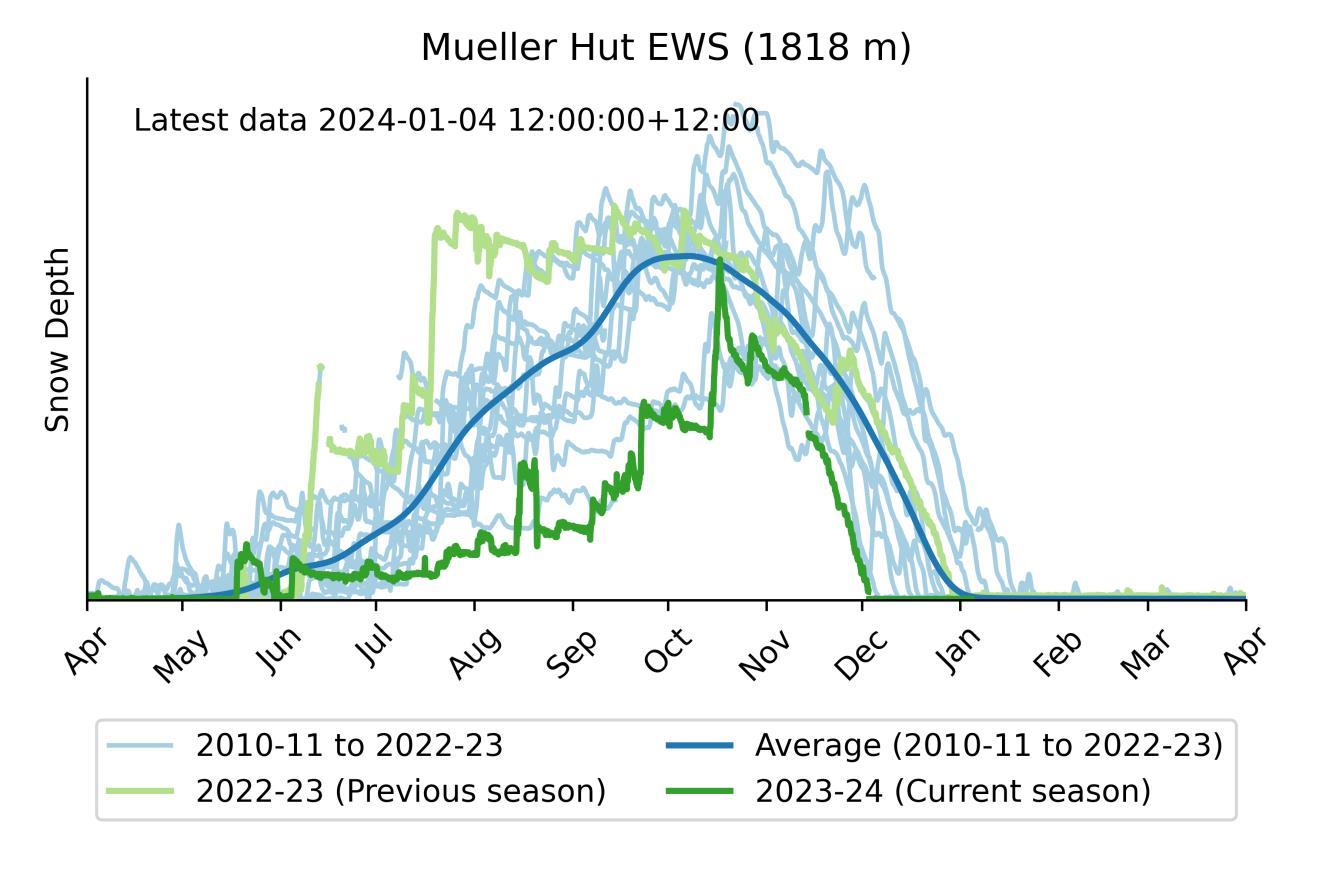
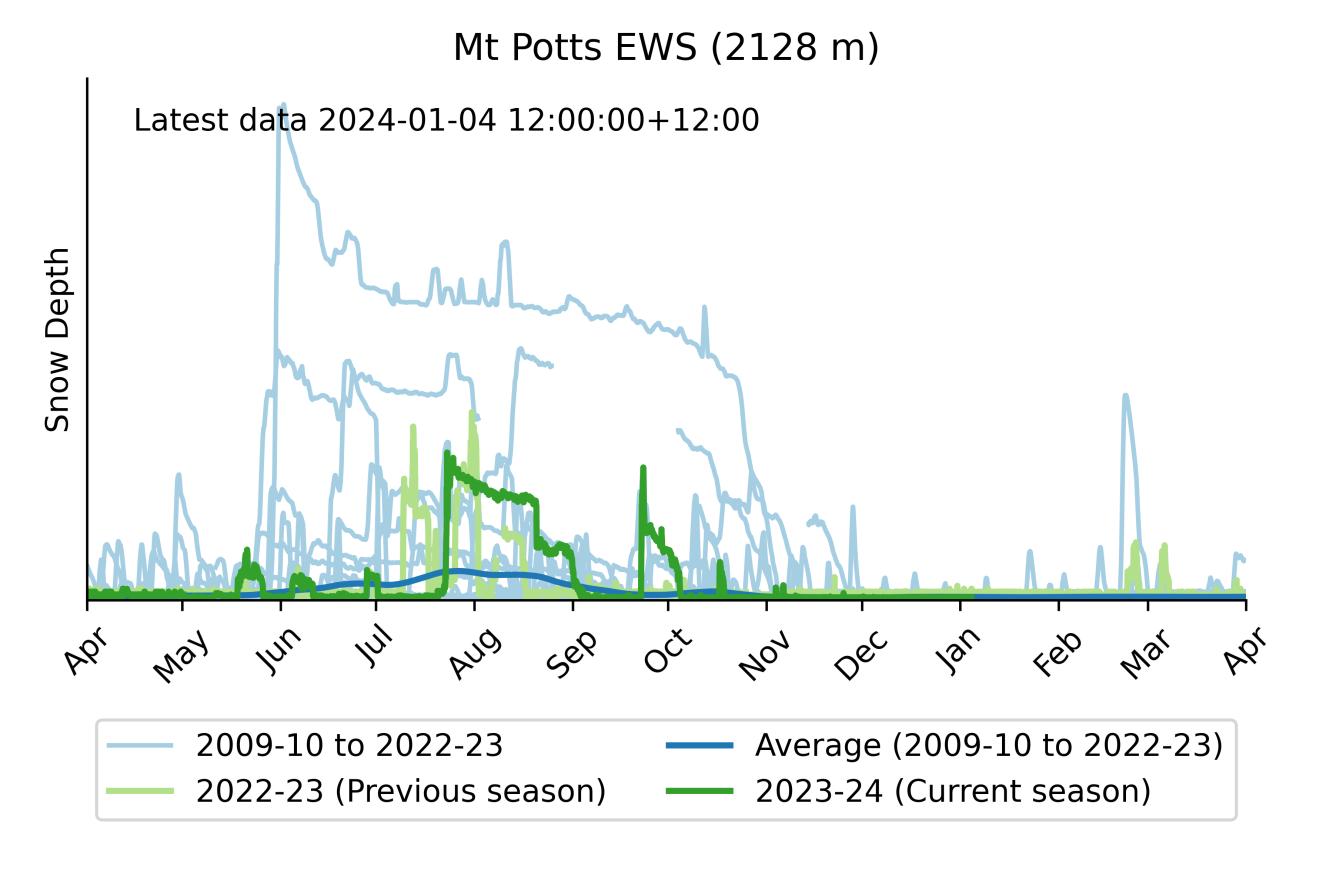
Accessing NIWA SIN climate data
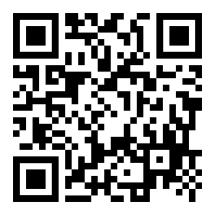
https://fireweather.niwa.co.nz/
User friendly – less sites

https://cliflo.niwa.co.nz/
All sites – clunky
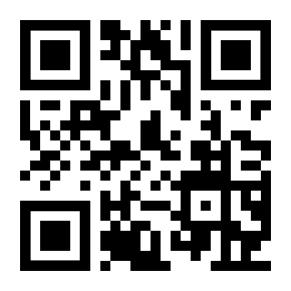
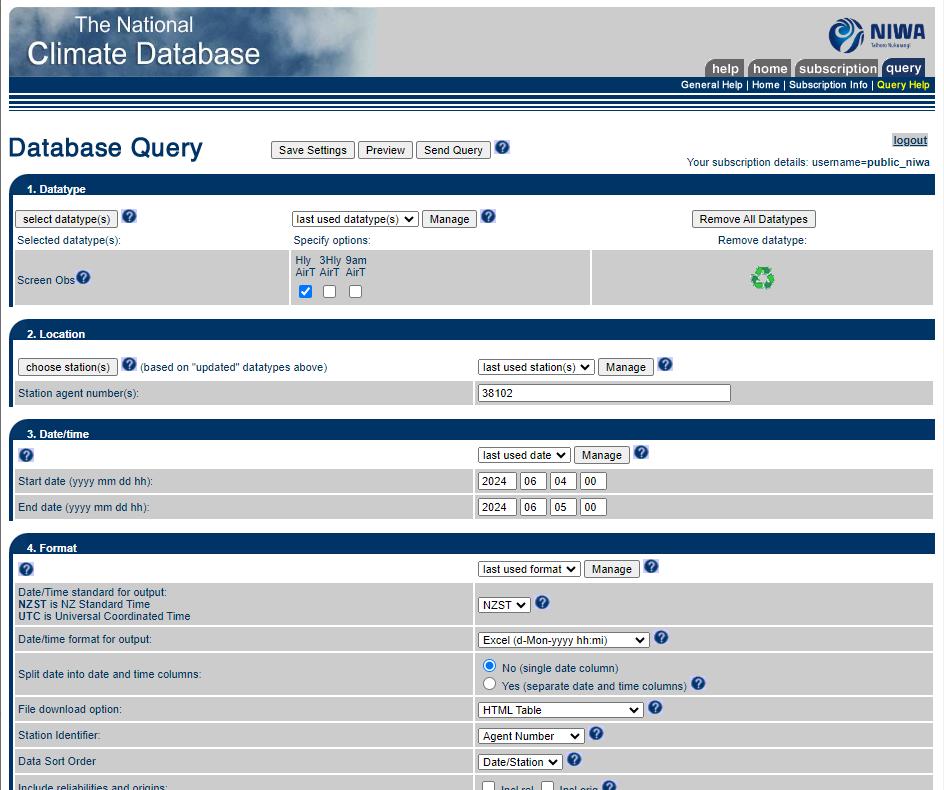


NIWA owned since 1 July 2022 (site installed June 2020)

Rainfall (tipping bucket), snow depth, RH, Temp, pressure, wind speed/dir, solar rad
• Lambrecht Rain(e) precip gauge – Heated hybrid tipping bucket/weighing gauge – for rain+snow
• Potential replacement for Geonor weighing bucket gauge

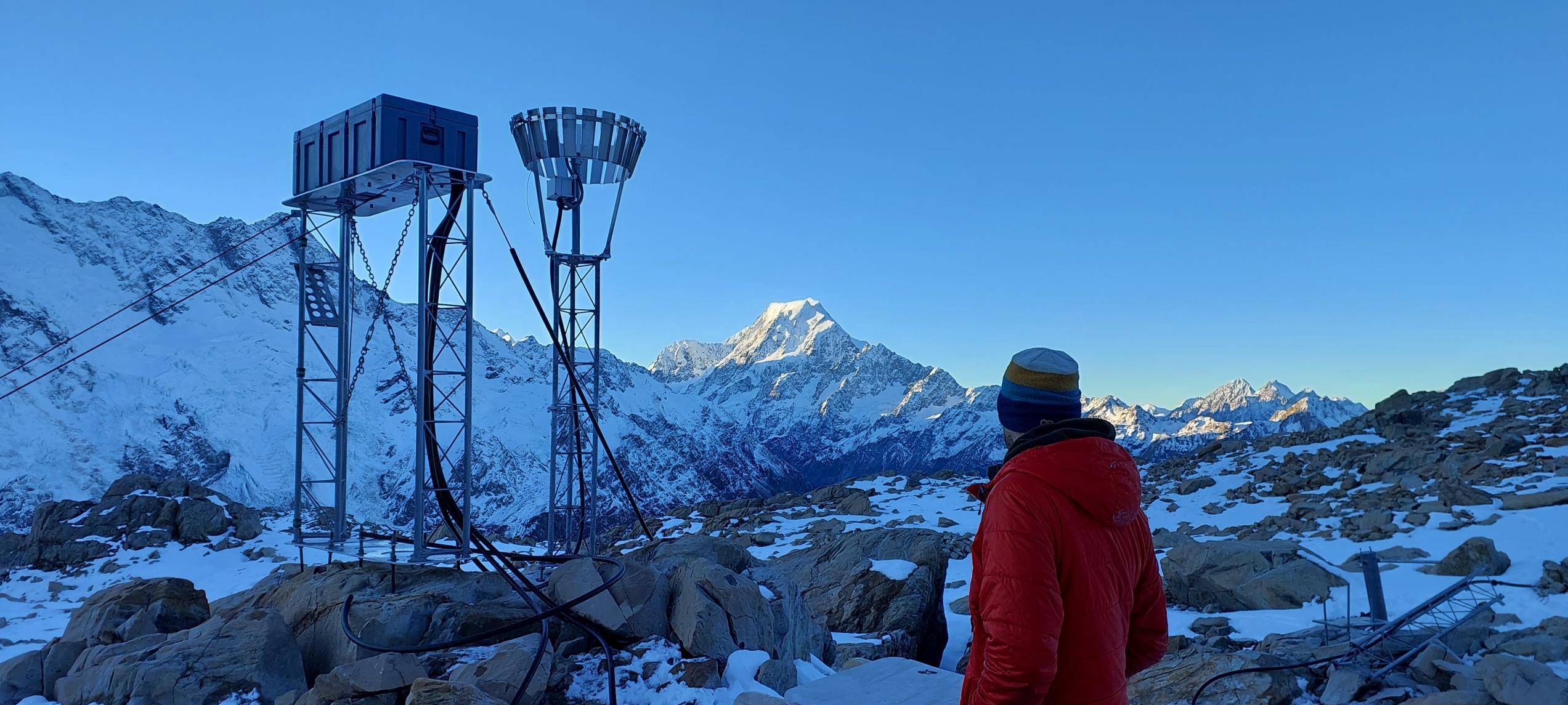
Lambrecht Rain(e) precip gauge.
• Heated hybrid tipping bucket/weighing gauge
• Powered by EFOY Pro methanol fuel cell with 3 * 24 kg methanol containers.
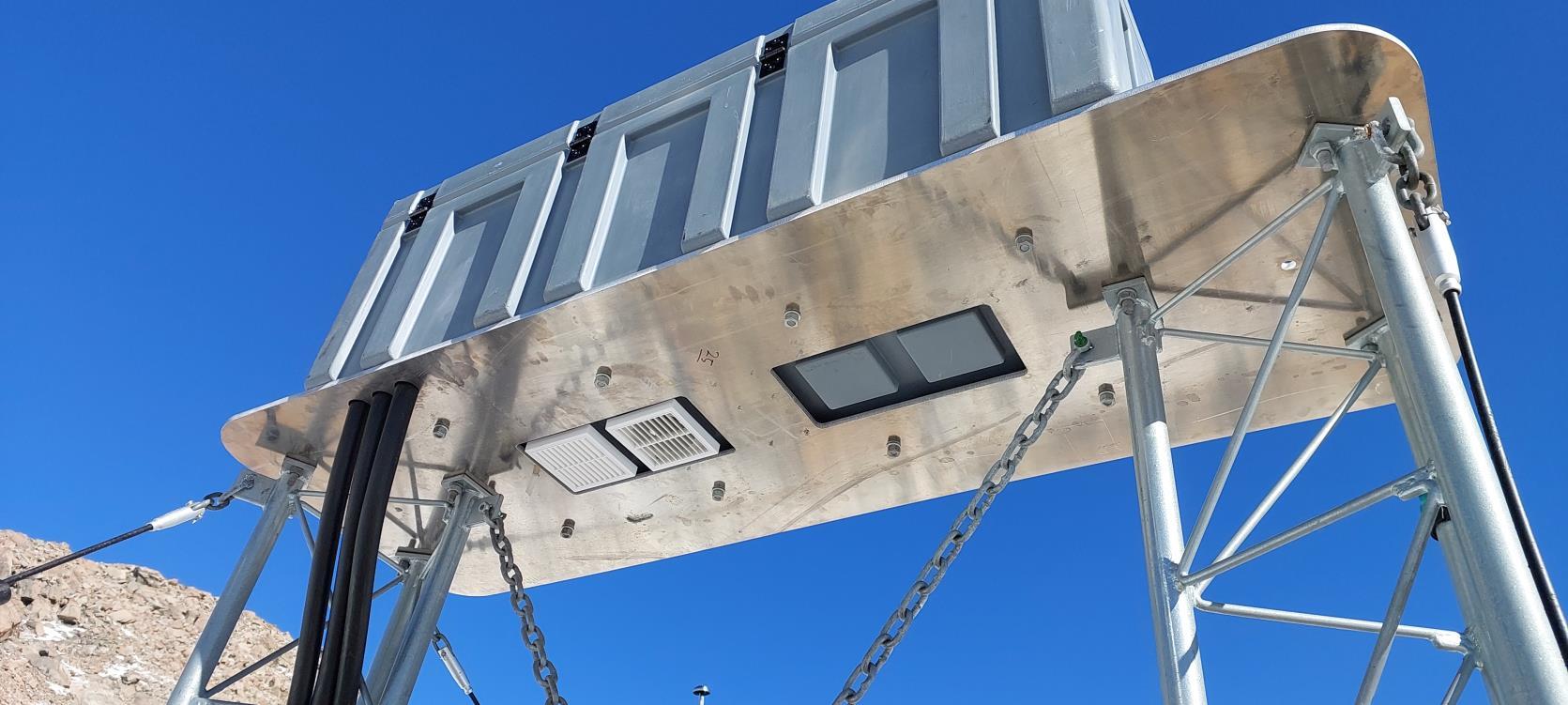

New precipitation measurement at Otago Uni Pisa range site
• Geonor gauge with good access
• 1500 m a.s.l.

https://www.otago.ac.nz/s urveying/potree/pub/mrc/ projects/snotago/pisasnow-site/pisa-aws
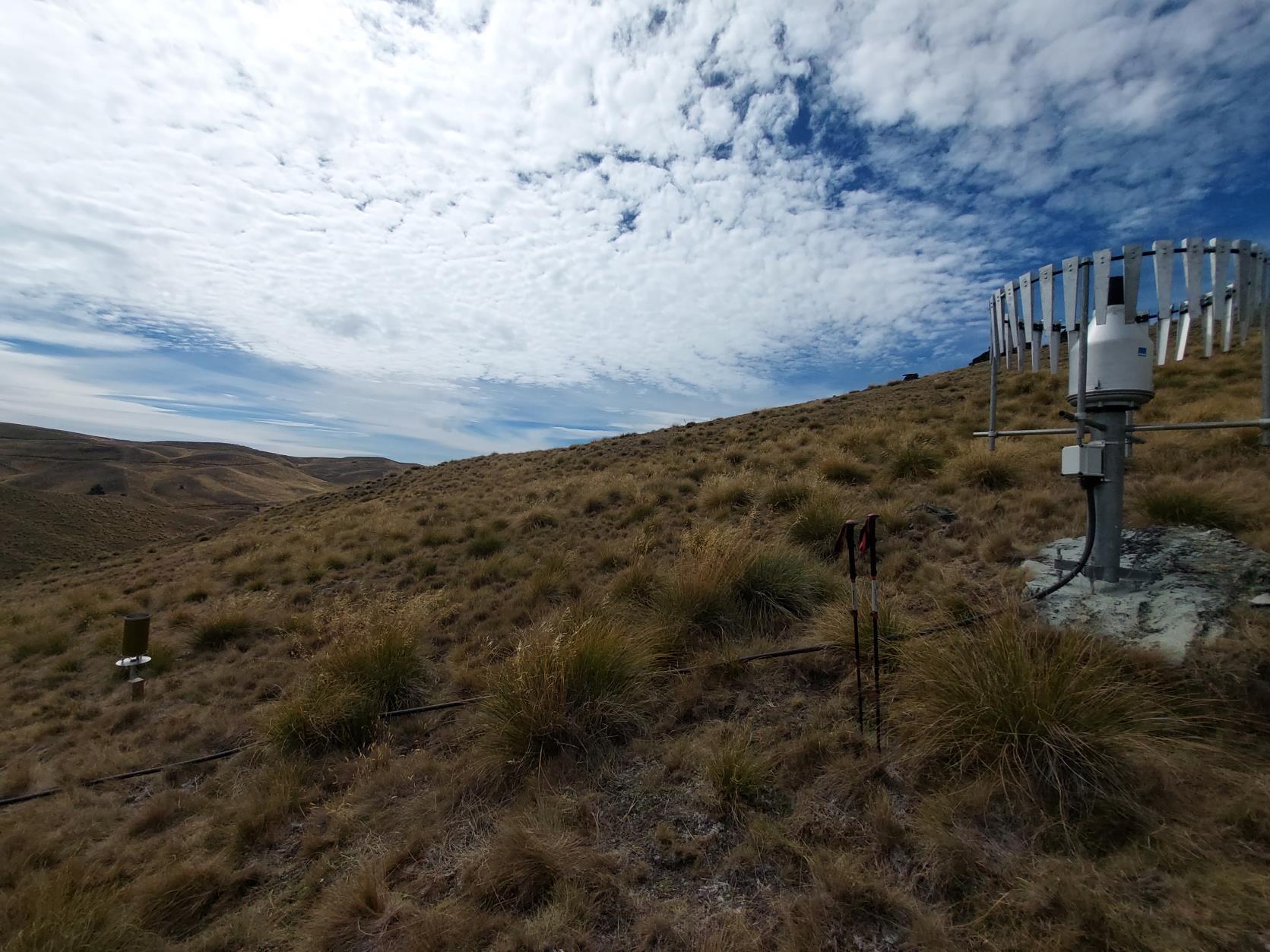
• Images 3 x day
• Low-res telemetered in near-real-time
• High-res downloaded at site visits
• Available for research
• Contact: Lawrence.Kees@niwa.co.nz


• ‘snow off’ DEM
• ‘snow on’ in winter
• Credit: Jochen Bind, Lawrence Kees

3-year project (Oct 2023Sept 2026)
End goal:
National-scale snowpack analysis + forecast
Stakeholders: Hazard (flood + snow) and water resource sectors

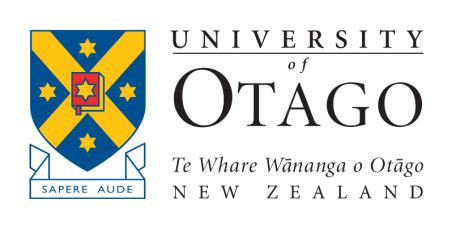

• Currently in set up phase
• Wider feedback once prototype forecasts available later in 2025
• Email updates if interested.
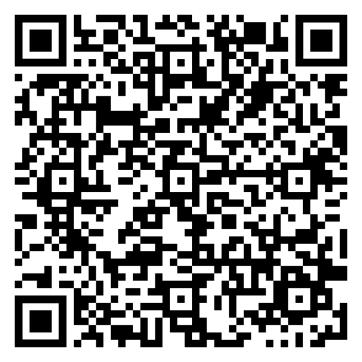
https://niwa.co.nz/hazards/better-runoff-and-hazardpredictions-through-national-scale-snowmelt-forecasting
Project phases
Optimise snow model ensemble at weather station locations
Test satellite snow data assimilation at catchment-scale
Develop operational forecast at national-scale
• Data from all SIN sites
• Air temperature during snowfall and rainfall events (2013-2017)
• 50%:50% rain/snow @ 0.9°C
• Credit: Rasool Porhemmat
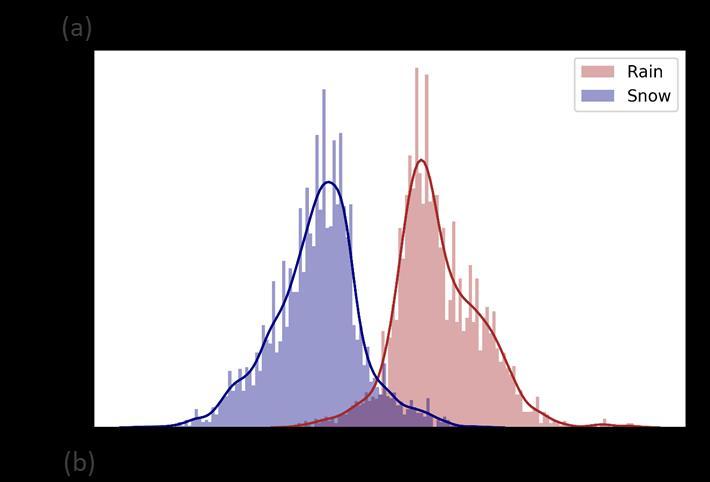
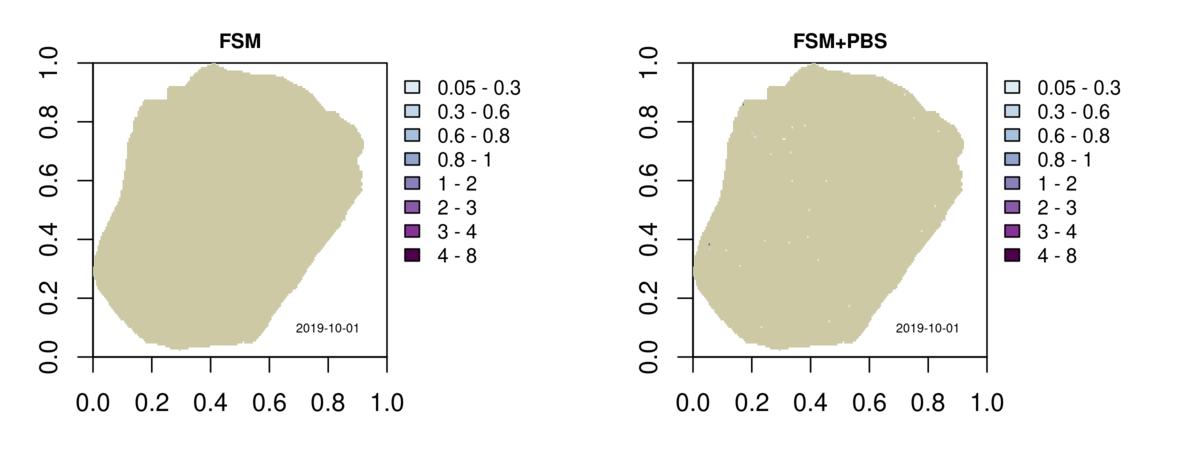
https://github.com/RichardEssery/FSM2
https://github.com/ealonsogzl/MuSA

June, July, August forecasted precipitation change patterns precipitation change (mm/day)
Global atmospheric models: general agreement for wetter West Coast winters
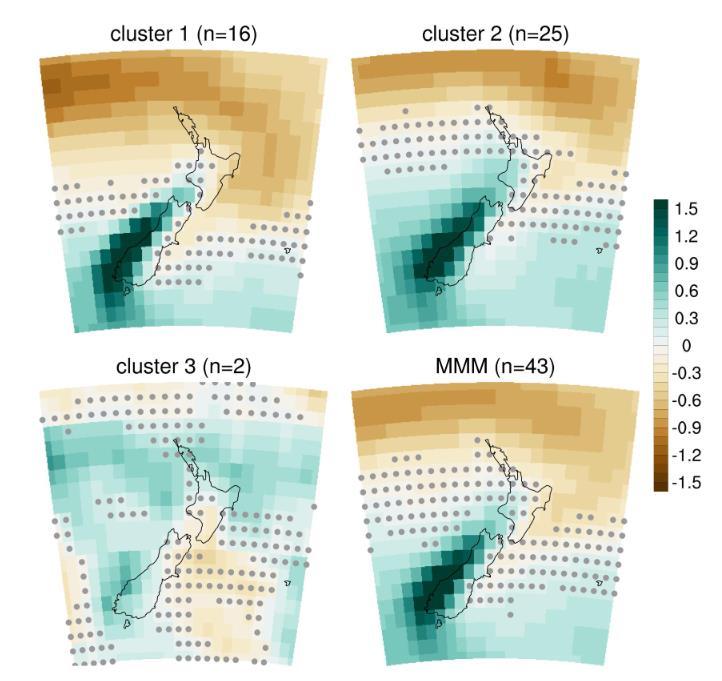
Multi-model mean
Full paper here

Gibson et al, 2024

Example of atmospheric river and extreme rainfall simulated by global model CCAM
But what we really want to know is…what about winter 2024???
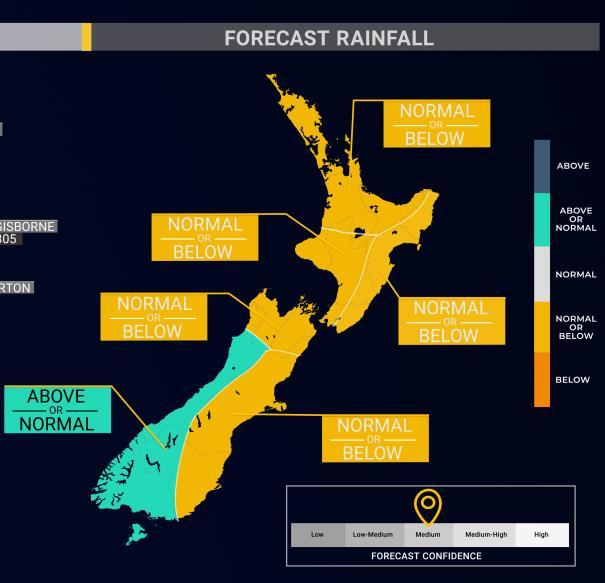

Nga mihi nui
Alice.Hill@niwa.co.nz
Jono.Conway@niwa.co.nz



Snow and Ice Network
https://niwa.co.nz/freshwate r/snow-and-ice-network
NIWA fireweather https://fireweather.niwa.co.nz/
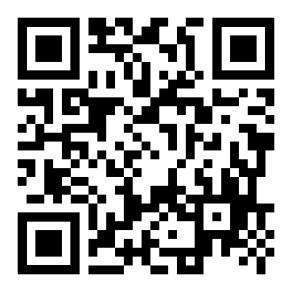
National climate database
https://cliflo.niwa.co.nz/

Pisa snow site AWS
https://www.otago.ac.nz/surve ying/potree/pub/mrc/projects/ snotago/pisa-snow-site/pisa-
aws

NIWA’s full winter weather outlook (ski season discussion @6:05)
Precipitation projection paper (Gibson et al, 2024)
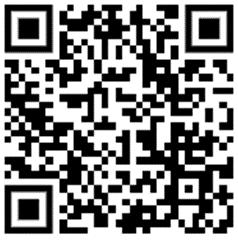
Snowmelt Forecast project
https://niwa.co.nz/hazards/betterrunoff-and-hazard-predictionsthrough-national-scale-snowmeltforecasting

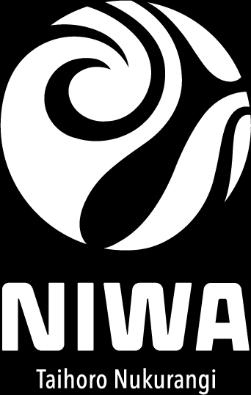

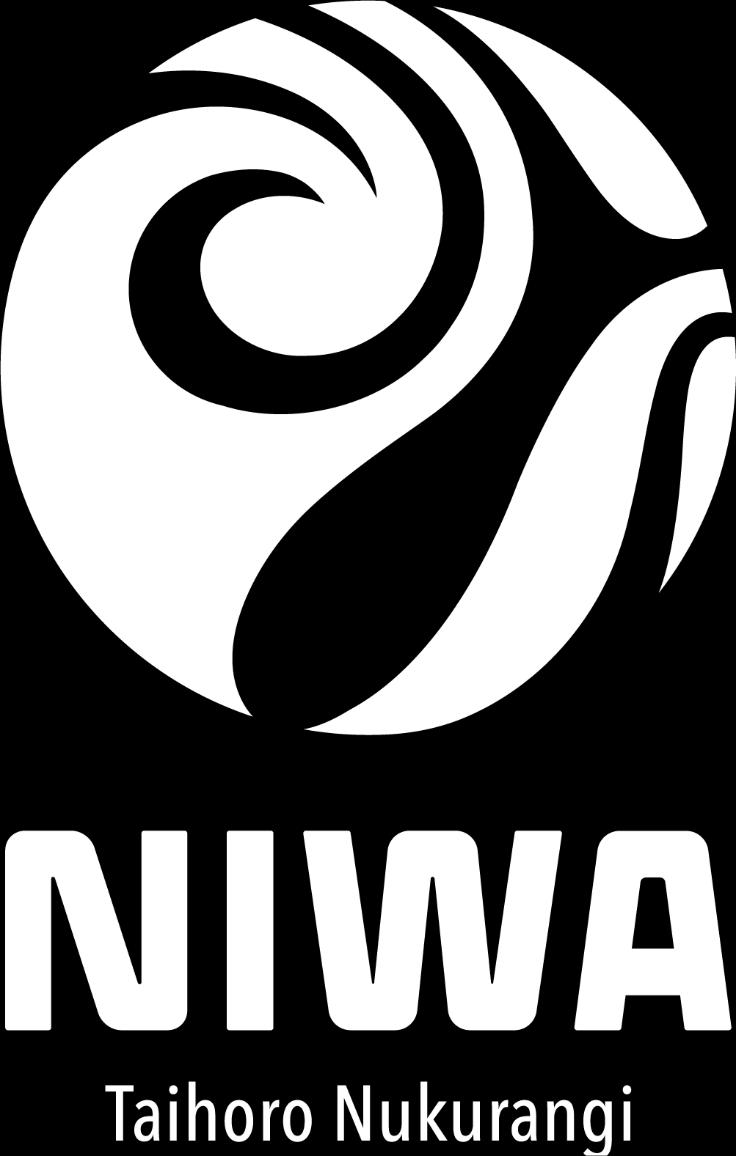
• Snow depth is measured using a sonic ranger to measure the distance to the top of snowpack
• A snow pillow provides continuous measurement of snowpack weight used to calculate density
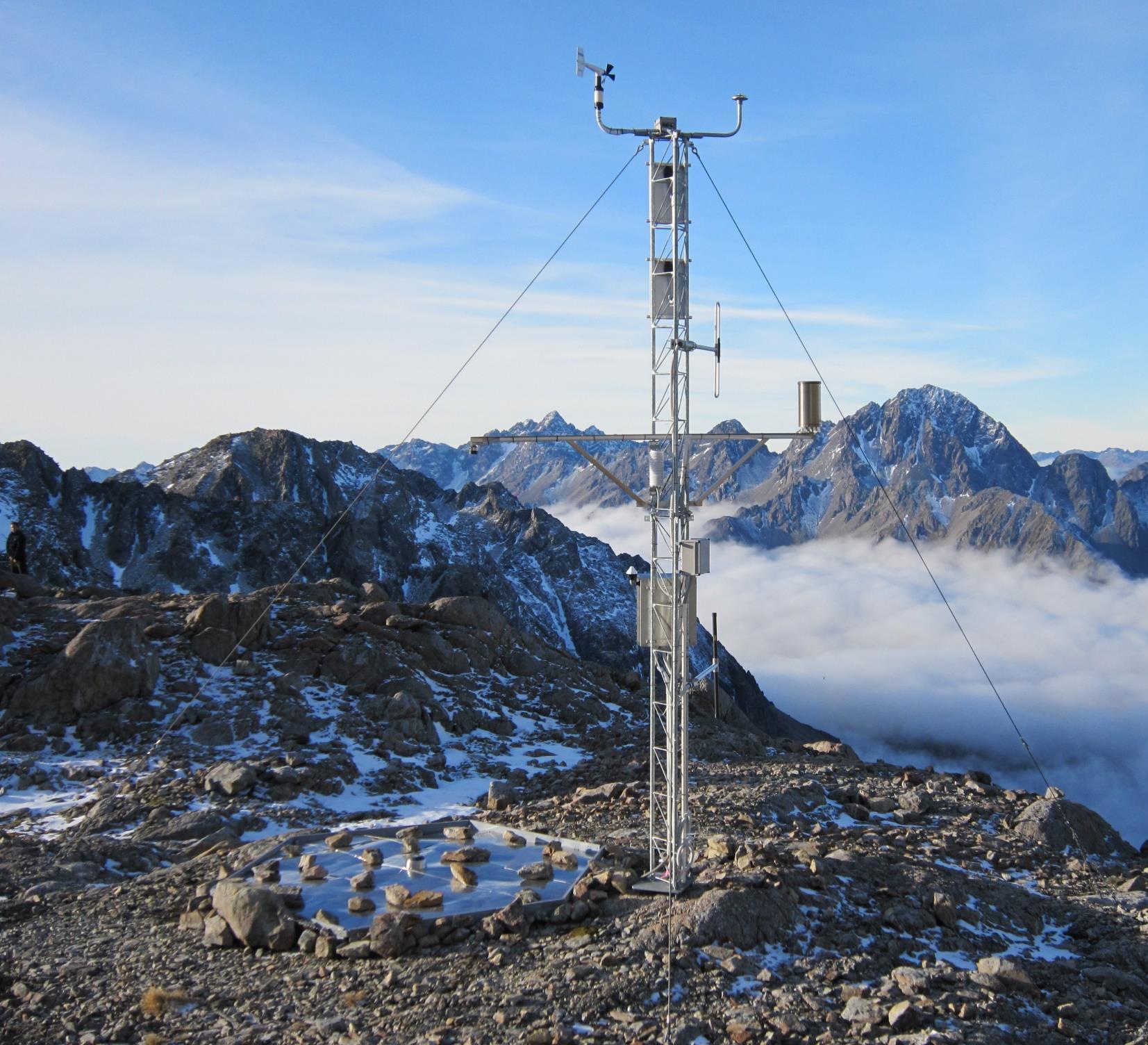
Geonor vs tipping bucket: Mt Larkins EWS (1900 m a.s.l.)
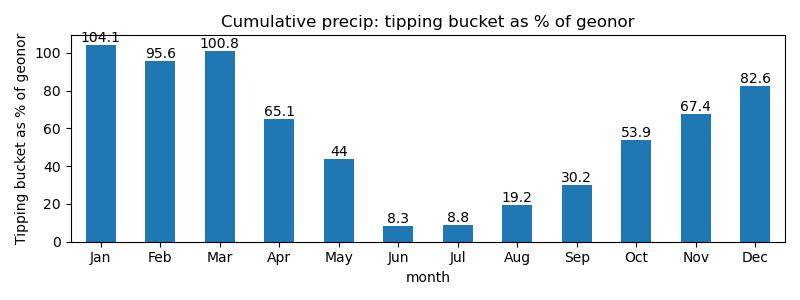
2: Monthly ratio of tipping bucket/geonor totals for periods of concurrent measurement May 2017-Dec 2019.


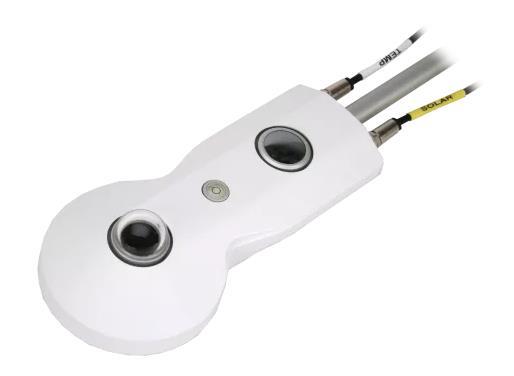



Kurt Walde
President Technical Commission
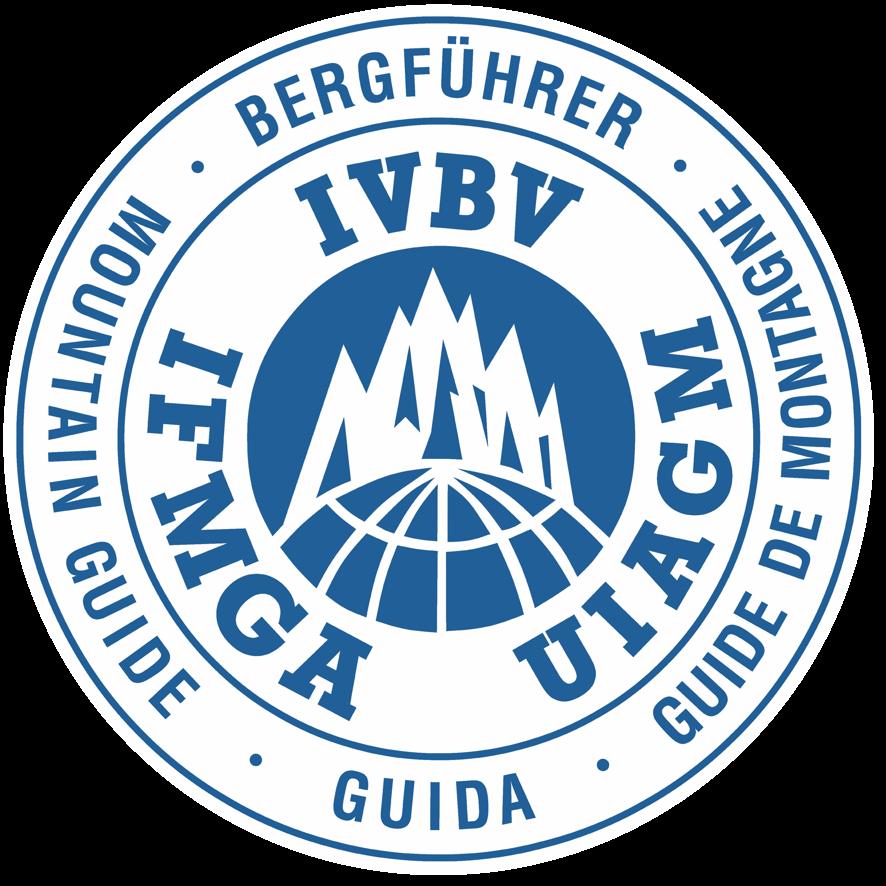
Ladies, Gentlemen, esteemed colleagues, and outdoor experts,
It is a great honor for me to stand before you today at the SHAC Conference in Wanaka. My name is Kurt Walde. I come from South Tyrol, an autonomous province in the north of Italy, located in the majestic Dolomites. My journey with the mountains began as a young boy, hiking the trails with my family. Little did I know that this passion would lead me to a fulfilling and challenging career.
For nearly 10 years, I have served on the board and worked for the Technical Commission of the IFMGA, the International Federation of Mountain Guide Associations. For the past year, I have had the honor of chairing it.
Together with Urs Wellauer, esteemed president of the IFMGA, friend, and colleague, we undertook the long journey from Italy and Switzerland to New Zealand because the topics we discuss here are of utmost importance. With the new president of the New Zealand IFMGA Mountain Guide Association (NZMGA), Jonathan Gillan, and the head of training, Gary Dickson, we certainly hit the jackpot. We are absolutely optimistic and look forward to a long-term, fruitful collaboration to meet the great challenges together.
I have been practicing as an IFMGA mountain guide for over 40 years. In all these years, I have never experienced such a
Kurt Walde IFMGA President Technical Commission

concentration of global events and upheavals as we are witnessing today. We mountain guides have traditionally been a conservative group, always careful to change as little as possible and leave everything as it always was. But those times are over.
Thankfully, because without change, we could not survive the great transformation in outdoor tourism. And I assure you, we will survive it well. We work hard every day to adapt to new challenges.
I remember a time when a summer would pass without thoughts of mudslides or melting glaciers. Today, these are constant concerns. I have seen trails disappear after the now frequent and intense thunderstorms. Ice axes, which we once used primarily for mountaineering on ice in the Dolomites, are now used more often to carve steps into gravel and sand faces hardened and smoothed by water. These changes are not just environmental; they impact our livelihoods and the safety of those we guide.
We face significant challenges: climate change and global warming, mass tourism, increasing public safety pressures, as well as regulations and restrictions on access to nature.
But why does the IFMGA network help overcome these challenges? What is special about the worldwide IFMGA network?
The key lies in collaboration and shared learning. Being a member of one of the IFMGA associations brings immense benefits to all of us.
Kurt Walde
President Technical Commission

Communities, mountain regions, nature parks, private landowners, and society in general benefit from a strong IFMGA network.
An example: Imagine, a somewhat remote and alpinistically valuable valley is cut off from the outside world by a large rockslide. Most of the area is private land and used for tourism. There is a cable car, huts, and other small private infrastructure. The owners of the area have always been keen to grant all IFMGA mountain guides worldwide free access and accommodation. A visionary approach, definitely. This preferential treatment for all mountain guides has spread rapidly through the IFMGA network. More a nd more IFMGA mountain guides decide to stay there with their clients for a few days or a week because they feel comfortable. The clients pay the regular rates and contribute significantly to the local economy. Mountain guides’ clients are typically well-off guests. In addition to the rockslide and extremely bad weather, some people are reported missing. Now the critical point: You can be sure that all present IFMGA mountain guides will quickly form a small network, try to establish contact with their colleagues outside and, of course, coordinate with local authorities and rescue services. As you see, in every second sentence, the IFMGA network plays a crucial role.
The success of the IFMGA is based on its internationally established training standards. These standards are not mere guidelines but the foundation upon which our professionalism and safety practices are built.
Kurt Walde IFMGA President Technical Commission

Uniform Standards:
• Comprehensive Training: Our mountain guides undergo rigorous training programs that include, among others, rock and ice climbing, ski mountaineering, high-altitude expeditions, environmental awareness, and a variety of soft skills. This ensures that every guide has the ability to operate safely in diverse terrains.
o Imagine a guide in the Andes tackling a challenging ascent. The training ensures they are prepared for any eventuality, from sudden weather changes to altitude sickness.
• Consistent Certification: The IFMGA training certificate is proof of a mountain guide's skills and reliability. It symbolizes the highest quality and safety.
o When clients see the IFMGA certificate, they know they are in capable hands, whether they are in the Alps, the Rocky Mountains, or right here in the Southern Alps of New Zealand.
o The same applies to authorities, municipalities, parks, landowners, and other stakeholders who recognize the globally protected, unique IFMGA logo.
Professional Principles:
The mountains demand respect and responsibility. As guardians of these natural areas, we are guided by a firm ethical framework:
Kurt Walde
President Technical Commission

• Safety First: Every decision we make prioritizes the safety of our clients and ourselves. This principle is deeply rooted in our training.
o In recent years, I have faced the spontaneous frustration of individual clients when I had to cancel the climbing tours they so desired because proceeding would have put them at risk. It was never an easy decision, but it was always the right one.
• Environmental Protection: We recognize the mountains as a shared resource and commit to preserving their integrity for future generations. Admittedly, this is somewhat self-serving because we do not want our workplace spoiled.
o Efforts in Peru to clean the mountains and minimize our footprint have been exemplary. Recently, IFMGA guides conducted a significant clean-up operation in cooperation with local conservation groups.
• Professional Integrity: Transparency, honesty, and respect characterize our relationships with clients, colleagues, and local communities.
o Building trust is paramount. Whether it's a novice climber or an experienced adventurer, our integrity ensures they have the best possible experience. After all, valuable experiences are also a form of sustainability.
Kurt Walde
President Technical Commission

The benefits of a globally organized community of outdoor professionals extend far beyond our immediate industry. Society as a whole can benefit:
• Economic Growth with Considerations: Professionally guided experiences in tourism can generate significant revenue for local economies. IFMGA mountain guides undeniably contribute to sustainable economic development by attracting and managing responsible tourism.
o In South Tyrol, the targeted expansion of high-quality tourism offerings has greatly strengthened local businesses, from hospitality to retail, creating jobs and enhancing public welfare. Conversely, a year ago, the government introduced a cap on tourist beds, recognizing that despite the best efforts, the critical point of overtourism has been surpassed in some areas. Overtourism, or mass tourism, is exactly the opposite of what our member associations desire.
• Community Development and Public Safety: Geological surveys, expertise in alpine tourism, snow and avalanche warnings, recognition and prevention of alpine dangers, organized mountain rescue, improvised and locally managed rescues, role modeling, and pioneering working methods in the mountains, as well as rope access techniques, are undoubtedly our most important competencies alongside guiding and teaching. We are strong in these areas and have our entire
Kurt Walde IFMGA President Technical Commission

IFMGA network behind us. Where such cooperation works, it brings sustainable value to all stakeholders in outdoor tourism.
Looking ahead, the IFMGA will continue to innovate and adapt. We are developing advanced training modules that focus on climate change adaptation, crisis management, and sustainable practices. These initiatives will ensure that our community remains resilient in the face of unforeseen challenges.
The IFMGA network is a powerful example of how international cooperation and shared standards can help address the challenges of our time. It is an example of strength through unity and flexibility through knowledge. Together, we can preserve and enjoy the mountains, and our profession, not only for ourselves but also for future generations.
Thank you for your attention.



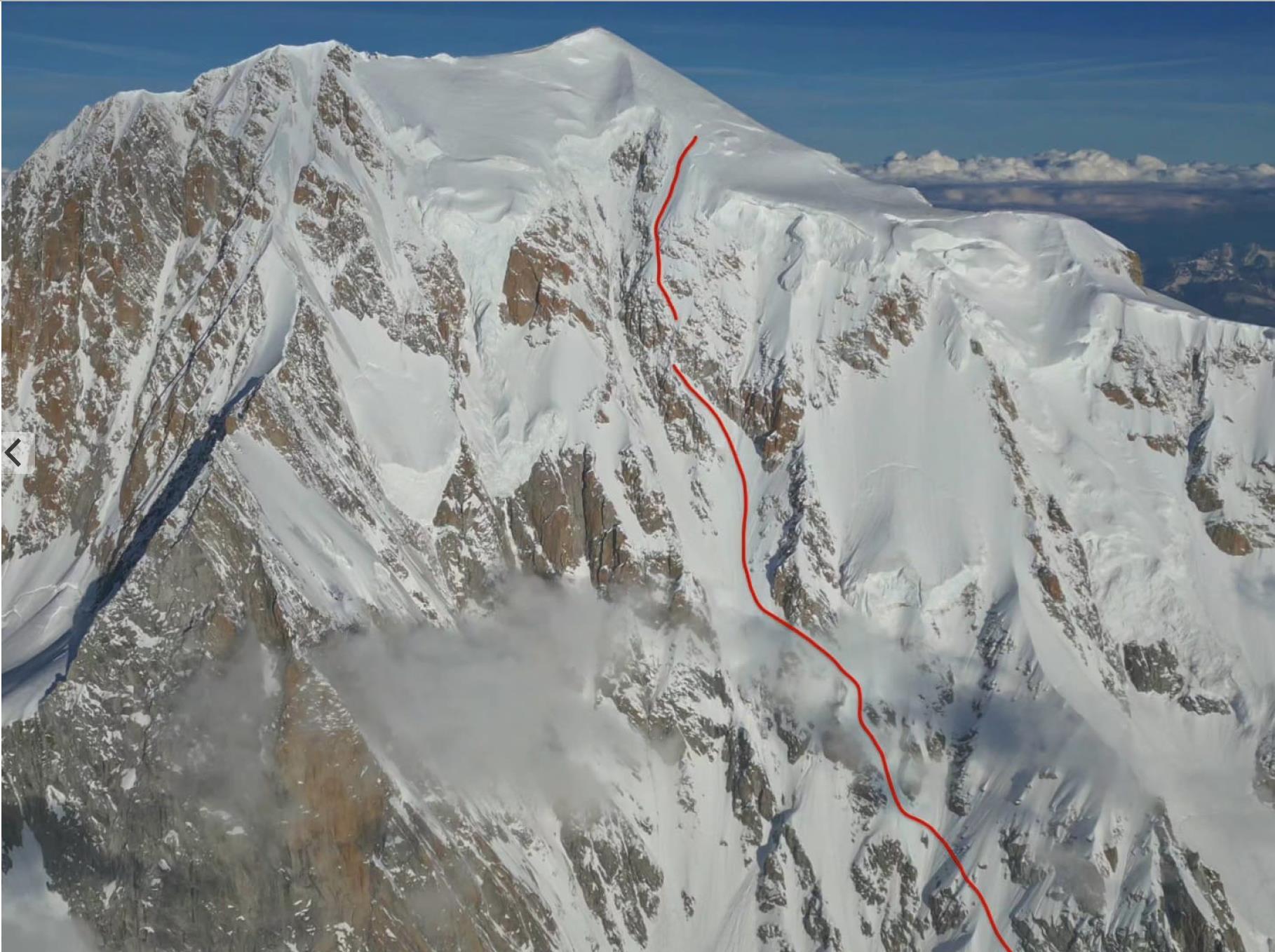

19 October 2023
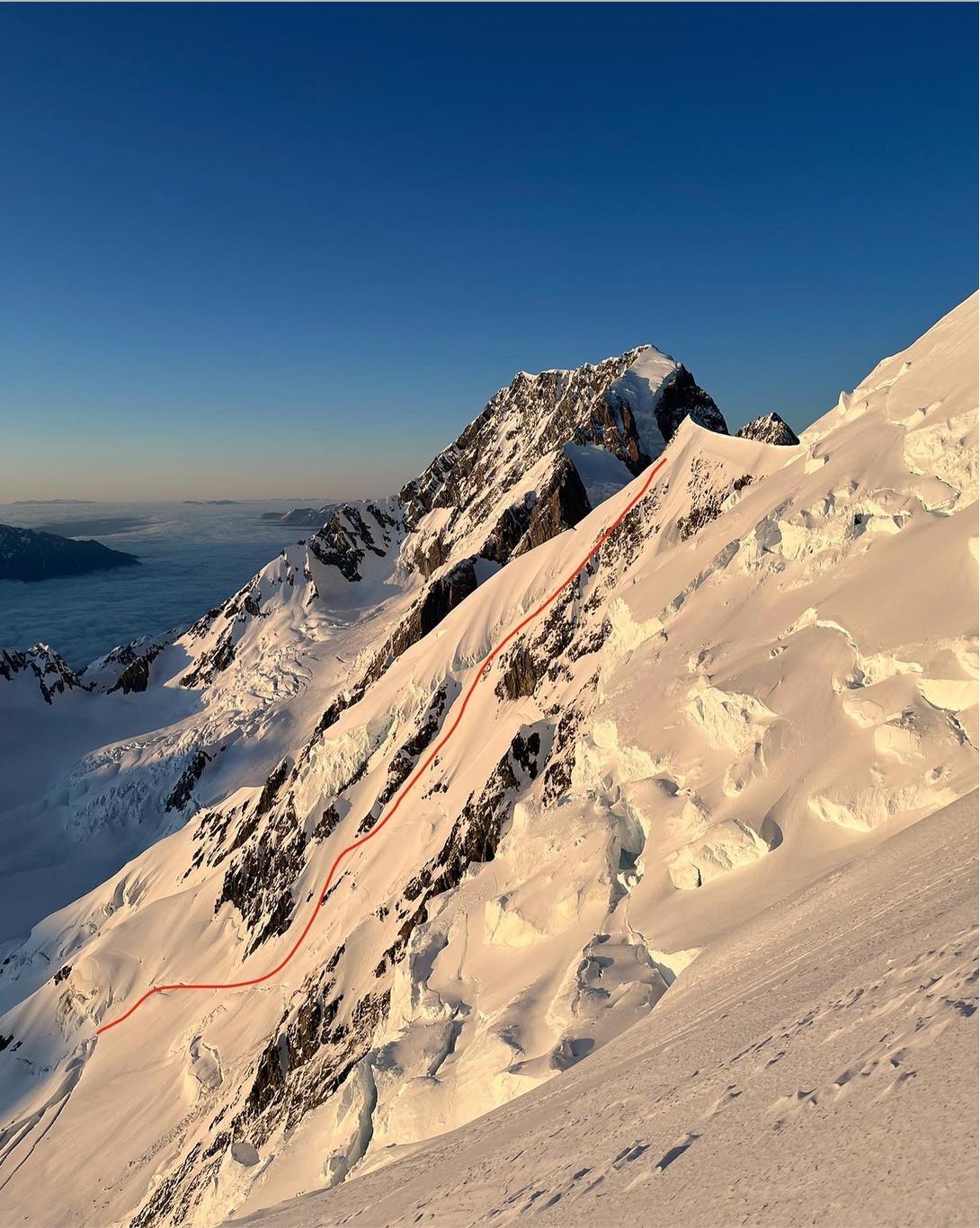
Mt Silberhorn, NE Face
12 October 2022
The building blocks. Detailing the skillsets and experience that are useful to undertake these trips.
Technical tools. Communication, decision making and general big picture techniques that apply to the physical act of moving through the terrain and completing a descent.
Risk Tolerance. My thoughts.
Learnings. Some anecdotal experiences and lessons which have been significant in my skiing journey. Te Horokoau/Mt Tasman, Syme ridge
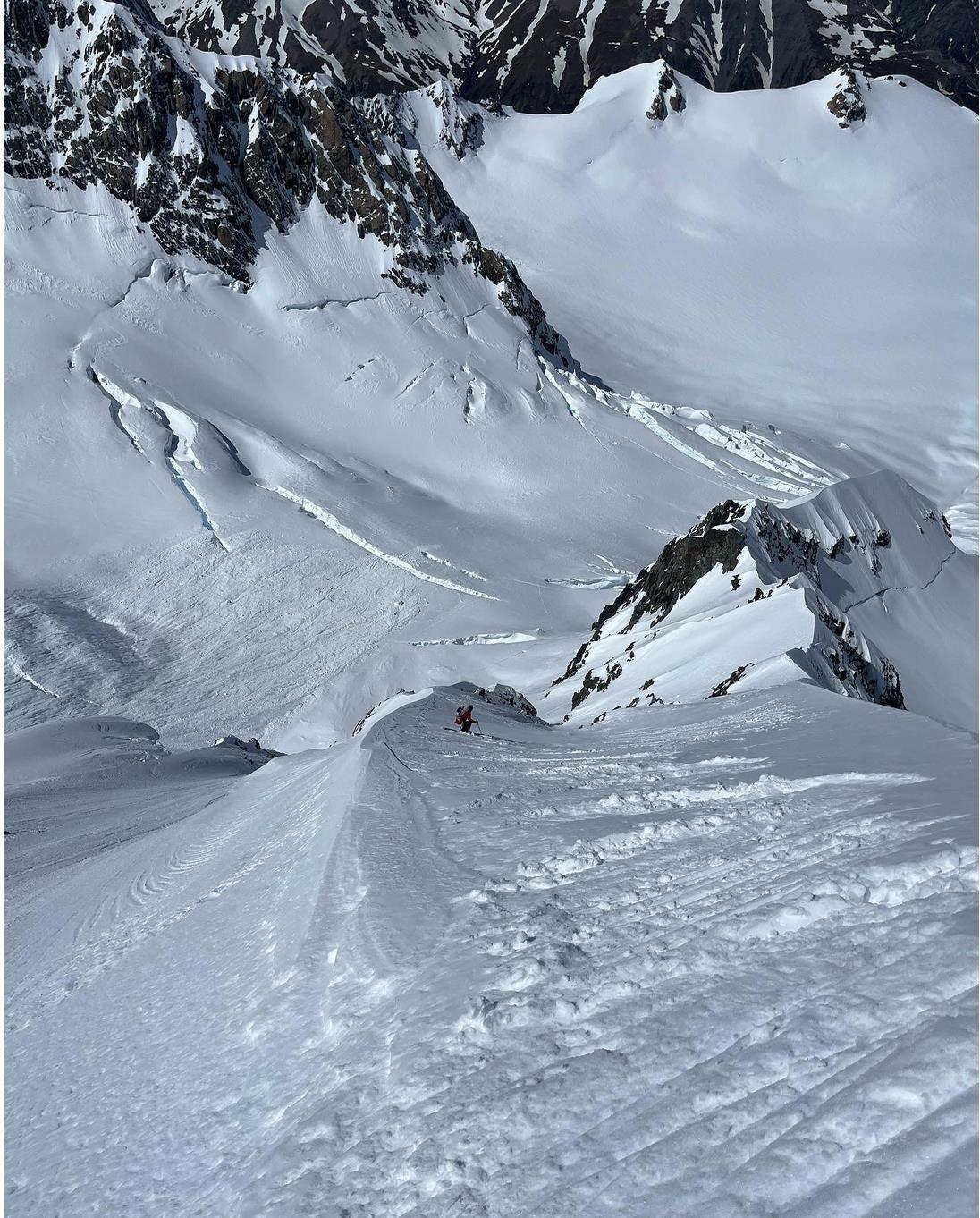
• Time in terrain. Regular time skiing and moving through tricky and steep terrain but removed from the intensity and greater consequence that the high alpine often represents. Skiing needs to be second nature to not sap critical mental bandwidth.
• Mountain Professional training and background. The skills learnt and maintained as a mountain professional are constantly drawn upon while on technical ski descents.
• Time spent in a team working in a high intensity environment. Normalising critical and honest communication while operating.
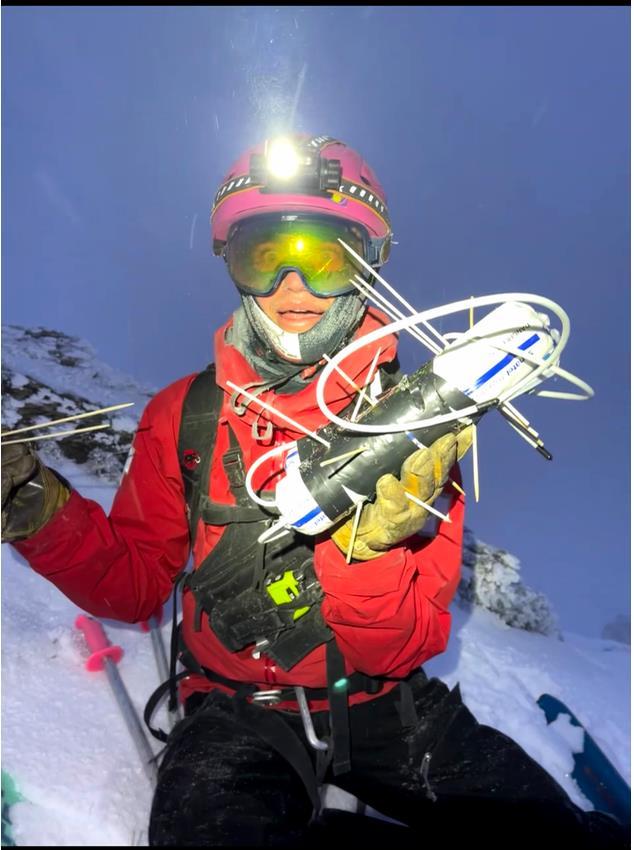
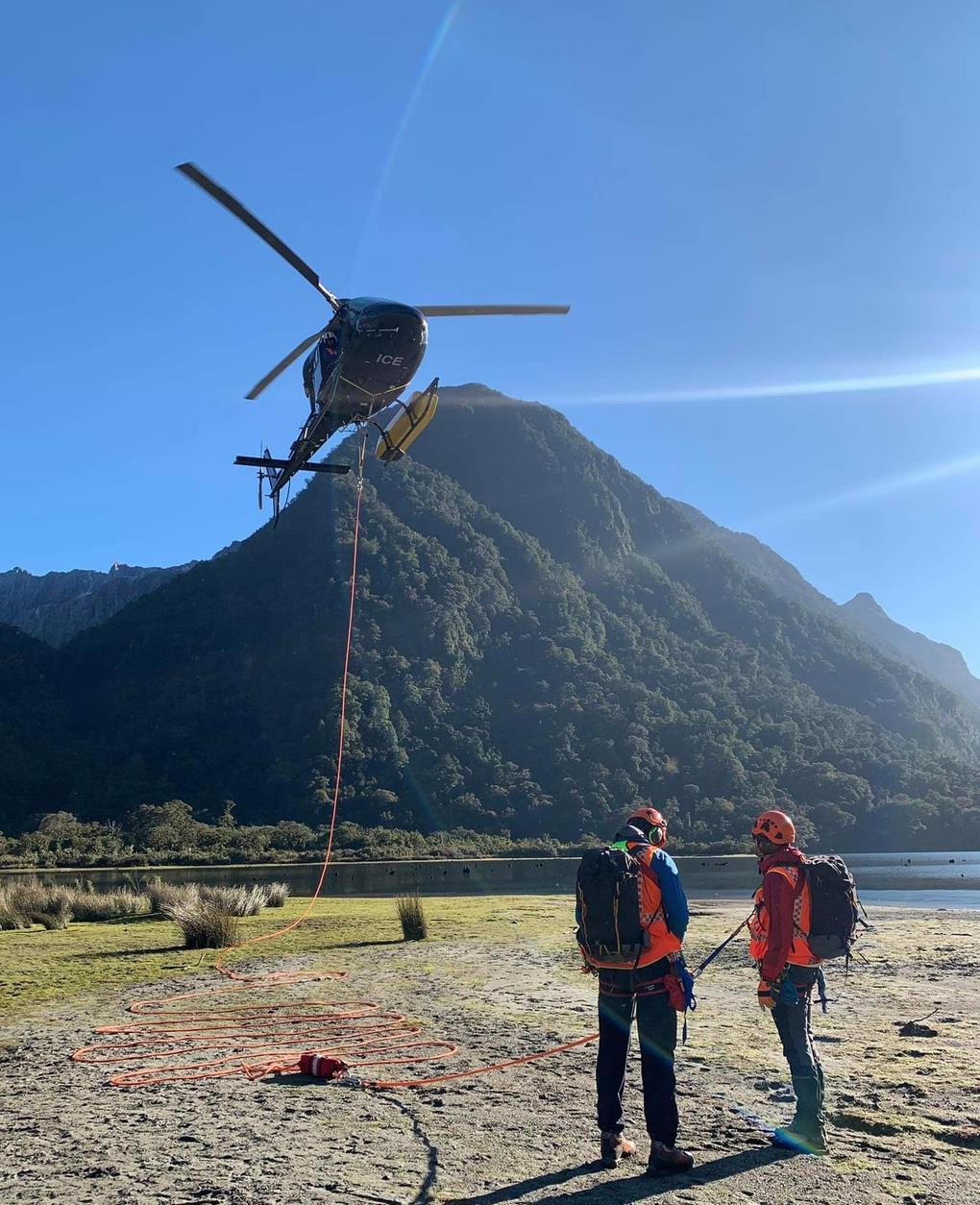

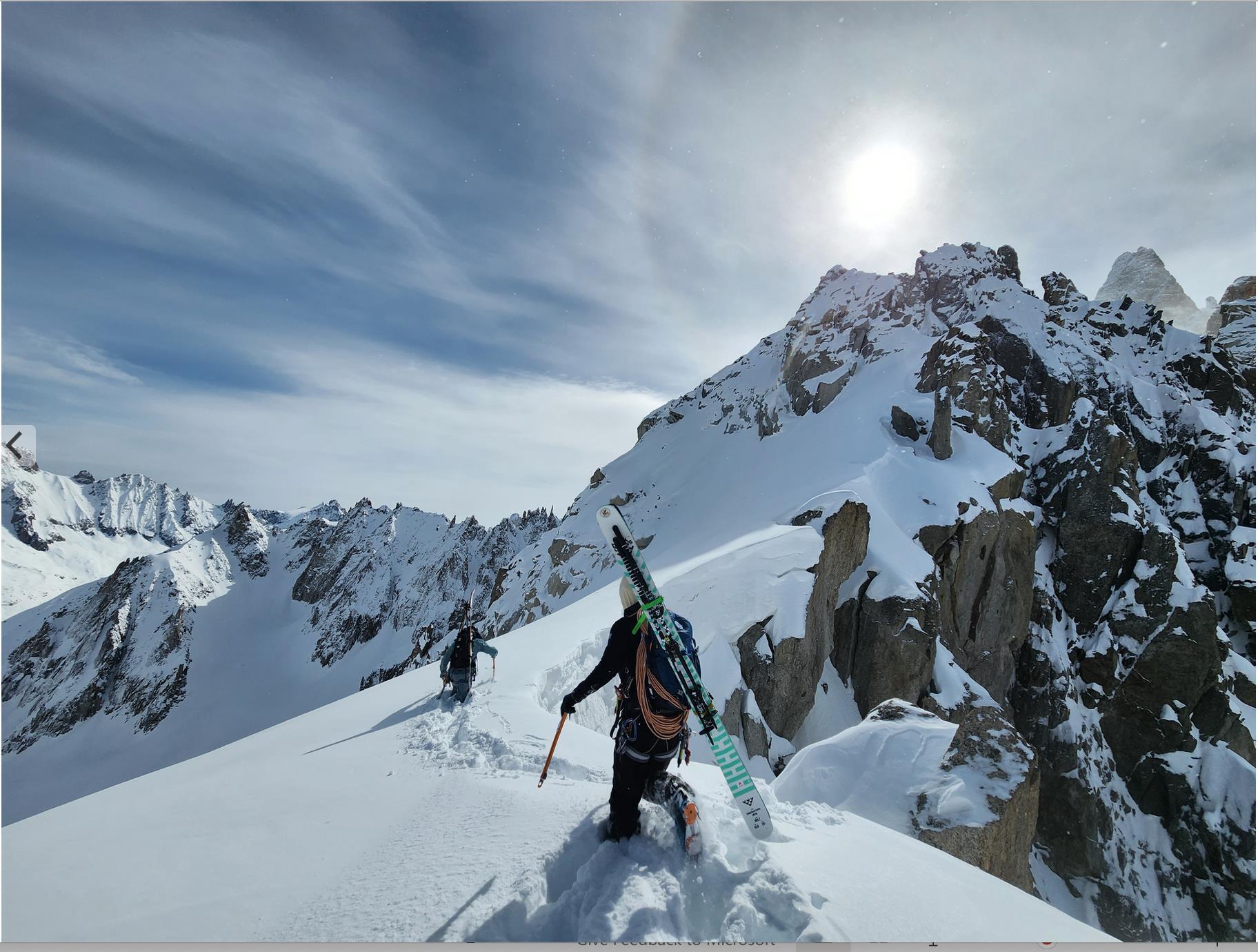
• Weather window.
• Recent weather and snow?
• Snowpack History.
• Forecast.
• Cross reference.
• Choose objective.
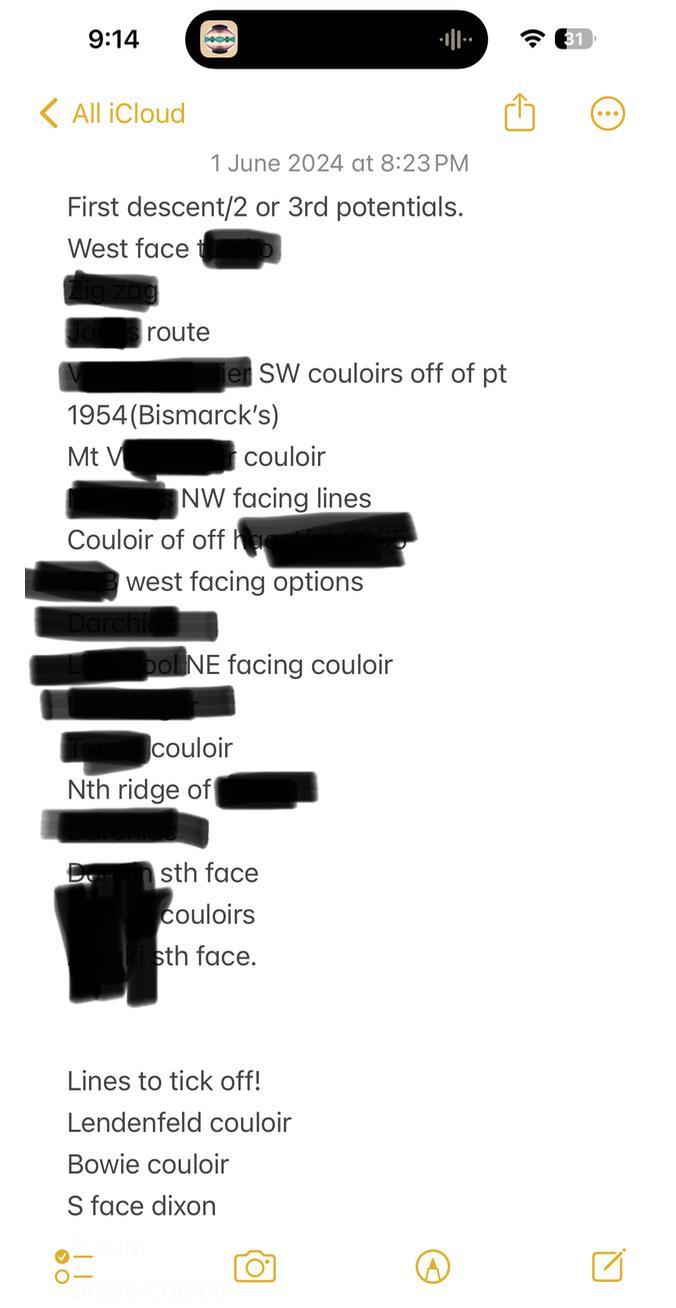
• Breaking these lines down and having agreed upon names for features on a face significantly aids efficient and clear communication while on a large and complicated face.
• Also beneficial for mentally managing the complexity of the entire task.
Aoraki Mt Cook, Caroline Face

• Practise and normalise including the why. For example “I think we should go down the left side of this gully as the sun effected snow will be better bonded to the ice.” Vs. “I think we should go down the left side of this gully.”

Speculation and forecasting should be two separate activities. So, ask yourself at these key times, do we have all the information needed to make an informed decision?
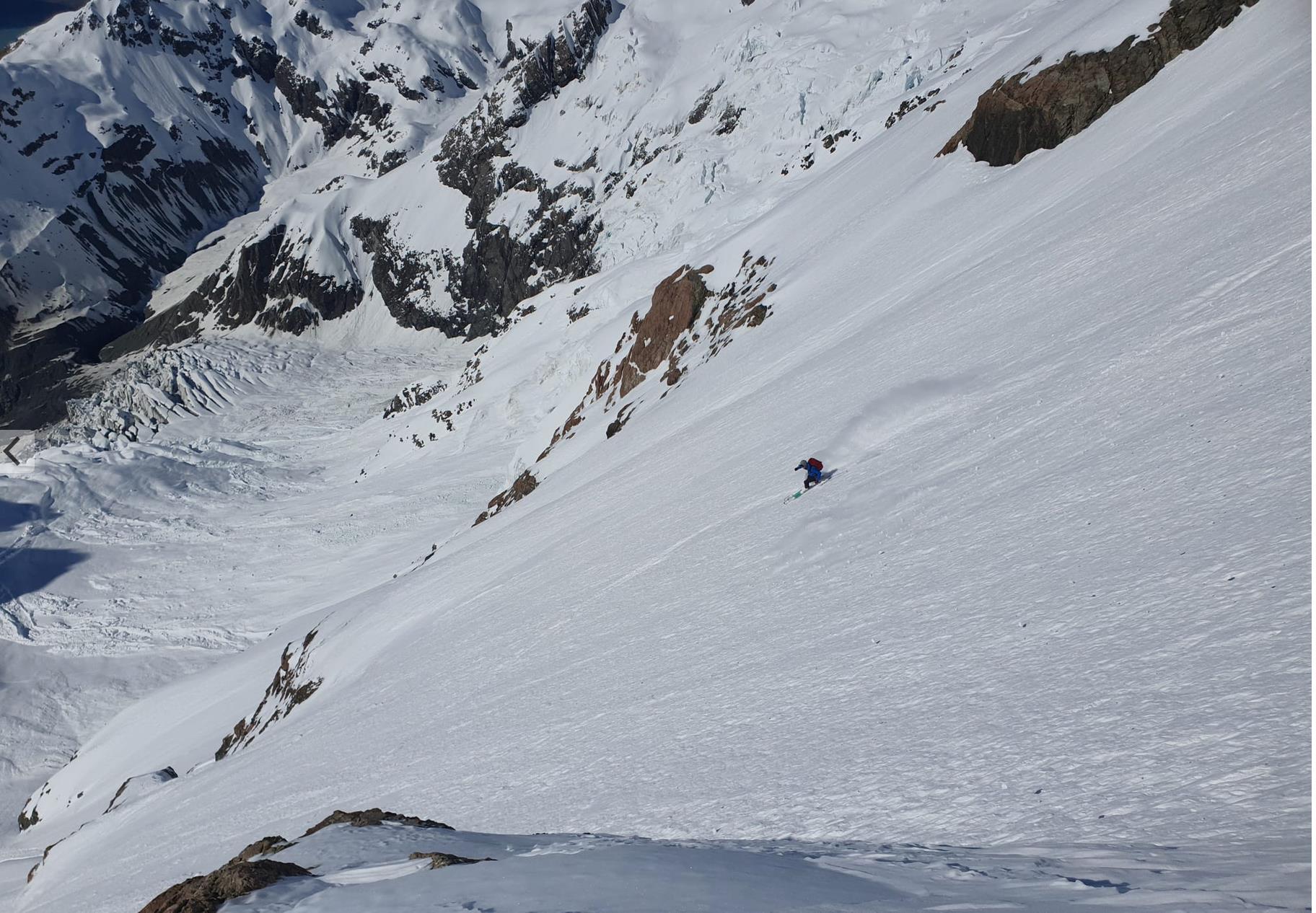


• Find a mountain partner who's tolerance matches yours.
• Accept that it is not a constant and be honest with yourself and others about where your tolerance sits.
Pikirakatahi Mt Earnslaw Sth Face
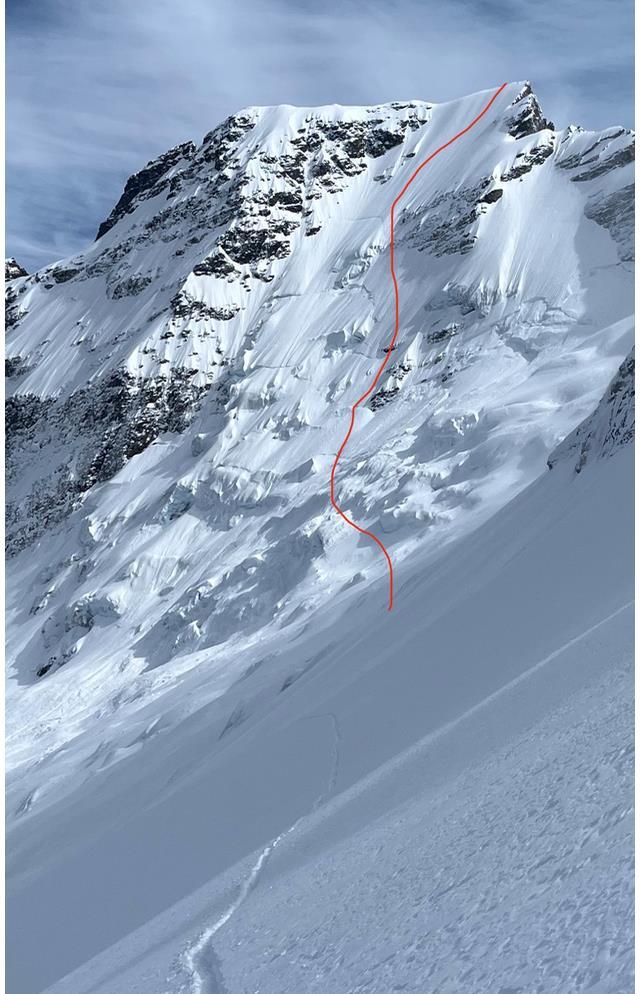
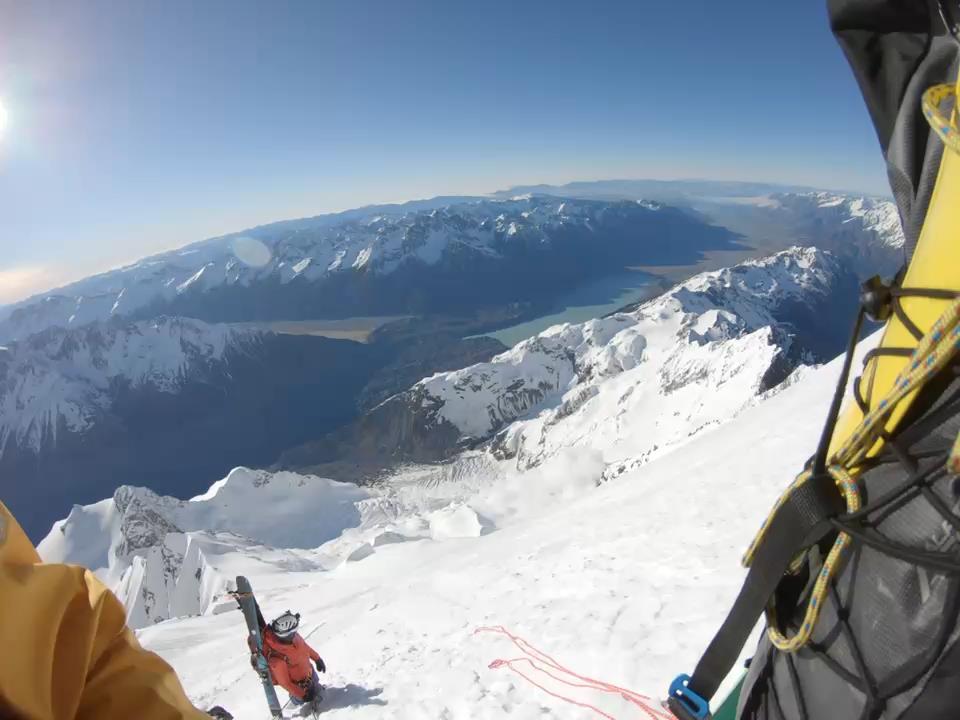
• Naturally intense reaction that kicked off speculation rather than forecasting.
• Spent extensive and unnecessary time discussing options in two separate locations prior to getting eyes on slope.
• Identifying that we could get info that would help with a decision either way took a surprisingly long time but once done made it very easy.
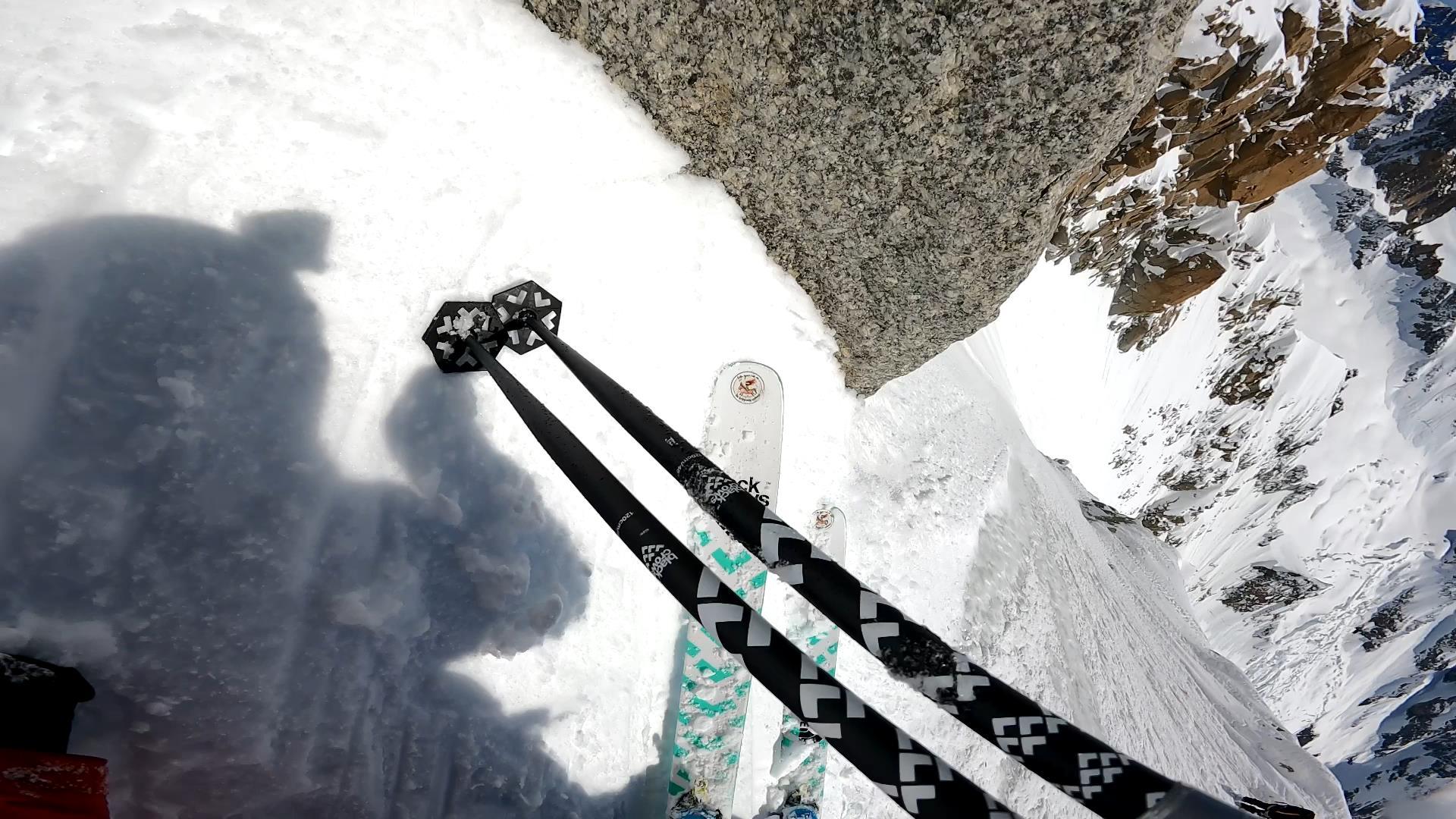
• I believe if I had heard the basis for Ross wanting to go to the more heat effected snow I would have agreed.
• Would have saved significant time and would have been less effort and hazard for Ross.
• If in doubt send some one else first.....
